An update from MBP December 9, 2022 mbbeef.ca







The following information is from the December 5, 2022 edition of Statistic Canada’s publication The Daily.
In September 2022, the livestock and animal products index rose 12.1% from the same month the previous year, as all livestock commodity indexes posted gains on a yearover-year basis. The primary contributors to the increase in price in the third quarter of 2022 were the higher input prices (particularly the costs of feed and fertilizer), tight feed availability and a decreasing herd size, mainly as a result of poor profitability and drought conditions in the Western provinces and the United States.
The cattle and calves index rose for an eighth consecutive month in September 2022, up 19.7% compared with September 2021. A contributing factor to the gain was the strong global demand for beef during the third quarter of 2022. Furthermore, the value of Canadian cattle exports for immediate slaughter increased 19.2% in the third quarter of 2022 compared with the third quarter of 2021. In contrast, the quantity of cattle exported from Canada decreased by 5.2% during the same period, reflecting the higher demand for Canadian cattle and calves.
For more details see: https://www150.statcan.gc.ca/n1/dailyquotidien/221205/dq221205e-eng.htm?CMP=mstatcan
The following information has been provided by Manitoba’s Emergency Measures Organization.
Manitoba EMO’s Disaster Financial Assistance program is working to issue assistance payments to producers as quickly as possible. For producers that have experienced livestock losses as a result of the 2022 spring flood, please ensure you have submitted the following mandatory documents otherwise your claim cannot be evaluated. Mandatory documents include:
1. A completed and signed Farmland Owner’s Authorization form
2. A completed Insurance Declaration form (completed by your property insurance provider)
3. A signed, original copy of the Financial Assistance Application form
4. Veterinary Certificate completed and signed for verification of livestock loss.
5. Tax information (send copies of all that apply to you):
1. For a farm that is a sole proprietorship, a complete copy of the most recent T1 General income tax return or notarized proof of income and Statements of Income and Expense.
2. For a farm that is a partnership, a copy of your partnership agreement and a complete copy of the most recent T1 General income tax return.
3. For a farm that is a limited company, a copy of your articles of incorporation, a complete copy of the most recent General income tax return and statements of income and expenses.
The documents can be sent via email, fax or by mail. PLEASE INCLUDE YOUR DFA CLAIM NUMBER (200204xxx) WHEN SUBMITTING DOCUMENTS.
Manitoba EMO – DFA
Fax: (204) 945-4929 1525 - 405 Broadway Winnipeg MB R3C 3L6 Toll Free: 1-888-267-8298 dfa@gov.mb.ca
For more information on the disaster financial assistance program, please visit our website at: DFA for Farms
(December 9, 2022 Province of Manitoba News Release) Manitoba Natural Resources and Northern Development advises two additional cases of deer infected with chronic wasting disease (CWD) have been detected in Manitoba.
CWD is an incurable, fatal disease that affects members of the deer family (cervids) including white-tailed deer, mule deer, elk, moose and caribou. Animals infected with CWD may appear healthy until the later stages of the disease. If the disease spreads and becomes endemic to Manitoba, there is a serious risk that CWD will threaten the health of all cervid populations in Manitoba.
First detected in Manitoba in 2021, the two recent cases of CWD were identified from mandatory biological sampling submissions of animals harvested near the communities of Dropmore and Coulter where CWD was previously detected. Both cases occurred in male mule deer.
To assist in monitoring for CWD, the province expanded the harvested cervid mandatory biological sample submission zone in 2022. All licensed hunters in the expanded mandatory sample submission area are required to provide
head and upper neck samples of harvested white-tailed deer, mule deer and elk for CWD testing. A list of sample drop-off locations is posted here: www.gov.mb.ca/nrnd/fishwildlife/pubs/fish_wildlife/sample-drop-offdepots.pdf.
CWD is not known as a human health risk, but meat from a CWD-infected animal is not recommended for consumption. Hunters who are active in areas where CWD is a concern should have harvested animals tested, practise safe carcass-handling protocols and avoid consumption of any animal that has tested positive for CWD.
Samples results from harvested animals will be posted on the province’s website www.gov.mb.ca/nrnd/fishwildlife/wildlife/cwd-results/cwd-results.html as they become available.
Hunters with concerns or questions about an animal that has been harvested can contact the province by email at CWD@gov.mb.ca or by calling 1-204-638-4570.
For more information, visit www.manitoba.ca/cwd

same period in 2021. The following increases and decreases are being highlighted:
Overall the category had a very minimal decrease of 1% (864 to 855), with Breach of Peace down 18% (194 to 159), while Assistance to General Public was up 18% (125 to 147) and Wellbeing Checks were up 20% (114 to 137).
The following is a December 9, 2022 Manitoba RCMP news release.
Calls for Service - October 2021 to October
2022:
East District: -3% (6,952 to 6,727)
West District: +4% (4,656 to 4,849)
North District: -4% (6,059 to 5,825)
Overall, the Districts’ occurrence counts (combined) decreased by 2% (from 17,667 to 17,401), with the North District experiencing the largest decrease of -4% and the West District having the largest increase of +4%.
All Districts reported decreases in Crimes against Person, while East District had decreases in all categories and remained the same in the Drug Enforcement category.
For a listing of the communities served by each District, please visit: https://www.rcmpgrc.gc.ca/mb/stats/districts-eng.htm.

During October 2022, Manitoba East District reported decreases in all categories and no change occurring in Drug Enforcement, over the
The category overall decreased by 4% (481 to 464), with Robbery /Extortion /Harassment /Threats decreasing 26% (156 to 115), while Assaults increased 10% (280 to 307).
This category decreased overall by 4% (971 to 937), with the largest decrease occurring in Arsons which were down 50% (16 to 8). The largest increases were in Frauds, up 13% (68 to 77), and Break and Enters up 9% (111 to 121).
There was no change overall in Drug Enforcement (31 to 31), but specifically Trafficking was down 14% (22 to 19) while Possession was up 50% (6 to 9).
During October 2022, Manitoba West District reported multiple increases within Crimes against Property, and minimal changes in the other occurrence groups, over the same period in 2021. The following increases and decreases are being highlighted:
Overall, the category had a minimal increase of 2% (654 to 665). Assistance to General Public
and Wellbeing Checks were both up 45% (64 to 93), and (88 to 128), respectively. Persons Reported Missing were down 18% (82 to 67), and Breach of Peace occurrences were down 14% (147 to 126).
Crimes against Person decreased 2% overall (372 to 363), with the largest decrease in Forcible Confinement down 63% (8 to 3) while Assaults were down 10% (224 to 202). Robbery /Extortion/ Harassment /Threats were up 18% (97 to 114).
There was a 17% increase overall in this category (687 to 803 occurrences), with increases in Theft under $5000, up 41% (150 to 212), Theft over $5000, up 32% (60 to 79) and Mischief, up 19% (280 to 334). Arsons were down 82% (11 to 2) and Frauds were down 27% (60 to 44).
The category had an 11% decrease overall (44 to 39), specifically, Trafficking was down 27% (26 to 19). Possession was up 20% (10 to 12) and Drug Enforcement Other was up 14% (7 to 8).
The following increases and decreases are being highlighted for Manitoba North District for October 2022 as compared to October 2021:
There was an 18% decrease overall in this category (933 to 765 occurrences) with specific decreases noted in Persons reported Missing down 48% (239 to 124) and Suspicious Person/Vehicle/Property down 29% (78 to 55).
Overall this occurrence group decreased 10% (966 to 874) with notable decreases in Sexual Offences down 18% (62 to 51) and Assaults down 13% (754 to 657).
Overall, Crimes against Property increased by 9% (1229 to 1339) but Arsons increased by 88% (8 to 15), and Break and Enters increased 44% (61 to 88), while Frauds were down 43% (21 to 12).
The Drug Enforcement group increased overall by 7% (45 to 48 occurrences) with Trafficking up 16% (32 to 37) and Possession also up, 13% (8 to 9).
The complete statistics can be found here: https://www.rcmp-grc.gc.ca/mb/stats/indexeng.htm. Any questions on the statistics can be directed to the Manitoba RCMP Media Relations Unit.
(December 3, 2022 Agriculture and Agri-Food Canada News Release) The Minister of Agriculture and Agri-Food, the Honourable Marie-Claude Bibeau, met with agriculture stakeholders at the Canadian Western Agribition in Regina, Saskatchewan, to discuss the Government of Canada's new Indo-Pacific Strategy (IPS).
Minister Bibeau toured the Canadian Western Agribition in Regina, Saskatchewan on Saturday and held two roundtable discussions: one with the Canadian Cattle Association, and a second with several Canadian agriculture associations. They discussed the IPS, and the landmark announcement that comes with it: Canada's first ever Indo-Pacific Agriculture and AgriFood Office (IPAAO)
With $31.8 million earmarked in dedicated funding, this new office will enable Canada to engage with stakeholders, regulatory counterparts, and policy decision-makers to deepen partnerships with Indo-Pacific economies that value sustained, meaningful relationships, collaboration and the sharing of expertise.
Expanding our presence in the Indo-Pacific will help Canadian farmers, food processors and exporters maximize their opportunities and position Canada as a preferred supplier in key emerging markets. The Indo-Pacific encompasses more than 40 economies and is the fastest growing region in the world. It is Canada's second-largest regional export market and trading partner (after the United States), with $26.5 billion in annual two-way agri-food and seafood trade in 2021.
The new IPAAO will be well-positioned to help Canada expand trade, investment and supply chain resilience, one of five strategic objectives for Canada under the new Indo-Pacific Strategy, alongside promoting peace, resilience and security; investing in and connecting people; building a sustainable and green future; and ensuring Canada remains an active and engaged partner.
Every issue that matters to Canadians – our national security, economic prosperity, democratic values, public health, the quality of our environment, human rights – will be shaped by developments in this region, and the relationships Canada has with its Indo-Pacific partners. The IPS is a roadmap to deepen Canada's engagement in the Indo-Pacific over the next decade. Our commitments and contributions under this framework will bring benefits to a range of strategic sectors for Canada, including agriculture and agri-food, where regional demand is strong and growing.
"The Indo-Pacific Strategy is great news for Canada's agriculture and agri-food sector. Opening a Canada Indo-Pacific office has long been a high-priority request from industry members and we will work with our partners to benefit from the opportunities this new initiative can bring. And with more than 1,250 guests from over 86 countries, Agribition is a fitting venue to kick off these discussions."
- The Honourable Marie-Claude Bibeau, Minister of Agriculture and Agri-Food
"We look forward to expanding export opportunities in the Indo-Pacific region for our world-renowned, high-quality Canadian beef. We are proud of our role in sustainably
producing a nutritious protein source for tables at home and abroad."
- Ryan Beierbach, Canadian Cattle Association Director"The Indo Pacific Strategy will open up new markets for agricultural exports, while allowing Canada to solidify its role as a global food supplier in a time of mounting global food insecurity. Measures like the Indo-Pacific Agricultural and Agri-Food Office are critical to making meaningful strides in markets around the world, by ensuring Canadian agriculture has a strategic presence in what is a critical market for Canadian producers."
- Todd Lewis, 2nd Vice President of the Canadian Federation of Agriculture• The Indo-Pacific encompasses more than 40 economies, including six of Canada's top 13 trading partners: India, Japan, People's Republic of China, Republic of Korea, Taiwan and Vietnam. The region's economies accounted for 24 per cent of Canada's total agri-food and seafood exports in 2021.
• Today, the Indo-Pacific makes up more than one-third of all global economic activity and accounts for 65 per cent of
the global population. By 2030, it will be home to two thirds of the global middle class. By 2040, the Indo-Pacific region will account for more than half of the global economy.
• The Indo-Pacific region will play a hugely consequential role in achieving the Government of Canada's goal of $95B in agricultural sector export revenues by 2028.
• Canada launches Indo-Pacific Strategy to support long-term growth, prosperity and security for Canadians
• Prime Minister strengthens relations with the Indo-Pacific region at the APEC Economic leaders' meeting
Associated links
• Canada's Indo-Pacific Strategy
• Backgrounder: Canada's Indo-Pacific Strategy: New initiatives and resources
• Prime Minister strengthens ties with ASEAN and expands partnerships in the Indo-Pacific
•
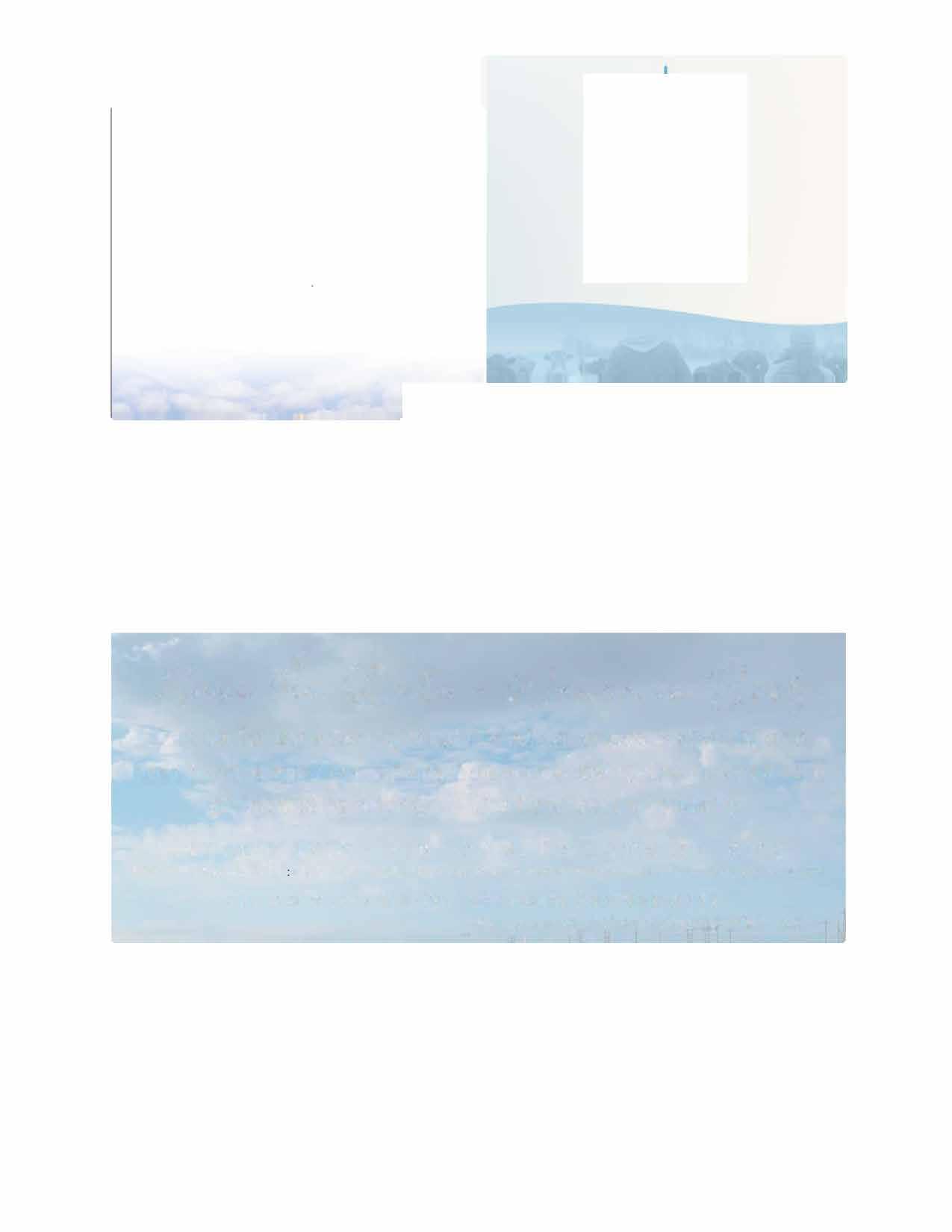
• SERVICES: Whetheryouareaspecialtyproducerlookingtoget yourproducttoaspecificmarketordistributor,orifyouareproducing commoditylivestockforsale,wecanpartnerwithyou.Fromour multi-speciescapabilitiestoourabilitytohandlesmallervolumes,we offerexcellentcapabilitiesforproducersintheCanadianPrairiesto maximizetheirprofitability.


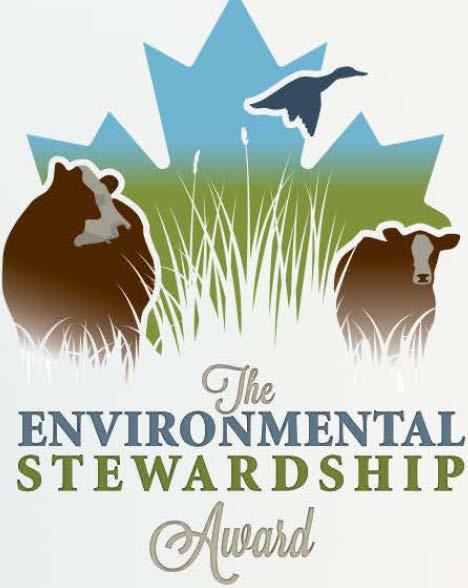
• FACILITY: Wehaveastate-ofthe-artfacilitytoallowusto reachmarketsacrossCanada,theUSA,andbeyond.Weunderstand producer'sneeds,theircarefortheiranimals,andtheirhonest, straightforwardnature.Callustohearhowwecanworktogethertoget yourproducttomarket. www.truenorthfoods.ca
 GRASSFED:
GRASSFED:
An update from MBP December 2, 2022 mbbeef.ca



(November 30, 2022 Province of Manitoba News Release)

The Manitoba government is announcing the appointment of Brenda DeSerranno as the next deputy minister of agriculture, effective Jan. 7, 2023.
DeSerranno has worked for the Manitoba government since 2005 and has been assistant deputy minister of analytical services at the provincial treasury board secretariat since 2019. In this role, she has gained experience in the programs and services offered by all government departments including Manitoba Agriculture. DeSerranno also has experience in financial and contract management, consultation with stakeholders, real estate management, leased properties and property
management. Her post-secondary background includes studies in business administration and urban land economics.

The appointment of DeSerranno will follow the upcoming retirement of Dori Gingera-Beauchemin, who has been deputy minister since 2013 and has held many positions during her 43 years with Manitoba Agriculture.
Note: Manitoba Beef Producers looks forward to working with Brenda DeSerranno when she becomes Manitoba's next deputy minister of agriculture in January 2023. Thank you again to Dori Gingera-Beauchemin for her many years of dedicated service to the province's agriculture sector.

The following information has been provided by Manitoba’s Emergency Measures Organization.
Manitoba EMO’s Disaster Financial Assistance program is working to issue assistance payments to producers as quickly as possible. For producers that have experienced livestock losses as a result of the 2022 spring flood, please ensure you have submitted the following mandatory documents otherwise your claim cannot be evaluated. Mandatory documents include:
1. A completed and signed Farmland Owner’s Authorization form
2. A completed Insurance Declaration form (completed by your property insurance provider)
3. A signed, original copy of the Financial Assistance Application form
4. Veterinary Certificate completed and signed for verification of livestock loss.
5. Tax information (send copies of all that apply to you):
1. For a farm that is a sole proprietorship, a complete copy of the most recent T1 General income tax return or notarized proof of income and Statements of Income and Expense.
2. For a farm that is a partnership, a copy of your partnership agreement and a complete copy of the most recent T1 General income tax return.
3. For a farm that is a limited company, a copy of your articles of incorporation, a complete copy of the most recent General income tax return and statements of income and expenses.
The documents can be sent via email, fax or by mail. PLEASE INCLUDE YOUR DFA CLAIM NUMBER (200204xxx) WHEN SUBMITTING DOCUMENTS.
Manitoba EMO – DFA
Fax: (204) 945-4929 1525 - 405 Broadway Winnipeg MB R3C 3L6 Toll Free: 1-888-267-8298 dfa@gov.mb.ca
For more information on the disaster financial assistance program, please visit our website at: DFA for Farms
November 28, 2022
On Sunday, November 27, the Honourable Minister of Foreign Affairs, Melanie Joly, released details on the Government of Canada’s Indo-Pacific Strategy (IPS)
The IPS is good news for the Canadian beef industry as the strategy prioritizes trade and agriculture The Indo-Pacific region is an important and fast-growing export market for Canadian beef with further growth opportunity.
In 2021, our industry hit a new export record high of $4.5 billion of beef exports, the sixth record year in a row. This great success is largely attributed to our increased market access in the Indo-Pacific region. 20 per cent of Canada’s beef exports are destined for the Indo-Pacific market, with the top five markets being Japan, Mainland China, South Korea, Vietnam, and Hong Kong.
The IPS has five main pillars: (1) strengthening Canada’s role as a reliable and engaged partner to the Indo-Pacific, (2) ensuring resilience, peace, and security, (3) expanding trade, investment, and supply chain resilience, (4) investing in and connecting people, and (5) building a sustainable and green future. Some of the strategy’s initiatives of interest to Canadian beef producers include:
Minister-led trade missions: $45 million to launch a series of enhanced Minister-led trade missions to the Indo-Pacific to support exporters and regionally based Canadian Chambers of Commerce in Indo-Pacific markets to facilitate long-term trade and investment opportunities
The Canadian Cattle Association (CCA) has long advocated for participating in trade missions, where there is a lot of value both domestically and internationally. We look forward to participating in the newly launched missions.
Agricultural office in the region: $31.8 million to establish Canada’s first agriculture office in the region to increase and diversify agriculture and agri-food exports to the Indo-Pacific, strengthening trade on both sides of the Pacific. This is a direct answer to the request CCA made in partnership with other agricultural associations The office will help prevent and resolve non-tariff barriers in the region proactively and quickly. Further the dedicated and resourced market access team will maintain regular contact with agriculture policy makers and regulators in the Indo-Pacific, ensuring Canada is at the leading edge of emerging trends in the region and build professional contacts to facilitate communication with foreign officials when required.
The Canadian Indo-Pacific Trade Representative: this new position will advance Canada’s regional trade policy, promotion and economic cooperation objectives in the region, while assisting with any tariff and non-tariff barriers in the region. Having strong leadership in the Indo-Pacific will help recognize further trade opportunities for Canada, including for the beef sector.
Expanding diplomatic capacity: the government will invest $92.5 million to significantly expand capacity at Canada’s missions in the Indo-Pacific and within Global Affairs Canada to
The Canadian Cattle Association is the national voice for Canada’s beef cattle industry representing 60,000 beef farms and feedlots www.cattle.ca

deepen diplomatic, trade, development, and climate ties with regional partners and defend Canadian interests in the region.
CCA continues to share with the Government, the importance of the Indo-Pacific from a Canadian beef trade perspective. On behalf of beef producers, we look forward to participating and benefitting from the strategy.
The full IPS can be found here: https://www.international.gc.ca/transparency-transparence/indopacific-indo-pacifique/index.aspx?lang=eng
For further information, contact: Michelle McMullen Communications Manager Canadian Cattle Association 403-451-0931| mcmullenm@cattle.ca
The Canadian Cattle Association is the national voice for Canada’s beef cattle industry representing 60,000 beef farms and feedlots www.cattle.ca

Does the animal have a fracture that impedes its mobility or that causes pain or suffering?
The animal is unfit and must not be transported, unless to receive veterinary care as recommended by a veterinarian.
Is the animal able to walk on all its legs?
Is the animal reluctant to walk or walks with halted movements due to pain or suffering (shown by an arched back, head bobs, reluctance to bear weight on a limb, etc.)?
Does the animal walk with a smooth and steady motion, a straight back and normal head carriage while bearing its weight evenly on all limbs?
The animal isn’t lame and may be transported.
The animal is compromised and must be transported as such.
An unfit animal can only be transported (with special provisions) directly to a place to receive veterinary care and under the recommendation of a veterinarian.
A compromised animal can only be transported (with special provisions) directly for slaughter or to a place to receive care for its condition. It can’t be transported to an assembly centre or auction market.
Special provisions if transporting an unfit or compromised animal:
Isolate the animal
or unload the animal alone without using interior ramps
special measures to prevent unnecessary suffering Go directly to the destination
(From the FCC Website) Innovative producers are key to growing a more sustainable future for agriculture. These changes require research, time and capital. By working with industry partners, we’ve created an incentive program open to eligible customers who meet our partners’ program requirements in sustainability. Together, we’re laying the groundwork for future generations to thrive in our industry.
Incentive payments are calculated as a portion of your eligible lending with FCC. You could receive one payment per year at a maximum of $2,000. You can reapply annually throughout the life of the program.
By working with the Canadian Roundtable for Sustainable Beef (CRSB) and its certification bodies (Verified Beef Production Plus, Ontario Corn Fed Beef Quality Assurance Program and Where Food Comes From Inc.), we’ve created an incentive program open to eligible customers who are certified through CRSB.

What's your incentive?
Incentive payments are calculated as a portion of your lending with FCC, excluding operating credit like the FCC Credit Line and FCC Input Financing, to a maximum payment of $2,000 in one year. You can reapply annually throughout the life of the program.
To participate, we’ll need the following information to verify your eligibility and calculate your incentive payment:
• Contact information
• FCC customer number
• Which CRSB-approved certification body you’re certified with
• Copy of your registration certificate or certificate of approval showing your CRSB certification
FCC is committed to protecting your personal information. We collect, use, disclose and retain your information to provide services to you and manage your information in accordance with the Privacy Act. Learn more about our commitment to privacy
To be eligible, you must fulfil the following criteria:
• FCC customer in good standing with a balance owing on eligible, existing FCC lending
• CRSB Certified through one of the following verification bodies:
Verified Beef Production Plus (VBP+) Ontario Corn Fed Beef Quality Assurance Program
Where Food Comes From
Applications will close on December 31, 2022 and will re-open May 2023





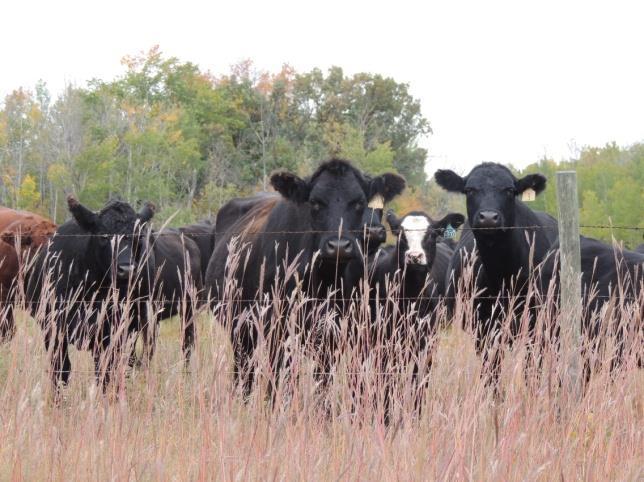
(December 1, 2022 News Release) Manitoba Natural Resources and Northern Development is encouraging all snowmobilers to sled safely this season and advising that conservation officers will be conducting snowmobile patrols to help ensure public safety.
Recreational snowmobilers are reminded that a Snopass permit is required to ride on trails managed by Snoman. A Snopass costs $150 for an annual permit or $75 for a seven-day permit and can be purchased through Manitoba Public Insurance. More information is available at https://snoman.mb.ca/snopass.
Manitobans are reminded the following actions can result in provincial fines:
• operating a snowmobile without a Snoman permit ($486 fine);
• operating an unregistered off-road vehicle ($174 fine);
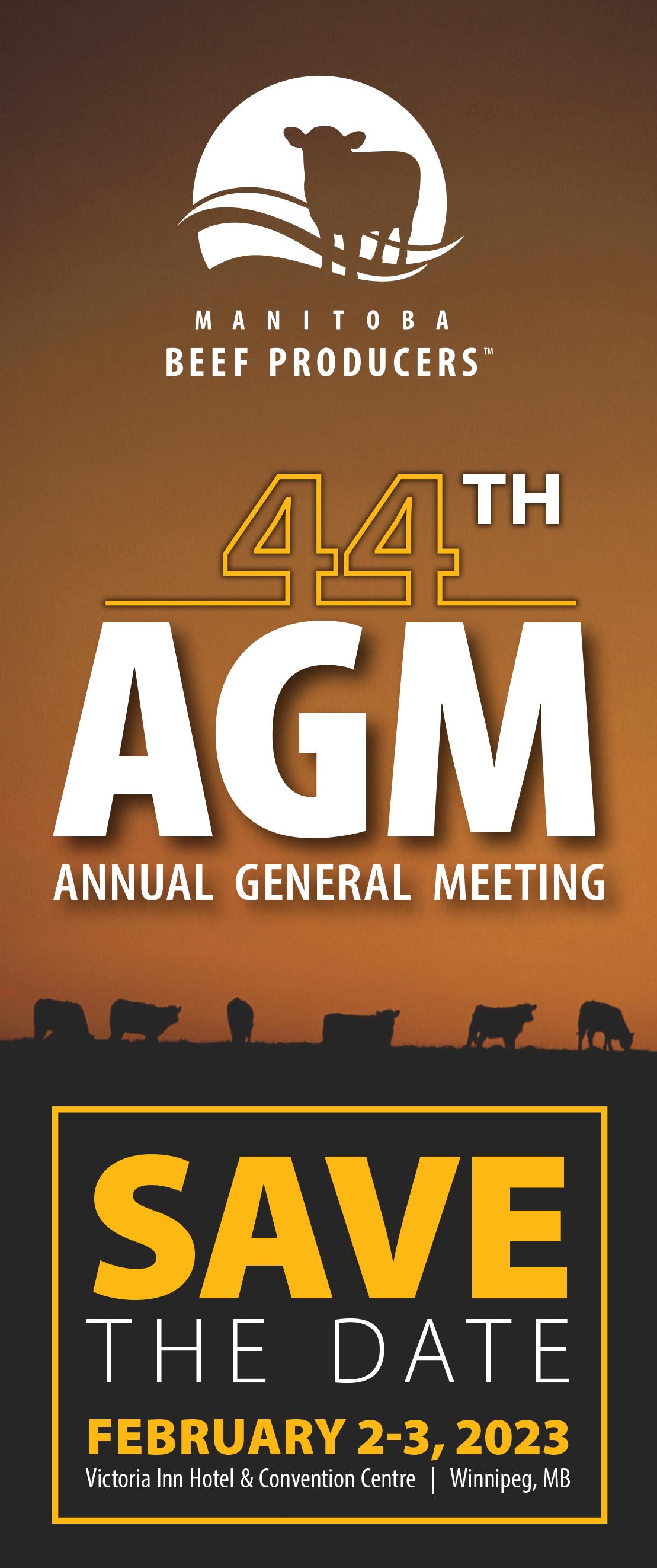
• failure to wear a helmet ($174 fine); and
• public consumption of alcohol ($672 fine).
Impaired operation of a snowmobile carries with it the same consequences as driving a vehicle while impaired. Penalties can include significant fines, impoundment of the snowmobile and a conviction resulting in a criminal record.
Conservation officers and the Royal Canadian Mounted Police play a critical role in monitoring trails for impaired driving offences.
Click here for tickets to the AGM & President's BanquetNote: The following information is taken from Manitoba Hydro’s website: https://www.hydro.mb.ca/projects/system_renewal /pointe_du_bois/
We’re planning a new project to increase Pointe du Bois generating station’s supply of renewable, dependable electricity and enhance our transmission capacity and reliability in the area, so we can get the most value of Manitobans’ investment in this over 110-year-old energy asset.
The Pointe du Bois renewable energy project (PREP) is made up of 2 main parts – a generating unit replacement in the station’s powerhouse and the construction of a new transmission line in the area.
PREP information sheet – Round 1 (PDF, 846 KB).
We’re planning to install 8 generating units at Pointe du Bois to replace some of the original units that are nearing end of life.
A generating unit is made up of a turbine and generator. Water from the river enters the powerhouse and flows through the turbine, causing the generator to spin to create electricity.
This upgrade will extend the operable life of the station to at least 2055 and increase the amount of renewable, dependable electricity we can produce to meet our customers’ ever-growing needs. With 380 gigawatt-hours per year, on average, of added production capacity, we will be able to power an extra 35,000 homes in Manitoba.
New transmission line from Pointe du Bois to Whiteshell substation (PW75)
The current transmission lines connecting Pointe du Bois to Manitoba Hydro’s grid are aging and won’t have sufficient capacity to handle the station’s increased electricity output once the new generating units are in place.
We’re planning to construct a new 115-kilovolt (kV) transmission line (referred to as PW75), stretching about 50 kilometres between Pointe du Bois and the existing Whiteshell substation, to deliver more renewable energy and improve reliability for our customers in surrounding areas. This component of the project will require a Class 2 licence under The Environment Act (Manitoba).
The new 115-kV transmission line from Pointe du Bois to Lee River distribution supply centre (DSC) will be routed through an existing right-of-way currently occupied by a 66-kV transmission line. The existing right-of-way will be widened to 60 metres (from the current 30 metres) to accommodate the higher voltage line. The existing 66-kV line, which connects Pointe du Bois to Winnipeg, is nearing end of life and will be decommissioned.
A new right-of-way will be required for the section of the new transmission line between Lee River DSC and Whiteshell substation. Our transmission line routing process and feedback collected through engagement will help determine the preferred route.
Various other upgrades are also planned at Pointe du Bois and Whiteshell substation to accommodate this transmission work.
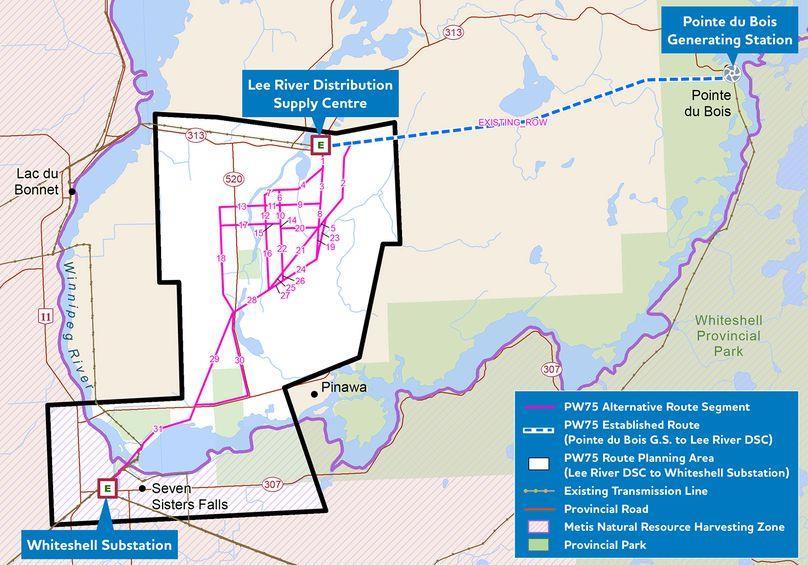
Alternative route segments for new transmission line.
Enlarge image: Map of southeast Manitoba showing work are between Pointe du Bois and Lac du Bonnet.
A closer look at the alternative route segments.
Enlarge image: Map of southeast Manitoba showing details of work between Lee River DSC and Whiteshell substation.
Visit our interactive map and feedback portal to zoom into the alternative route segments in more detail.

View all materials and maps in our PREP document library.
We have a long history of working in the area and are using what we’ve learned from past projects to help inform how we engage with landowners, interested parties, and the public on the PREP.
Through our First Nation and Métis engagement process, we’ll work directly with First Nation communities, Grand Council Treaty 3, and the Manitoba Métis Federation. We’ll seek to understand concerns, assess potential effects, and work to find ways to address them.
We’ll provide regular updates on the generating unit replacement occurring within the existing footprint of the powerhouse and create opportunities to ask questions and voice concerns.
Our engagement on the new transmission line will provide opportunities for feedback to influence decision-making. We’re conducting an environmental assessment to determine a preferred route for the new line and will submit a report to Manitoba Environment, Climate, and Parks for approval before starting construction.
Routing is a key part of the environmental assessment process. Data gathering, on the ground fieldwork, technical, and environmental considerations, and input collected in our engagement will help inform the selection of a preferred route for the new transmission line.
Our engagement to identify and evaluate alternative route segments for the new transmission line is underway.
We encourage you to ask questions, voice your concerns, and share feedback with us to help inform our routing and plans. Check out our engagement opportunities.
Survey now available. Tell us what you think about the alternative route segments. Complete by December 15.
Visit our interactive map and feedback portal to zoom into the alternative route segments in more detail, provide comments and suggestions, flag points of interest, and see what others are saying. The portal is open until December 15, 2022.
• Generating unit replacement:
o Preliminary worksite and equipment preparation: spring 2022;
o Removal of old generating units: fall 2022 to winter 2023;
o New generating unit assembly and installation: spring 2024 to summer 2027.
• New transmission line:
o Identify and evaluate alternative route segments: spring 2022 to fall 2022;
o Preferred route engagement: winter 2023;
o File environmental assessment report for regulatory review: summer 2023;
o Licensing decision: estimated fall 2024;
o Transmission line construction start, if licence approved: fall 2024;
o Target in-service date: summer 2027.
This schedule is subject to change.

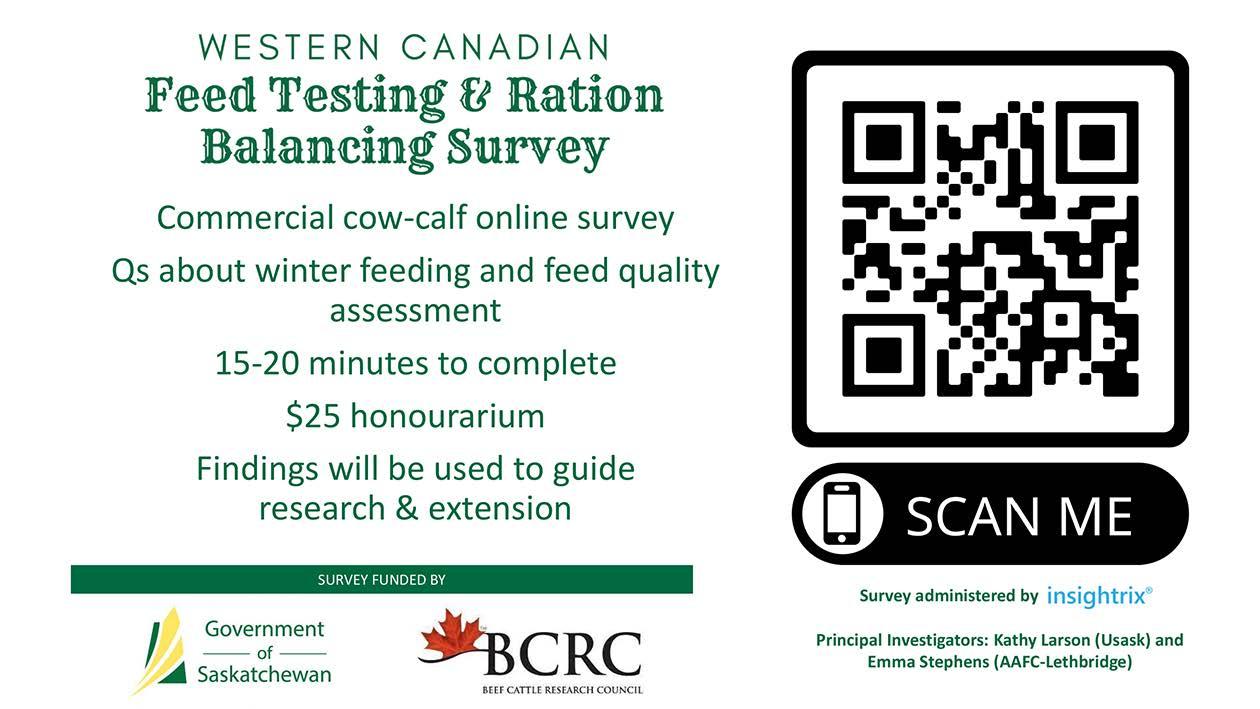
An update from MBP November 25, 2022 mbbeef.ca

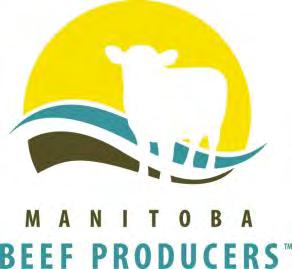
The following information has been provided by Manitoba’s Emergency Measures Organization.
Manitoba EMO’s Disaster Financial Assistance program is working to issue assistance payments to producers as quickly as possible. For producers that have experienced livestock losses as a result of the 2022 spring flood, please ensure you have submitted the following mandatory documents otherwise your claim cannot be evaluated. Mandatory documents include:
1. A completed and signed Farmland Owner’s Authorization form
2. A completed Insurance Declaration form (completed by your property insurance provider)
3. A signed, original copy of the Financial Assistance Application form
4. Veterinary Certificate completed and signed for verification of livestock loss.
5. Tax information (send copies of all that apply to you):
1. For a farm that is a sole proprietorship, a complete copy of the most recent T1 General income tax return or notarized proof of income and Statements of Income and Expense.
2. For a farm that is a partnership, a copy of your partnership agreement and a complete copy of the most recent T1 General income tax return.
3. For a farm that is a limited company, a copy of your articles of incorporation, a complete copy of the most recent General income tax return and statements of income and expenses.
The documents can be sent via email, fax or by mail. PLEASE INCLUDE YOUR DFA CLAIM NUMBER (200204xxx) WHEN SUBMITTING DOCUMENTS.
Manitoba EMO – DFA Fax: (204) 945-4929 1525 - 405 Broadway Winnipeg MB R3C 3L6 Toll Free: 1-888-267-8298 dfa@gov.mb.ca
For more information on the disaster financial assistance program, please visit our website at: DFA for Farms
The website provides detailed information in three segments that are at the heart of NCLE. These include NCLE research activities, graduate student experiences plus a collection of extensive resources used to transfer project knowledge to stakeholders and public.
(November 25, 2022 University of Manitoba Faculty of Agricultural and Food Sciences media release)
The National Centre for Livestock and the Environment (NCLE) at the University of Manitoba has launched a new website that puts a wealth of information at the fingertips of the producers, researchers and other industry stakeholders.
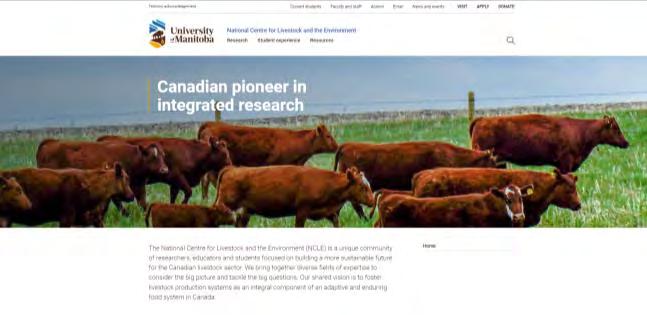
NCLE has been active for over a decade and is a unique community of researchers, educators and students who engage in multi-disciplinary, multi-agency research focused on building a more sustainable future for the Canadian livestock sector.
The new site offers researchers, students, industry, governments and consumers access to an extensive library of research projects and resources examining the role of Canadian livestock production systems as an integral component of an adaptive and enduring food system in Canada.
“We are excited to launch our new website. It provides easy access to a comprehensive body of work conducted by NCLE researchers from practical and effective sustainable agriculture management practices to leveraging big data for a better understand of our agroecosystems as well as solutions to improve animal health and management” says Dr. Kim Ominski, Director of NCLE, Professor and Acting Head at the Department of Animal Science at the University of Manitoba.
NCLE research is focused on three unique themes. Theme 1 explores livestock as an agroecosystem solution and highlights the role of livestock in food production systems through projects focused on soils, land use and GHG mitigation. Theme 2, leveraging data to improve food systems emphasizes the importance of continual measuring, monitoring and modeling in order to understand complex ecosystems and transform collected data into useful decision-making tools. In theme 3, One Health to improve animal management is where NCLE researchers demonstrate the value of using a multidisciplinary approach to research to more fully understanding the complex connections between feed, animal care, housing and health.
At the center of NCLE are the students. National Centre for Livestock and the Environment research projects provide graduate students with a unique, systems-level educational experiences. This page houses success stories and research activities conducted by graduate students connected to NCLE.
The National Centre for Livestock and the Environment is committed to free exchange of ideas and knowledge with academia, industry, governments and the community. The resource section of the site highlights practical use of NCLE research findings addressing current opportunities and challenges experienced in the Canadian livestock sector. Materials available in this section include videos, podcasts, articles, fact sheets, and infographics presenting key information generated by NCLE researchers and students.

Visit the NCLE website at https://umanitoba.ca/national-centre-livestockenvironment/
For more information contact:
Peter Frohlich, Research Development Coordinator
National Centre for Livestock and the Environment (NCLE) Phone: (204) 474-7337 peter.frohlich@umanitoba.ca
Proposed Legislation Would Ensure Off-Road Vehicle Organizations Can Continue Support for Safe, High-quality Recreation Opportunities While Protecting Natural Ecosystems: Wharton
(November 24, 2022 Province of Manitoba News Release) The Manitoba government is introducing the off-road trails safety and maintenance act, which would ensure that users of off-road vehicles (ORV) would have access to safe, high-quality recreation opportunities by supporting organizations that lead this important work, Environment, Climate and Parks Minister Jeff Wharton announced.
“Organizations like Snowmobilers of Manitoba Inc. (Snoman) and the All-Terrain Vehicle Association of Manitoba (ATVMB) manage the province’s ORV trail networks, ensuring Manitobans and visitors have access to safe, high-quality ORV recreation opportunities,” said Wharton. “We want to ensure that their important work is not limited by increased costs for labour and fuel, aging equipment and reduced volunteer capacity. This new legislation will help provide additional tools for these organizations, support the rehabilitation of lands impacted by ORV use and ensure we continue to protect natural ecosystems.”
The proposed off-road trails safety and maintenance act includes a $25 annual fee for registered ORVs to ensure organizations have access to sufficient, sustainable resources for initiatives, the minister noted.
The funding generated by user fees would be provided to ORV organizations to support:
• trail development and maintenance;
• safety education, training and promotion;
• emergency trail repair;
• rehabilitation of lands damaged by unauthorized ORV use;
• operations and administration of Snoman and ATVMB; and
• trail capital projects, if sufficient funds are available.
“Snoman is pleased with the introduction of this bill today. It is a step to enabling the financial
sustainability of the trail network and our volunteer clubs, which is what our members have been calling for,” said Jason Wiebe, president, Snoman. “Without financial stability, there is a threat of a loss of trails due to a lack of funding. As well, we are keen on being proactive and finding solutions throughout our more than 13,000 kilometres of trail with the introduction of new technologies that reduce our impact on the environment.”
The $25 annual fee would be collected by Manitoba Public Insurance at the same time as ORVs’ annual registration. The annual fee would not apply to ORVs exempt from registration under the Drivers and Vehicles Act.
“ATVMB is pleased to see the Manitoba government introduce a user-pay funding model for ORVs in Manitoba. This funding will allow for proper maintenance and signage of trails, safety training and further development of multi-use trails in Manitoba,” said Kim Wozniak, executive director, ATVMB. “Manitoba is blessed with a multitude of recreational trail options that can be enjoyed by all, whether on foot, on horseback, skiing, biking or on an ORV. ATVMB is committed to providing safe, well-maintained trails for all who choose to enjoy them.”
In addition, the legislation also proposes changes that would allow for modernized and more convenient ways for Manitobans and visitors to access products online, like short-term Snopasses.
Improved access to Snopasses, coupled with user fee revenues, would contribute to a more robust network of high-quality trails for Manitobans and visitors to enjoy, the minister noted. New trails, along with the expansion of existing routes, would also support economic development across the province, particularly in rural communities, the minister said, adding that if the proposed legislation is approved it is anticipated the new fee would take effect in late 2023.
coming months because of supply chain issues impacting needed parts.
“All of our member repair shops are working hard to get our customers back on the road as quickly as possible,” said Geoff Sine, Executive Director, MMDA. “We appreciate the patience of Manitobans as we continue to work diligently to use our expertise to ensure safe and proper repairs for vehicles that require them.”
(November 22, 2022 MPI News Release) With winter weather and snow arriving throughout the province, Manitoba Public Insurance (MPI) is encouraging drivers to take steps like adjusting their driving habits and using winter tires, to reduce their likelihood of being in a collision and needing their vehicle repaired this season.
According to MPI data, approximately 40 per cent of all collisions occur between November and February annually.
“With challenging road conditions during the winter, it’s important to make responsible decisions behind the wheel, like driving to conditions, leaving for your destination earlier than needed, allowing more time to stop, and making sure your windows are all clear of ice and snow,” said Marnie Kacher, Vice President & Chief Operating Officer, MPI. “All of these choices, including using winter tires, can contribute to keeping you and your vehicle as safe as possible.”
Unfortunately, even taking as many precautions as possible, unpredictable weather conditions can lead to collisions and vehicle damage.
Manitoba repair facilities continue to be busy, and some repairs maybe be delayed in the
For those who require a repair to their vehicle in the coming months, MPI recommends customers open a claim and confirm the loss of use coverage available to them as soon as possible by calling the Corporation’s Contact Centre at 204-985-7000 or toll-free at 1-800665-2410. The Automotive Trades Association of Manitoba (ATA) and the MMDA encourage customers to check with their selected repair shop as soon as possible to confirm their availability to complete repairs on all claims, including non-drivable vehicles, and establish an expected timeline.
“We understand and care about the inconveniences and pressures customers experience when their damaged vehicles are not drivable. For our repair shops to provide the best service, we ask customers to first contact their chosen repair facility to confirm the date the facility can accept a towed-in vehicle following an MPI estimate,” said Denis Cloutier, Executive Director, ATA. “The best way to address delays is for everyone to work together to make the claims process as smooth as possible.”
To help reduce claims overall and keep Manitobans as safe as possible, MPI is continuing its Winter Tire Program for an eighth


consecutive year. The program offers lowinterest financing at prime plus two per cent on up to $2,000 per vehicle to eligible individuals to purchase winter tires as well as associated products and services. Since its launch in 2014, the program has provided over 195,000 loans to customers throughout Manitoba.
“Research has shown that using winter tires increases traction, making it easier to get out of the snow and can cut stopping distance by 25 per cent or more, which is why MPI’s Winter Tire Program is an important tool in helping to prevent as many collisions as possible,” said Kacher.
Winter tires have a cold weather rubber compound and tread patterns designed to perform on wet, snow covered and icy surfaces. They are equipped with a special singledirectional tread pattern that actually pushes away snow and ice. These specialized tires also have a deeper tread depth than their all-season counterparts, for better performance in snowy and icy road conditions.
MPI’s financing program provides loans of up to 48 months and participation is as easy as going to any participating winter tire retailer throughout the province to confirm eligibility and have the loan authorization processed. Full details of the program can be found at mpi.mb.ca
• GRASSFED: "TrueNorthFoodsispartneredwithA&WCanada tosupplyCanadiangrassfedbeefforA&Wsgrassfedburgerprogram.

• SERVICES: Whetheryouareaspecialtyproducerlookingtoget yourproducttoaspecificmarketordistributor,orifyouareproducing commoditylivestockforsale,wecanpartnerwithyou.Fromour multi-speciescapabilitiestoourabilitytohandlesmallervolumes,we offerexcellentcapabilitiesforproducersintheCanadianPrairiesto maximizetheirprofitability.

• FACILITY: Wehaveastate-of-the-artfacilitytoallowusto reachmarketsacrossCanada,theUSA,andbeyond.Weunderstand producersneeds,theircarefortheiranimals,andtheirhonest, straightforwardnature.Callustohearhowwecanworktogethertoget yourproducttomarket.
www.truenorthfoods.ca
(CRSB News Release) The Canadian Roundtable for Sustainable Beef (CRSB) is seeking public input to proposed changes to the standards for sustainable beef production and processing that form the foundation of the Certified Sustainable Beef Framework (the Framework). An online 60day comment period on the draft updated Standards opens today and runs until December 2, 2022. We encourage all interested parties to provide feedback.
The Framework was launched in 2017 to recognize sustainable practices in Canadian beef production and processing, to support sustainable sourcing commitments for the retail and foodservice sector, and to provide credible, science-based assurances for Canadian consumers. As part of a scheduled five-year program review, and following extensive stakeholder consultation, the CRSB’s Framework Committee conducted an in-depth review of each indicator in both standards (beef production and processing), explored areas for improvement, and identified gaps. Proposed changes to the Standards focus on strengthening indicators through monitoring and demonstrating progress, and indicators that align with the 2030 Canadian Beef Goals.
Proposed changes to the Standards focus on strengthening indicators through monitoring and demonstrating progress, and indicators that align with the 2030 Canadian Beef Goals
“The engagement of our members and stakeholders during this review demonstrates the commitment across the Canadian beef value chain to continually advance beef sustainability practices, while also aligning with public interest in sustainability”, says Kristine
Tapley, Chair of the CRSB Framework Committee. Tapley is the National Sustainability Lead for Ducks Unlimited Canada and a beef producer from Langruth, Manitoba.
“These proposed changes all aim to advance our journey of continuous improvement that is at the heart of the definition of sustainability”, adds Tim Hardman of Fulton Market Group and CRSB Framework Committee Vice-Chair. “We look forward to receiving constructive comments on the changes to the Standards, so that we can continually make improvements to our certification framework”.
Consultation documents, including a summary of proposed changes and full proposed updated standards, along with instructions for comments and suggested recommendations can be found on the NSF Online Consultation Workspace. Visit our Public Consultation webpage for further details.
ABOUT THE CRSB The Canadian Roundtable for Sustainable Beef (CRSB) advances, measures and communicates sustainability in the Canadian beef value chain in collaboration with its multi-stakeholder membership. It drives continuous improvement through sustainability performance measurement and goals, a voluntary 3rd party sustainability certification program, and projects and initiatives aligned with strategic goals. Learn more at crsb.ca The Certified Sustainable Beef Framework, known as CRSB Certified, recognizes sustainable practices in beef production and processing, enables sustainable sourcing, and delivers 3rd party certified science-based assurances about sustainable beef production in Canada. Learn more at crsbcertified.ca
(November 24, 2022 Canadian Grain Commission News Release) A later harvest across much of the Prairies this year may have grain growers wondering how the quality of their grain has been affected. The Canadian Grain Commission recognizes that producers may need more time to participate this year and has extended the deadline of its Harvest Sample Program to December 30, 2022.
Through the Harvest Sample Program, producers receive an unofficial grade and quality information for their crop that can help them make delivery decisions. New for this year, the Canadian Grain Commission is now offering dockage assessments for mustard samples in addition to canola.
Harvest samples are also used to generate crop quality data that marketers can use to promote the sale of Canadian grain. This quality information confirms Canada's ability to deliver consistent, high-quality grain from year to year.

Producers who are not currently registered for the Harvest Sample Program, but who would
like to take part for the 2022 harvest, have until December 12, 2022 to register online at www.grainscanada.gc.ca/hsp. There is no charge to participate, and registered participants have until December 30, 2022 to send in samples taken from their crops.
• The Harvest Sample Program is a voluntary program that offers analytical services to Canadian grain producers and grain companies at no cost.
• Participating producers are emailed a report that includes an unofficial grade along with other quality results including dockage, Falling Number, vomitoxin (DON), and protein and oil content.

Associated links
• Harvest Sample Program
• Grain harvest and export quality reports
An
from MBP November 18, 2022 mbbeef.ca


(November 15, 2022 Province of Manitoba News Release) The 2022 speech from the throne, delivered by Lt.-Gov. Anita Neville at the opening of the fifth session of the 42nd legislature, is setting a course toward greater health, and prosperity for Manitobans with a series of commitments to make communities stronger, safer and more affordable, Premier Heather Stefanson said.
“Our government is focused on making our neighbourhoods safe places to raise families, building a strong and sustainable health-care system and helping make life more affordable for all Manitobans,” said Stefanson. “We are listening to Manitobans, taking action on their priorities and getting things done for the benefit of all Manitobans. We are committed to finding even more measures that will help Manitobans cope with global inflation from rising prices and carbon taxes.”
The speech outlined a series of initiatives that will be implemented to strengthen the province’s health-care infrastructure and take aim at violent criminal behaviour while supporting efforts to tackle mental health, homelessness and addiction issues including:
• increasing supports for front-line law enforcement officers through investments in technology, specialized training, enhanced police presence and support for more officers;
• making an unprecedented investment in Winnipeg hospitals to ensure Manitobans get the best care possible in the most modern facilities with a multi-year, multibillion dollar capital investment;
• providing financial support for up to 1,000 addictions treatment spaces;
• reopening the Communities Economic Development Fund’s business loan program to support key sectors of a growing northern economy;
• financially stabilizing Manitoba Hydro as a Crown corporation so it can continue to provide clean hydroelectric power for Manitoba residents and businesses at among the lowest rates in the country into the future;
• protecting students by establishing a teacher registry and an independent body to improve accountability and transparency related to educator misconduct in kindergarten to Grade 12 schools;
• modernizing the waste diversion and recycling framework to divert more materials from landfills and create new business and job opportunities within a circular economy;
• helping ranchers recover from climate-change driven droughts and floods by implementing a temporary rent reduction on agricultural Crown lands from 2023 to 2025;
• continuing efforts to reduce red tape through regulation reform and modernization; and
• revitalizing the Conservation Officer Service by hiring more officers and providing better equipment and technology to combat dangerous activities such as poaching, night hunting and road hunting.
“This throne speech is a roadmap to a more prosperous future, building a province where its government helps make communities safer, healthier and stronger and its citizens and communities more competitive,” said Stefanson. “It is a course that is guided by listening to Manitobans and advancing reconciliation, protecting our environment and helping families make ends meet.”
To read the speech from the throne, visit www.manitoba.ca/thronespeech.
• GRASSFED: "TrueNorthFoodsispartneredwithA&WCanada tosupplyCanadiangrassfedbeefforA&Wsgrassfedburgerprogram.

• SERVICES: Whetheryouareaspecialtyproducerlookingtoget yourproducttoaspecificmarketordistributor,orifyouareproducing commoditylivestockforsale,wecanpartnerwithyou.Fromour multi-speciescapabilitiestoourabilitytohandlesmallervolumes,we offerexcellentcapabilitiesforproducersintheCanadianPrairiesto maximizetheirprofitability.

• FACILITY: Wehaveastate-of-the-artfacilitytoallowusto reachmarketsacrossCanada,theUSA,andbeyond.Weunderstand producersneeds,theircarefortheiranimals,andtheirhonest, straightforwardnature.Callustohearhowwecanworktogethertoget yourproducttomarket.
www.truenorthfoods.ca



(November 17, 2022 Province of Manitoba News Release) The Manitoba government is proactively introducing the Official Time Amendment Act, which would allow the province to consider adopting permanent daylight saving time should neighbouring jurisdictions enact similar legislation and the majority of Manitobans support this change, Municipal Relations Minister Eileen Clarke announced.

“The Official Time Amendment Act would allow our province to maintain a consistent time zone approach with the United States, if they also adopt year-round observance of daylight saving time,” said Clarke. “Maintaining a consistent time zone approach with our neighbours would
ease business relations, trade, transportation of goods and travel.”
The United States is considering a shift to permanent daylight saving time. Other Canadian jurisdictions, including Ontario and British Columbia, are also proactively preparing to make the shift if the United States adopts year-round observance of daylight saving time.
Recognizing that many Manitobans have deeply held views on time change, the Manitoba government plans to engage with residents and stakeholders to hear how permanent daylight saving time would affect them. The engagement will help identify potential supports that could be implemented to facilitate a smoother transition, noted Clarke.
(November 14, 2022 Province of Manitoba News Release) The Manitoba government is launching the Work in Manitoba job portal, an innovative, onestop website that will efficiently connect job seekers and employers based on qualifications and labour market needs, Economic Development, Investment and Trade Minister Cliff Cullen announced.
“We have heard from Manitoba employers that they are struggling to recruit the talent they need to grow their businesses and we are taking concrete action to help them overcome this barrier,” said Cullen. “The Work in Manitoba job portal is a streamlined website that will enable employers to efficiently connect with local, national and international candidates that meet their labour market needs.”
The user-friendly platform is free for both job seekers and employers. Job seekers can create profiles that capture their skills, experience, education and career preferences. When employers upload job postings, the portal will send notifications to job seekers with relevant qualifications and goals.
The sophisticated platform will include jobs from third-party sites and integrate with post-secondary career centres to minimize duplication and maximize resource efficiency, added Cullen.
The minister noted the platform captures real-time provincewide labour market data, which can be used to develop tailored programs that respond to the needs of underrepresented groups, support the growth of priority sectors and inform immigration strategies.
The new portal builds on an existing job connections website used by Economic Development Winnipeg, which has been successfully used for international recruitment missions for the last two years. The expansion enables all Manitoba employers and job seekers to use the site as well.
“The job opportunities in Manitoba span across all sectors from manufacturing and transportation to technology and creative industries,” said Dayna Spiring, president and CEO, Economic Development Winnipeg. “The Work in Manitoba job portal is a powerful tool Manitoba employers can use to connect with job seekers not just from Manitoba, but from across Canada and around the world.”
The minister noted the new job portal represents another targeted action the Manitoba government has taken to accelerate post-pandemic recovery, grow the provincial economy and promote positive outcomes as part of Manitoba’s Skills, Talent and Knowledge Strategy.
For more information and to register on the site, visit www.workinmanitoba.ca.

(November 16, 2022 Employment and Social Development Canada News Release) One in five children in Canada are at risk of going to school hungry on any given day. School meal programs can help reduce hunger and food insecurity, improve children’s access to nutritious food, improve academic outcomes and achievement, and help support families by reducing food costs. Today, the Minister of Families, Children and Social Development, Karina Gould announced the opening of the consultations with Canadians to seek feedback on a national school food policy.
The input received through the online questionnaire will help build towards a national school food policy that is responsive to the evolving needs of children and families, while also setting a foundation for a future where more children in Canada have access to nutritious food while at school.
A national school food policy needs to take into account the diverse realities of children in Canada, their families and their schools, and it should constructively build on the programs that already exist. The Government wants to hear the diverse perspectives of Canadians to learn from their experiences with school food programs. In addition to the online questionnaire, the Government of Canada has launched a series of thematic roundtable discussions with key stakeholders, such as the Breakfast Club of Canada and Ottawa Network for Education, as well as including teachers, school administrators, parents, children and youth. The Government of Canada is also engaging directly with Indigenous partners, provinces and territories.
The online questionnaire will be available on the Government of Canada’s Consulting with Canadians webpage from November 16 to December 16.
“Every child should have access to the healthy food they need to grow and learn. I am looking forward to hearing Canadians’ diverse views on what they want and need out of a school food policy. A national approach to school food has the potential to improve the overall health of our children as they learn, leading to better futures for them and for Canada.”
– Minister of Families, Children and Social Development, Karina Gould
“When we launched the first-ever Food Policy for Canada in 2019, working towards a National School Food Program was deemed as critically important. Every child, no matter where they live, deserves access to safe, nutritious, and culturally diverse food to reach their full potential.”
– Minister of Agriculture and Agri-Food, MarieClaude Bibeau
• Budget 2019 included more than $134 million over five years to support the Food Policy for Canada to strengthen food systems and improve food security, and a commitment to work with provinces and territories towards the creation of a National School Food Program.
• Budget 2022 reaffirmed the December 2021 mandate letter commitments for the Minister of Families, Children and Social Development and the Minister of Agriculture and Agri-Food to work with provinces, territories, municipalities, Indigenous partners and stakeholders to develop a National School Food Policy and
to explore how more Canadian children can receive nutritious food at school.
• Based on the 2020 Canadian Income Survey and the 2021 PROOF report “Household Food Insecurity in Canada”, 15.9% of households in the ten provinces experienced some level of food insecurity in the past year. This amounts to 5.8 million people, including almost 1.4 million children under the age of 18.
• Food insecurity is especially high in the North. As of 2020, 49.5% of persons in Nunavut, 20.4 % of persons in the Northwest Territories, and 21.2% of persons in the Yukon experienced moderate or severe food insecurity.
• According to the 2018 Health Behaviour in School-Aged Children Survey, up to 1 in 5 young people report going to school or bed hungry at least sometimes because there is not enough food at home.
Associated links
• Consulting With Canadians
• School Food Discussion Paper
• The Food Policy for Canada

• Opportunity for All – Canada’s First Poverty Reduction Strategy
• Statistics Canada: Canadian Income Survey, 2020
(November 18, 2022 Prairies Economic Development
Canada News Release) Manitoba is home to a dynamic and diversified economy, full of skilled workers and entrepreneurs. The province is known for its rich agricultural base, transportation expertise, vibrant arts community, and as a significant manufacturing hub. The Government of Canada is taking more steps to ensure Manitoba is a place for industry to grow and enterprises to thrive, resulting in good jobs for Canadian workers.
At the home of the future New Media Manitoba StudioLab XR in Winnipeg, the Honourable Dan Vandal, Minister for PrairiesCan, announced over $22.7 million in federal funding for 16 projects across the province as part of Global Entrepreneurship Week. This investment is expected to create nearly 850 new jobs, 187 of which will be for highly qualified personnel. The projects are anticipated to result in over $200 million of revenue growth and $130 million in export sales.
One of the projects announced includes a first-of-itskind virtual media production-training studio in the Prairies. Others support businesses across a number of sectors. ComIT will expand digital skills programming on the Prairies, with a focus on underrepresented groups in the digital sector. Two of the projects are at the University of Manitoba one to construct a controlled facility to test unmanned aerial vehicles, and another to develop the advancement of technologies supporting the protein research cluster.
Funding for the projects is supported through the Business Scale-up and Productivity (BSP) program, the Jobs and Growth Fund (JGF), the COVID-19 Relief Fund, the Regional Innovation Ecosystems (RIE) program, and the Aerospace Regional Recovery Initiative (ARRI). PrairiesCan in Manitoba administers all five federal programs.
“Our investment today will support both Manitoba’s economy and businesses helping to continue to make Manitoba a great place to invest, do business and
create good jobs people can count on. Our partnership with Manitoba businesses will help them in acquiring the tools, capital and support they need to thrive as significant contributors to the Prairie and Canadian economies.”
–The Honourable Dan Vandal, Minister for PrairiesCan
Projects Funded With Ties to the Agriculture Sector
Note: Some of the funded projects have linkages to Manitoba’s agriculture sector. They are as follows:
Business Scale-Up and Productivity Program –Investment of $12,137,052
Through the BSP program, the Government of Canada is supporting high-growth businesses that are seeking to improve productivity, scale-up and commercialize technology. It offers interest-free, repayable funding to incorporated businesses. The BSP program supports incorporated high-growth businesses that have been operating in the Prairie Provinces for a minimum of two years. Seven Manitoba BSP recipients receiving funding through PrairiesCan were announced today:
• Northquip Inc. ($2,100,000)
Integrate advanced equipment into cattle chute manufacturing facility.
Regional Innovation Ecosystems – Investment of $6,041,197
Through the RIE program, the Government of Canada makes targeted investments in not-for-profit organizations that support businesses in priority sectors to innovate, grow and compete globally. RIE is open to not-for-profit organizations that support businesses, innovators and entrepreneurs, for startup, growth, productivity, technology commercialization, technology adoption, and export and investment attraction.
• University of Manitoba ($2,397,039)
Accelerate Manitoba's growth as a leader in value-added agriculture and the further development of the protein cluster.
November 15, 2022
Calgary, AB - Canadian Cattle Young Leaders is pleased to announce this year’s industryleading mentors who are kindly investing their expertise and time to lend a helping hand to the next generation of the Canadian beef industry.
Each year, Canadian Cattle Young Leaders (CYL) selects 16 program participants ages 18-35 from across the country and offers industry networking, travel, and skill building opportunities. A focal point of the program is matching participants with a hand-picked mentor in their specific area of interest in the Canadian beef industry for a nine-month mentorship experience
There is an exciting array of mentorship focus areas this year, including sustainable grazing practices, agriculture technology, business management, cattle genetics, feedlot production, marketing strategies, livestock handling techniques, and much more.
“Now, more than ever, there is a growing need to invest and support the youth of our industry to ensure a successful future,” says Canadian Cattle Association President, Reg Schellenberg. “We are sincerely grateful to these mentors who have stepped up to the plate to help our young leaders as they look to build a sustainable future for their farms and ranches, or in their industry careers.”
The 2022-2023 program year mentorship pairings are as follows. Visit our participant spotlight webpage to learn more about this year’s mentees and mentors.
Morgan Kitchen (BC) John & Deanne Chuiko
Raelynn Blumhagen (BC) Brad Osadczuk
Austin Ashbacher (AB) Jeff & Lyndsay Smith
Carling Matejka (AB) Amie Peck
Delanie Ferguson (AB) Clinton Monchuk
Gleise Medeiros da Silva (AB) Anne Wasko
Heath Ferguson (AB) Bruce Niznik
Jill Renton (AB) Andrea Stroeve-Sawa
Nicky Nixdorff (AB) Sheila Jensen
Russell Gallelli (AB) Mike Panasiuk
Tyson Ringdal (SK) Gord Roger
James Kinley (MB) Shylo Penrod
Stefan Bouw (MB) Jerry Doan
Danika Mayer (ON) Sandra Vos
Holly McGill (ON) Shannon Borden
Madi Lewis (ON) Jack Chaffe
The Canadian Cattle Association is the national voice for Canada’s beef cattle industry representing 60,000 beef farms and feedlots www.cattle.ca

The formal portion of these mentorships began earlier this month in November 2022 and will conclude at the end of July 2023. Each participant is granted a $2,000 budget through the program thanks to the generosity of our program sponsors to fund various learning opportunities, such as travel to see their mentors and attending industry events.
The Canadian CYL program would like to thank all present and past program mentors for their incredibly generous support and vision for the future through their notable contributions made to mentoring young leaders in the Canadian beef cattle sector.
Applications for the 2023-2024 program year will be available at www.canadiancattleyoungleaders.ca from the beginning of January to the end of March 2023, where young people involved in all areas of the beef supply chain ages 18-35 are encouraged to apply.
About Canadian Cattle Young Leaders
Canadian Cattle Young Leaders (CYL) welcomes young people ages 18-35 across Canada, involved in various aspects of the beef supply chain, to be paired with an industry leader in their specific area of interest for a nine-month mentorship. Through mentorship, networking, and travel, the Canadian CYL Program acts as an industry succession planning tool to equip the next generation of leaders with the skills and tools they need to continue to drive the growth and profitability of the Canadian beef industry. Since established by the Canadian Cattle Association in 2010, the program has seen over 160 CYL graduates. Program applications are open annually for ages 18-35 on our website from early January to the end of March. Learn more at www.canadiancattleyoungleaders.ca.
For further information, contact: Michelle McMullen Communications Manager Canadian Cattle Association 403-451-0931| mcmullenm@cattle.ca
The Canadian Cattle Association is the national voice for Canada’s beef cattle industry representing 60,000 beef farms and feedlots www.cattle.ca


The Canadian Beef Cattle Check-Off provides industry funding for the Beef Cattle Research Council (BCRC) responsible for the industry’s national research and extension program, Canada Beef tasked with market development and promotion in domestic and international markets, and public and stakeholder engagement, which works to manage issues and build public trust in Canadian beef cattle production.
The Canadian Beef Cattle Check-Off is a mandatory levy of $2.50 per head collected from beef cattle producers when they market their cattle, with the exception of Ontario, who remains at $1. The check-off generated $17.2 million in check-off and $1.2 million in import levy in 2020/21 for research, marketing and promotion activities on behalf of the entire industry.
This study reports that on a five-year average from 2015-21, national research, marketing and promotion activities resulted in the following benefit cost ratios (BCR):
• Research had a BCR of $63.2, compared to $34.5 and $46 in the Rude (2011/12 to 2013/14) and Cranfield (2005 and 2008) studies respectively.
• Domestic Marketing (including the import levy) had a BCR of $15.4, compared to $17 and $8 in the Rude and Cranfield studies respectively.
• Public and Stakeholder Engagement had a BCR of $16, no comparisons are available.
You deserve to know how your investments are REALLY doing
Measuring the impact of invested check-off and import levy dollars allows producers to know exactly what their money is doing, and how well it’s working for them. This evaluation takes place every five years by the Canadian Beef Check-Off Agency.

The Beef Cattle Research Council (BCRC) is Canada’s national industry-led funding organization for beef, cattle and forage research. BCRC received about 32% of check-off dollars over the past three years.
At calving time, planning and early intervention are key to increasing the likelihood of a live, healthy calf. The BCRC’s #Calf911 video series includes practical, calf management strategies focusing on resuscitation of newborn calves, tube (esophageal) feeding, handling colostrum, and treating dehydration. As of mid-May 2022, the four #Calf911 videos have been viewed a combined number of 104,000+ times across social media platforms.”
Canada Beef is responsible for domestic and international marketing programs. They received about 51% of check-off dollars and 100% of import levy dollars over the past three years.
Beef Information Gateway

This study is one of the most important things we can do for Canadian beef producers, because we can’t manage what we don’t measure.
Smith, Alberta Beef Producer & Value Assessment CommitteeThe Beef Information Gateway showcased over 400 recipes and 75 beef cuts through an estimated 200 retailers. Each product has a digital profile that features essential information including recommended cooking methods, food safety and storage information, written recipes along with ‘hands-inpans” instructional videos, nutritional information and shopping lists.
The Public and Stakeholder Engagement (PSE) team works to address consumer questions and issues that could erode consumer and public confidence in the beef industry. PSE received about 5% of check-off dollars over the past three years.
Guardians of the Grasslands
Since the 2021 release of the Guardians of the Grasslands, the short documentary has amassed 230,000 views, was selected for 25 film festivals across North America, and won seven awards including Best Short Documentary, Cinematography, Editing and Directing. A recent article in ABP Daily was quoted as saying, “The award-winning film Guardians of the Grasslands, has impacted consumer perception of the role of cattle as regenerative contributors in a frail environment...”


(November 8, 2022 Province of Manitoba News Release) The Manitoba government is unveiling a new water management strategy – the first of its kind in nearly 20 years – to guide future actions, decisions and investments to protect the province’s water resources and ecosystems while sustainably growing the economy and communities, Premier Heather Stefanson and Environment, Climate and Parks Minister Jeff Wharton announced.
“Our collective water needs are changing. Our growing communities, vibrant agriculture sector and expanding industries all depend on continued access to water,” said Stefanson. “At the same time, climate change and extreme weather, such as floods and droughts, have a significant impact on water availability and security. Manitoba’s new water management strategy balances environmental, social and economic needs, and creates opportunities to partner with industry, communities and all Manitobans to unlock future growth while ensuring the province remains a leader in sustainable water management.”
As Manitoba’s first whole-of-government water strategy since 2003, the new water management strategy provides a comprehensive framework to conserve and protect the
environment, enhance resiliency, improve water quality and availability and foster economic development opportunities, the premier noted. The water management strategy will help support innovative solutions, best practices and new technologies to help address the shared water needs of Manitobans.
A water action plan for fulfilling the vision and objectives of the strategy will be developed this winter through further engagement with the public and interested stakeholders, the premier added.
“We have heard from Manitobans that developing a priority-based strategy now will set the stage for thriving and resilient ecosystems, communities, and our economy,” said Wharton. “The water management strategy is the starting point for this critical work to address water security. Together, we will chart a path to meet the water needs and priorities of Manitoba’s communities and economy in a way that will be resilient and sustainable for generations to come.”
• GRASSFED: "TrueNorthFoodsispartneredwithA&WCanada tosupplyCanadiangrassfedbeefforA&Wsgrassfedburgerprogram.

• SERVICES: Whetheryouareaspecialtyproducerlookingtoget yourproducttoaspecificmarketordistributor,orifyouareproducing commoditylivestockforsale,wecanpartnerwithyou.Fromour multi-speciescapabilitiestoourabilitytohandlesmallervolumes,we offerexcellentcapabilitiesforproducersintheCanadianPrairiesto maximizetheirprofitability.

• FACILITY: Wehaveastate-of-the-artfacilitytoallowusto reachmarketsacrossCanada,theUSA,andbeyond.Weunderstand producersneeds,theircarefortheiranimals,andtheirhonest, straightforwardnature.Callustohearhowwecanworktogethertoget yourproducttomarket.
www.truenorthfoods.ca
Focus areas within the water management strategy incorporate specific strategic objectives to guide and prioritize actions, initiatives and investments including:
• maximizing water resource potential through conservation and efficient water use;
• addressing water infrastructure challenges and opportunities;
• meeting water supply needs of current and future generations sustainably;
• protecting biodiversity and aquatic ecosystem health;
• building Manitoba’s preparedness and resilience to a variable and changing climate;

• protecting the quality and quantity of groundwater;
• protecting and improving surface water quality;
• improving co-ordination of water management and governance across watersheds, basins and aquifers;
• improving data information and knowledge available on water;
• advancing Indigenous inclusion in water management; and
• enhancing engagement and participation of Manitobans in water stewardship.
The Manitoba government’s new water management strategy builds on extensive input
from Manitobans including the Expert Advisory Council, citizen engagement through EngageMB and stakeholder engagement administered through Enterprise Machine Intelligence and Learning Initiative (EMILI). All areas of input recognized water security as both a challenge and a competitive opportunity for communities and industry alike.
“Manitoba is fortunate to have excellent water resources at a time when water security and resilience are a growing factor for companies considering where to invest,” said Ray Bouchard, co-chair, Integrated Water Strategy Committee and board chair, EMILI. “In a changing climate, sustainable water management and smart water investments will be a strong part of Manitoba’s competitive advantage in agriculture, industry and future growth sectors.”
The premier and minister noted the strategy builds on a strong foundation of water management enhancements and significant investments in recent years including over $200 million in the Conservation GROW and Wetlands GROW trusts and many actions under the Climate and Green Plan and the Sustainable Watersheds Act.
For a full statement from the premier and the minister, visit: https://manitoba.ca/sd/pubs/water/waterstrat egy_launchstatement.pdf
To read the water management strategy and learn more about next steps visit: https://manitoba.ca/sd/pubs/water/water_mg mt_strategy2022.pdf.
Beef & Forage Days is packed with information and innovative leading experts aimed to help Manitoba beef producers best manage their cattle operations. Find out the latest news on research and production for beef and forage management at this one-day meeting.
Date: Wednesday, January 11, 2023
Time: 8:45 a.m. to 3:15 p.m. Place: Austin Community Centre 60 – 1st Ave. Austin MB
Agenda
8:45 a.m. Coffee, registration and view agri-business displays
9:30 a.m Canadian Roundtable for Sustainable Beef
Kristine Tapley, Ducks Unlimited Canada
10:15 a.m Manitoba Beef & Forage Initiatives Programs & Activities


Mary-Jane Orr, MBFI Manager
10:45 a.m. Ask the Vet: Animal Health Update
Deanne Wilkinson, Manitoba Agriculture Extension Veterinarian
11:30 a.m. Manitoba Forage and Grassland Association Update
11:45 p.m. Lunch and visit agri-business displays
1:15 p.m. Cattle Market Update and Outlook for 2023
Brenna Grant, Canfax
2:15 p.m. Manitoba Beef Producers Activities and Programs
2:30 p.m. The Benefits of Cover Crops to Improve Soil Health and Provide Livestock Forage
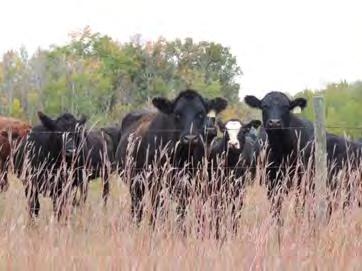
Bart Lardner, University of Saskatchewan
3:15 pm Adjourn
Agri-business booths will be set up. For more information, call the Manitoba Agriculture office in Portage at 204-239-3353.
Date: Tuesday, January 10, 2023 Tuesday, January 10, 2023
Time: 1:00 p.m. – 4:00 p.m. 7:00 p.m. – 10:00 p.m. Place: Eriksdale Community Centre Kinsmen Community Centre 22 Railway Ave., Eriksdale, MB 435 Burrows Ave., Grandview, MB
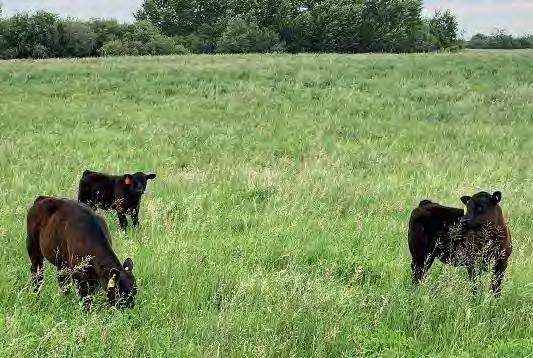
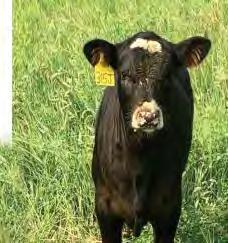
Date: Thursday Jan.12
Time: 9:00 am -12:00 pm Place : Rosa Hall - Shevchenko Ukrainian Centre 19 Church Rd, Rosa, MB

(November 8, 2022 Province of Manitoba News Release) Manitoba Health advises that a Pfizer infant vaccine was recently recommended for use in children aged six months to four years old. Most parents and caregivers who make a first vaccine appointment for a child in this age group should expect the Pfizer infant vaccine will be offered.
This vaccine is being distributed to clinics, pharmacies and vaccine sites across Manitoba and should be available as early as this week. The Pfizer infant vaccine is a three-dose series and each dose should be given at least eight weeks apart.
It is recommended that, whenever possible, children receive the same vaccine for each dose. The remaining provincial stock of the Moderna infant vaccine will be used as second doses for those who received that vaccine as a first dose. The National Advisory Committee on Immunization also strongly recommends the Moderna infant vaccine for immunocompromised children. Appointments can continue to be made by using the online booking tool, by contacting the vaccine call centre at (toll-free) 1-844-626-8222 (1-844-MAN-VACC) or by contacting medical clinics and pharmacies directly. Children must be at least six months of age at the time of their immunization appointment.
While not a substitute for vaccination, Manitobans are reminded that treatments are available for people who are at risk of more serious outcomes from COVID-19. Even people who are fully vaccinated may be eligible for these treatments. Higher-risk individuals who develop symptoms should contact a health-care provider or Health Links-Info Santé at 204-7888200 or 1-888-315-9257. Treatment must be started within days of symptom onset, so timing is important. For more information about treatment, including eligibility and access, visit: https://manitoba.ca/covid19/treatment/i ndex.html
• Vaccine finder: www.manitoba.ca/covid19/vaccine/fin der.html
• COVID-19 in Manitoba: www.manitoba.ca/COVID19
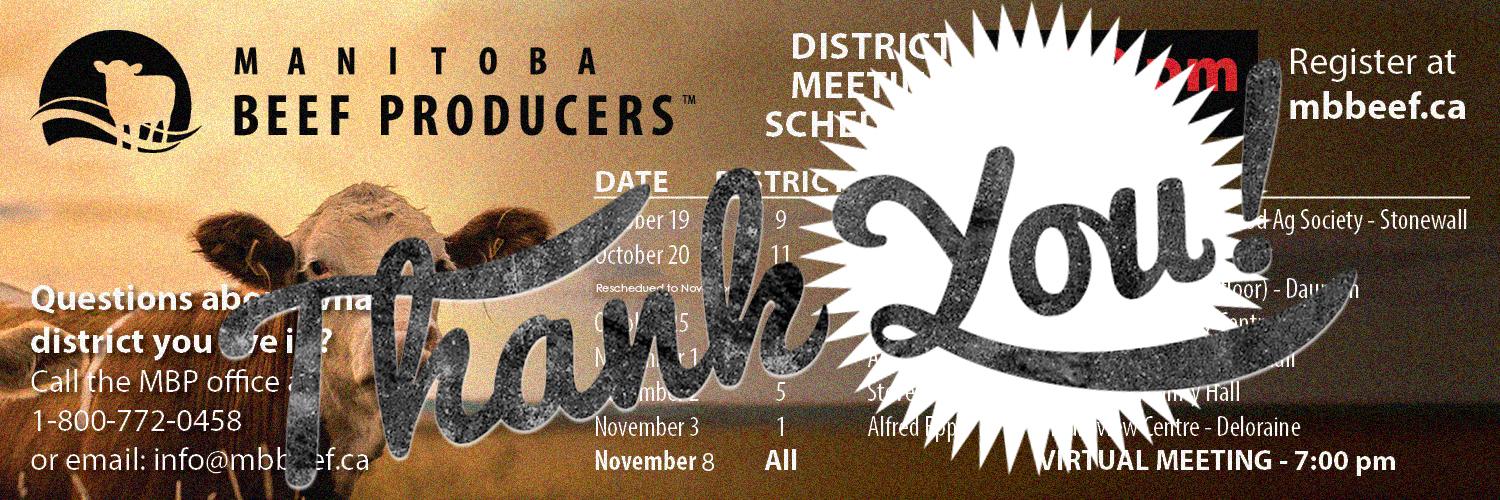
• Vaccine campaign: https://protectmb.ca/ and www.manitoba.ca/vaccine
• Vaccination data: www.healthinfobase.canada.ca/covid19/vaccination-coverage
• Testing information: www.manitoba.ca/covid19/testing/inde x.html
Provincial legislation prohibits the application of synthetic fertilizer and livestock manure between Nov. 10 and April 10 to prevent nutrient runoff, with limited exceptions if weather conditions permit Manitoba Environment, Climate and Parks has advised that no provincial variance is in effect this fall, so nutrients cannot be applied on or after November 10 due to the expectation of snow cover, frozen soils and below freezing temperatures.
When a regional/province-wide variance has not been issued for the winter application of nutrients and an individual producer believes their soil/weather conditions should be considered for a variance, agricultural producers must contact staff in the Nutrient Management Regulation program at nmr@gov.mb.ca or by phone at (204) 945-0002. If an individual wishes to make a formal request for a variance, the request must be provided in writing
by a Professional Agrologist or Certified Crop Adviser.
At any time throughout the winter, emergency situations may occur. Pursuant to Section 14(4) of the Livestock Manure and Mortalities Management Regulation (M.R. 42/98), the director may authorize winter application of manure due to an emergency situation or extenuating circumstance. Examples may include the manure storage facility reaching its capacity or the imminent failure of a manure storage facility. Information on Emergency Manure Spreading Requests is available or by contacting Environmental Approvals Branch at: mmpregistration@gov.mb.ca or by phone at (204)945-8321.
For more information on nutrient application rules, visit: https://www.manitoba.ca/sd/water/lakesbeaches-rivers/nutrient_management/
(November 10, 2022 Province of Manitoba News Release) Reaffirming its commitment to engage the next generation in the collective fight against climate change, the Manitoba government is inviting youth across the province to apply to the next cohort of the Youth Advisory Council on the Climate and Green Plan, Environment, Climate and Parks Minister Jeff Wharton announced.
“Young people have valuable ideas on mitigating climate change and our government recognizes the tremendous value of their forward-thinking perspectives,” said Wharton. “On Youth and Future Generations Day at COP27 the United Nations conference on climate change the Manitoba government is pleased to announce applications are now open for the next cohort of the Youth Advisory Council.”
Applications are open to Manitoba youth who:
• are between 15 and 29 years of age on Jan. 1, 2023;
• represent the diversity of Manitoba;
• are knowledgeable about issues related to the Made-in-Manitoba Climate and Green Plan;
• demonstrate a proven interest in environmental issues and community engagement;
• are able to engage in respectful, open discussion and be tolerant of conflicting viewpoints; and
• are not employed by the Manitoba government.

The minister noted applications are due at midnight on Nov. 30. The new cohort is expected to be in place in January 2023. Members will serve a one-year term until January 2024.

The Youth Advisory Council receives its mandate from, and reports to the minister’s Expert Advisory Council on the Climate and Green Plan. This independent group of experts has a mandate to provide advice and recommendations to the minister on implementing the climate and green plan in such areas as climate mitigation and adaptation, low-carbon economy, transportation and energy.
The minister noted the youth council was first established in September 2019, adding the two past cohorts provided critical forward-thinking input into several key strategies and recommendations on Manitoba youth’s perspective on climate change, as well as providing input into the Expert Advisory Council’s recommendations on green transportation and a provincial water strategy.
For more information on the Made-in-Manitoba Climate and Green Plan and to apply for the Youth Advisory Council visit https://manitoba.ca/climateandgreenplan/yac. html.
(Nov. 10, 2022 NCC News Release, Warren, MB) Tall grass prairies are globally rare, iconic to Manitoba and quickly disappearing. That’s why the Nature Conservancy of Canada (NCC) has conserved one of the largest, privately owned tracts of land supporting this endangered ecosystem in the province.
At nearly 2,700 hectares, Lake Ranch represents a large contribution to efforts to ensure that this emblematic and ecologically critical grassland continues to feed and foster the prairie lives that depend on it.
Grassland birds listed as threatened under Canada’s Species at Risk Act, such as the Sprague’s pipit and bobolink, breed in the large expanses of grasslands, while migratory wetland birds, like western grebes, flock to the expansive wetlands along the lake, which makes up part of the globally significant North, West, and East Shoal Lakes Important Bird Area.
The size of this conservation project, less than an hour from Winnipeg, in the Interlake region, will allow NCC to maintain the landscape-scale disturbances that are necessary to maintain grassland ecological integrity, such as compatible grazing, prescribed burns and other stewardship actions that will help maintain productive and healthy habitats.
The previous owners, The Lake Ranch Ltd. Group from Germany, recognized the global importance of these grasslands and had a vision of creating an ecological preserve and eco-lifestyle area. While past flood events in the area prohibited use of the property as a "natural neighbourhood," they recognized NCC as the group who could bring to life their vision where "nourishing and caring for nature is as important as nourishing and caring for the soul."
The previous owners also wanted to support local economy through Lake Ranch’s continued
agricultural use. The property has been managed as a livestock operation for nearly 100 years. Grasslands still exist on the property because of the relationship between compatible livestock grazing and healthy grasslands.
With the close connection to the nearby Woodlands Community Pasture, there’s an even greater understanding of the importance that healthy grasslands provide to economic security, biodiversity and a connection to past and future generations living in these iconic landscapes. Community pastures are community-owned or government lands, which have a long history of supporting livestock farmers by providing highquality grazing in balance with biodiversity and other ecosystem services.
The property will serve as an accessible conservation area for engaging local residents, providing ecotourism opportunities and connecting visitors to nature. The conservation of this project also provides opportunities to foster and steward a relationship with Manitobans and raise awareness that temperate grasslands are the most endangered terrestrial ecosystem on the planet, and of the important role that a grazing-based economy plays in maintaining this ecosystem.
This project was made possible by the Government of Canada, through the Natural Heritage Conservation Program, part of Canada’s Nature Fund. NCC also thanks Lake Ranch Ltd. who donated over 20 per cent the value of the Lake Ranch property, MapleCross Fund who made a lead gift to the project, and others who contributed to conserve these lands, including the Richardson Foundation and Jim and Leney Richardson.
The Lake Ranch project marks the start of NCC’s grasslands campaign in Manitoba. In the next five years, we aim to conserve thousands of hectares of one of the world’s rarest terrestrial ecosystems and
invite everyone to discover their connection to nature. Together, through purposeful actions, we have the opportunity to build toward a great good a thriving world. To secure the natural future of projects such as Lake Ranch and other iconic grassland landscapes in the province, NCC is looking to raise $25,000,000.
Grasslands and their associated habitats in Manitoba can sustain our food industries, offer healthy habitat to endangered species such as Dakota skipper, and grow nature-based solutions to some of the impacts of climate change and biodiversity loss.
It’s only by working together that we can save Manitoba’s grasslands.
This project showcases how NCC is accelerating the pace of conservation in Canada. In the past two years alone, NCC has influenced the protection of more than 1 million hectares (almost twice the size of Prince Edward Island), coast to coast to coast. Over the next few years, the organization will double its impact by mobilizing Canadians and delivering permanent, large-scale conservation.
In the face of rapid biodiversity loss and climate change, nature is our ally. There is no solution to either without nature conservation. When nature thrives, we all thrive.
• Lake Ranch contains intact prairie, forest, wetlands and portions of the East Shoal Lake complex.
• Lake Ranch is one of the largest privately owned tall grass prairie tracts in Manitoba.
• 112 bird species, including eleven shorebird species, have been documented at Lake Ranch and the adjacent lakes.
• The property is home to eight federallyand/or provincially-listed species, including:
o barn swallow o bobolink o eastern wood-pewee o monarch o northern leopard frog o red-headed woodpecker o Sprague’s pipit o trumpeter swan o western grebe
• Grasslands store carbon, slow flooding and help filter groundwater.
• Grasslands have evolved to thrive under disturbance, such as grazing and fire.
“Every single project that we do, big or small, is an act of hope, and personally reminds me that we’re not in this alone. It’s not just one ecologist against the world, it’s not the Nature Conservancy of Canada against the world, it’s the world with us wanting these prairie landscapes as part of its future. It just a matter of connecting people to the opportunities to support us.” – Cary Hamel, Director of Conservation, Nature Conservancy of Canada Manitoba Region
“The twin crises of climate change and biodiversity loss are two sides of the same coin, and we must tackle them together. By working with partners such as the Nature Conservancy of Canada, we are helping to protect the natural environment in Manitoba and across the country. Protecting lands plays a vital role in helping to halt and reverse biodiversity loss, and contributes to the recovery of species at risk. Through the Natural Heritage Conservation Program, the Government of Canada is making progress toward its goal of conserving a quarter of lands and oceans in Canada by 2025, working toward thirty percent of each by 2030.”
– The Honourable Steven Guilbeault, Minister of Environment and Climate Change
Great Tastes of Manitoba a farm to table collaboration showcasing the nutritious, affordable, delicious foods grown by Manitoba’s farmers. The well-known brand reaches consumers through a multi-platform approach which includes a website, social media presence, YouTube channel and Manitoba’s longest running locally produced television series broadcast on CTV. We are expanding our team with the addition of a part-time Digital Producer for the term of our 34th season, February 2023 – January 2024, with opportunity for renewal for future seasons. Due to the flexible nature of the position, hours will be determined based on the candidate’s strengths and availability, which could be up to 30 hours per week.
Successful applicant would be tasked with managing the Great Tastes of Manitoba digital channels, including updates to greattastesmb.ca and social media content creation. Successful applicants will report directly to the series senior producer, Donalee Jones.
Job Type: Part Time/Term
Compensation: Competitive freelance salary to be negotiated based on duties assigned
- Working with the GTOM Senior Producer to develop a targeted digital marketing plan in alignment with the GTOM strategic plan
- Working with the GTOM Senior producer to develop social media campaigns, photo, and video assets
- Tracking digital marketing metrics, providing recommendations based on results and trend analysis
- To solicit sponsorship and advertising and pursue strategic partnerships
Qualifications:
- Successful candidate must have permanent residence in the province of Manitoba
- Excellent verbal and written communication skills
- Excellent organizational skills with the ability to work independently
- Post-secondary education in marketing, communications, or creative field
- Proficiency with Meta Business Suite, YouTube Creator Studio, WordPress, and Google Analytics
- Minimum 2 years experience in Sales/Marketing or similar creative field
- Illustrated experience with building a successful YouTube following will be considered an asset
- Experience or knowledge of agriculture in Manitoba will be considered an asset
- Experience or knowledge of culinary arts/food will be considered an asset
- Successful candidate must have permanent residence in the province of Manitoba
Benefits of joining our team:
- Work independently from home OR at our offices at 509 Century Street (free parking)
- Flexible work hours
- On the job training and professional development opportunities
- Term contract renewal would be negotiated annually as funding allows
Application Process: Please submit a resume and at least three references to Great Tastes of Manitoba Senior Producer, greattastesmb@gmail.com, on or before December 9, 2023.
We thank all those that apply, but only applicants that meet the qualifications will be contacted for an interview
Are you interested in a dynamic role in the field of communications and marketing?
An emergency or disaster can place a tremendous strain on producers, animals, and the food supply chain. Outside of a foreign animal disease outbreak, livestock operations may experience damage and disruption from seasonal events and natural disasters.
While these challenges are difficult to predict, advance preparation can help safeguard the welfare of those involved, ensure business continuity, and encourage a speedy recovery after the unexpected event has passed.
This document has been developed to provide additional emergency guidance for producers and animal caregivers.
Structure Fire and Wildfire 2 Flooding 5
Power Grid and Utilities Failure 7 Severe Drought 9
Livestock Vehicular Transport Accident (Livestock Hauler) 10
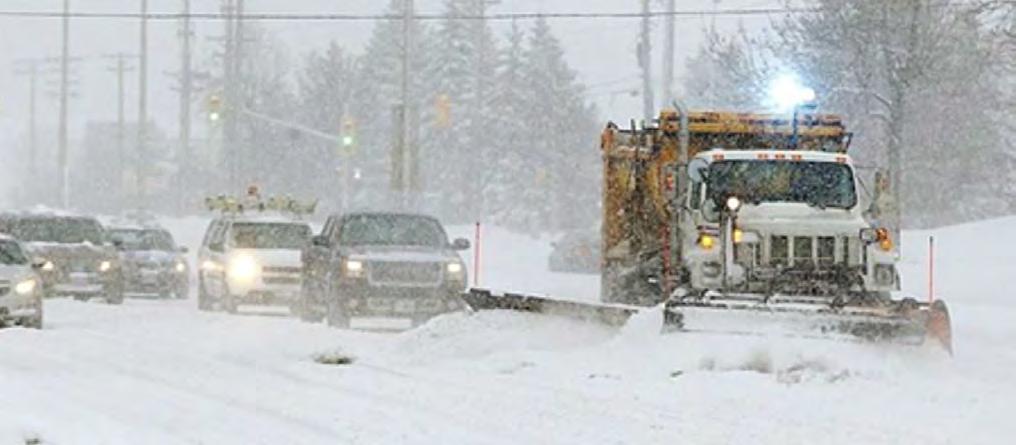
Fires can have a devastating impact on a farm. Whether it’s a small area fire or uncontrolled wildfire, flames can spread across vast tracts of land, posing serious threats to livestock in barns, pens, and pastures.
• Farm buildings, sheds, and residences may be seriously impacted during a fire. These structures often contain materials such as wood, hay, and straw that can act as feedstock and further fuel the blaze.
• The ignition of a fire may be triggered by engine exhaust, exposed wiring, or lighting as well as other on farm heat sources such as combustion of bedding, litter, or hay. It is important to keep flammable materials away from heat sources and to be aware that high moisture levels in bales can contribute to excess heat, mold growth, and loss of dry matter. Fortunately, almost all structure fires are preventable. By being observant and practicing common-sense fire prevention techniques you can help reduce risks.
• Always have professionals perform all wiring and electrical modifications to barns, livestock housing structures and shops
• Prohibit smoking in and around barns
• Store combustibles (hay, shavings, manure, gas, oil, propane, paint, cutting torches, etc.) away from the barn
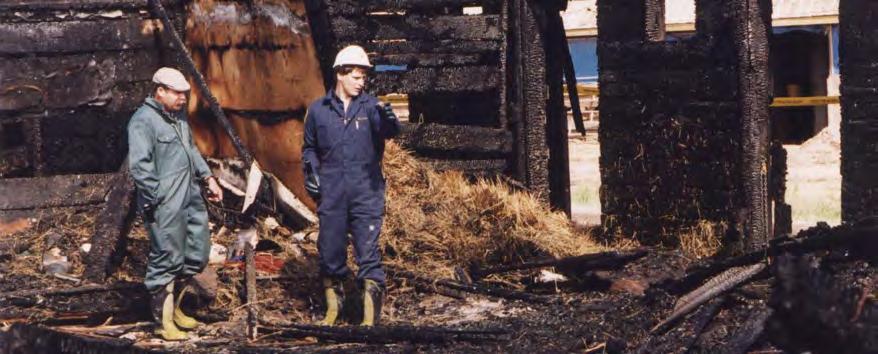
• Minimize the number of heat and electrical appliances in the barn that have the risk of sparking or causing fires
• Grain dust will ignite and explode. Do not try to auger grains during a fire
• Map the location of fire extinguishers, these should be in all barns, shops, and structures that have the potential to catch fire. Fire extinguishers should be easy to find within the structures, and all staff and family members should know where they are located and how to use them
• A structure can be completely engulfed in less than six minutes
• Panicked animals normally will not leave a barn on their own, because they do not fear fire
• Most animals are killed from smoke inhalation and those who do survive rarely recover
• Never put personal safety in jeopardy to save an animal
Horses
• Lead animals from the left-hand side
• Horses are easier to control when blindfolded
• A towel over the horse’s eyes, secured under the halter works well to keep horses from running back into the barn
Cattle
• Try to move cattle in a group instead of one at a time
• Beef cattle are commonly housed outside near or around a barn in groups. Move animals to a separate field away from the barn
• Isolation greatly stresses the animals, and they will generally be more cooperative if moved together
• Dairy cattle should be relocated to a protected area if the fire occurs in winter, as they cannot withstand extreme weather
• Bulls can be extremely dangerous and only people familiar with them should handle them
Swine
• Pig barn fires are very challenging. If numerous pigs are in a barn, they will be almost impossible to evacuate
• Pigs must be confined after removal from a barn, or they will attempt to run back into the burning structure
Poultry
• Due to the constraints and husbandry practices of poultry barns, the birds are almost impossible to evacuate
• Virtually all poultry barn fires result in a 100% loss
• If possible, turn off all power sources to the barn, shop, or any other affected structures
• If the barn roof is on fire, do not enter the structure as there is potential for the roof to collapse
• All severely injured or burned animals must be humanely euthanized as soon as possible following provincial guidelines:
• On-Farm Euthanasia Guidelines for Calves and Cattle
• On-Farm Euthanasia Guidelines for Sheep and Goats
• Practical Guidelines for On-Farm Euthanasia of Poultry
• Pig Euthanasia – On Farm Options
• Euthanasia of Horses
• Wildfires can spread across forests, grasslands, and fields at an astonishing rate. Farms near wildlands/ grasslands or owners that have livestock near these natural areas should be prepared for wildfires and know the steps to minimize risks and losses.
There are several proactive measures that can be completed in advance to prepare producers for a wildfire emergency including:
• Having contact information for prearranged off-farm evacuation sites (lairage points) handy
• Reviewing wildfire history in area
• Identifying and maintaining equipment that may help fight an approaching grassfire or wildfire (e.g., disk, harrow, tractor, water truck)
• Reducing vegetation and wood debris within 10 to 30 meters of farm structures by thinning and pruning
• Creating firebreaks by clearing vegetation and exposing bare soil to help curb the movement of wildfire
• Mapping the location of fire extinguishers, these should be in all barns, shops, and structures that have the potential to catch fire. Fire extinguishers should be easy to find within the structures, and all staff and family members should know where they are located and how to use them
• Predetermining the location evacuation sites and routes that may be used for animal movement and have a map of the identified areas readily available for all staff, family and first responders
• Storing hay, straw, beddings/shaving outside the barn in a dry, covered area, if possible
• Having water and feed readily available or at the pre-arranged lairage site(s) to ensure that all affected livestock have sufficient feed and water
• Creating a detailed inventory of livestock and developing list of emergency contacts prior to any wildfire event
• If in a wildfire susceptible area, procuring and installing some type of irrigation/ sprinkler system to help suppress fire
• Preparing an evacuation kit that includes but is not limited to:
• Supply of feed, supplements, and water for 7 to 10 days
• Blankets, halters, leads, water buckets, feed buckets
• Copies of vaccination records, medical records, and proof of ownership
• Tools
• Cash and credit card
In the lead up to and during a wildfire emergency, producers will try to protect their farms and prevent losses. As you respond to the threat of wildfire consider the following:
• Evacuating employees/visitors to an agreed safe meeting place as required
• Notifying the fire authority immediately. In my area, the number is _______________________
• Assessing the fire and only attempting to contain or extinguish a small fire if it can be done safely
Flooding is a natural and often seasonal hazard that can be extremely disruptive and can pose a threat to animal and human health.
The most common cause of flooding is rain and/or snow melt that accumulates faster than it can be absorbed into the soil, drainage, or water bodies.
Not only can flooding cause immediate issues with rising water levels, but it can also disrupt services and create broader public health concerns.
By assessing the threat of flood and being prepared, producers can improve their readiness for an emergency. The risk of flooding will depend on the geographical location (e.g., proximity to creeks, streams, and rivers) as well as topographical features (e.g., drainage basins, low lying land, etc.).
High Stream Flow Advisor
Flood Watch
Flood Warning
• River levels are rising or likely to rise rapidly, but no major flooding is expected
• Minor flooding is possible
• River levels are rising and will approach or may exceed the banks
• Flooding of areas adjacent to affected rivers may occur
• River levels have exceeded the top of the bank or will surpass it imminently
• Flooding will occur in areas near affected rivers
1. Unconfined animals can usually take care of themselves during a flood
2. The farmer’s goal should be keeping livestock high and dry
3. Your local emergency coordinator can provide up-to-date flood information and forecasts
There are activities that can be completed prior to a flood that will better prepare producers in the event of an emergency including:
• Reviewing local or provincial floodplain map and assessing flooding potential
• Identifying locations where livestock can be moved, on-site and/or off-site, including evacuation route
• Mapping out safe locations and routes
• Identifying livestock haulers that could assist in livestock movement on short notice, if applicable
• Identifying higher ground for equipment relocation (e.g., motors, tractors, tools, etc.), pesticides, fertilizer, or other chemicals
• Identifying electrical power switches/breaker to shut off power to areas where flooding is imminent
• Locating feed, bedding material, medications, etc., in areas unlikely to be flooded

• Considering methods of moving feed and water to low flood risk locations
• Checking that backup generators are in working order and extra fuel is available in the event of a power outage
• Test sump pumps regularly and install a back-up system (for example, battery back-up or generator)
The necessary approach during a flood will depend on various factors including river or stream levels, winter snow load, ground conditions, and current and forecasted precipitation.
It is important to stay informed of situation developments and relocation instructions as they are communicated through online channels, television, radio, and social media. Always follow evacuation orders and ensure human safety first.
Actions to consider if an evacuation order is issued and time permits movement of animals:
• Arrange trucks, trailers, drivers, and handlers to move animals if necessary
• Use pre-arranged route to move livestock to a location where they will be safe from the flood (high ground) whether that be on-farm or off-farm
• Turn off electricity to barns and other structures to prevent fires or electrocutions
• Ensure animals have access to food, clean water, and ample living area
• If there is a possibility that dairy barns may become inundated, drive cattle out of the barn. During rapid rise of water, cattle often refuse to leave the barn and may drown inside if the water rises high enough. For this reason, begin evacuation measures before a state of emergency
• Opening gates and/or cutting fences will allow animals to move and avoid the flood if livestock cannot be moved to a pre-determined safe area. If animals are set free, local authorities should be notified immediately
• Block off narrow passageways where animals would be unable to turn around. A few heavy animals in a narrow dead end can be dangerous
Utility outages are generally unexpected and inconvenient. These downtimes can be triggered by a variety of events, including severe weather, wildfire, and other potential hazards.
Producers should consider the length of time their operations can function without electricity, natural gas, or water. Preparation and appropriate response will minimize the impact of prolonged outages and will help protect your equipment and livestock.
• Look up and down – look for electrical hazards overhead and underground
• Stay back – make sure you’re standing at least 10 meters away from fallen power lines
• Call for help – if you see a power line on the ground, stay back at least 10 meters and call 911

• Determine what critical equipment and facilities rely on electrical power, natural gas, and/or water. Plan for if these utilities are unavailable
• Estimate how long can you operate without the utility
• Determine backup measures and have them available
The following activities may help prepare producers in the event of an emergency:
• Ensure backup generators are available, in working order and are tested regularly
• Have sufficient fuel available to run generator(s) for at least seven days
• Identify locations of electrical breakers, water shut-off, and natural gas/propane shut-off and include on farm site map
• Ensure electrical panels are well-marked and breakers can easily be turned off
• Ensure that all cold and freezer storage for items such as milk, nutrients and vaccines are connected to back-up power
• Test critical equipment with backup power and ensure working as required
• Identify equipment that should be shut off during a power outage and record the sequence for reinstating power
• Determine how livestock will be fed and watered during a power failure
• Identify backup measures to supply heat for animals, if applicable
• Store battery-operated lights in a location that is easily accessible and have fresh batteries on hand
• Create a contact list that includes energy suppliers and electrician details
• Protect sensitive equipment with surge protectors
• Back up computer files regularly
Cattle - beef and dairy
• Lactating cows have an increased requirement for water; necessary steps should be taken to ensure those cows and all other affected cattle do not obtain their water intake solely by eating snow
• Ensure that milking equipment and pumps are powered by generators to prevent milk supplies from spoiling and to reduce the risk of animal mastitis from the inability to perform daily milking activities
• Ensure that water supply is continuous for all cattle. During the wintertime, ensure that water does not freeze in pipes
Horses
• Ensure horses maintain water intake, especially during the summertime as heat stress is deadly to animals
• Low forage consumption increases colic risk
• On an emergency basis horses can use snow as a water source, however supplying them with a source of fresh water during power outages should be a high priority
Poultry
• Provide power to poultry barns immediately as drastic changes in temperature can have a detrimental effect on flock health
• Ensure that power is provided to barns that have electrically powered ventilation systems to ensure proper airflow and prevent oxygen depletion in the barn
• Ensure any water pumps/ watering equipment is connected as drastic changes to water intake can have a detrimental effect on poultry health
Droughts pose a serious threat to livestock and farming operations due to the inability to provide sufficient water to animals and the feed required to keep these animals alive.
Droughts can be categorized based on the population it impacts:
• Meteorological droughts are determined by the degree, duration, and other characteristics of the dry weather period
• Agricultural droughts link the meteorological droughts to agricultural impacts, accounting for soil and plant properties
• Hydrological droughts are related to the effects of dryness on surface and ground-water supplies
Producers can take the following actions to prepare for low water and drought conditions:
• Develop a drought plan. Drought plans should identify the group or class of livestock to be depopulated first if necessary and at what point each group will be removed if the drought persists. This also includes noting any potential toxic or poisonous plants present in the grazing/ pasture lands which may become more prevalent due to the drought conditions
• Formulate a selling policy to help deal with classes of animals that are eligible for sale and the rate at which they are brought to market. Check for animals which are pregnant and that are younger in age.
• Wean calves as early as possible. This is important because this will allow heifers and cows to stay in better body condition
• Combine groups of animals for grazing. This will concentrate more animals in a single herd which decreases the number of paddocks/pastures being used at any one time
• Use instrumentation such as level sensors or rain gauges to measure how much water your crops are receiving
• Ensure the irrigation system doesn’t water faster than the ground can absorb
If low water/ drought conditions arise the following broad points can be applied to help reduce the risk of livestock problems and manage water until a permanent solution can be implemented.
• Consider reducing herd size to reduce the required amount of forage, feed and water required to keep the animals alive and healthy. Consider marketing healthy cattle to reduce stock
• Check for pregnant cows and potentially wean calves off faster to reduce water and feed consumption rates
• Feed and water testing are especially important during times of drought since uncommonly used water sources maybe used (i.e., dugout water)
• Extended rest periods and increased recovery times are necessary to protect plants during dry periods
• Attempt to leave plant residue/ litter on the soil surface to help moisture loss, shading and erosion from the elements to encourage plant forage growth and recuperation
• Locate areas where poisonous plants continue to grow as various species grow faster during drought conditions
• Seeding annuals as an emergency source of forage to supplement perennial pastures may be an option during periods of drought.
Thousands of animals are transported via livestock trucks across Canada, acting as a key and integral process in the farm-to-fork continuum. Though the likelihood of a truck vehicular accident is low, the risk is still present. Livestock transport accident knowledge and understanding is paramount to ensure animal, public and environmental safety.
The following list of general steps to guide action during a livestock vehicle accident:

1) Immediately call 911 to report the accident. In the event that the driver is incapacitated, the first individuals at the scene should establish contact with the authorities
• Communicate any human injuries and indicate the type and estimated number of livestock involved in the accident to the authorities
2) Emergency warning devices i.e., pylons, warning lights, should be set out at the scene and appropriate company or farm personnel should then be notified
3) Attempt to herd/ corral any loose animals to prevent further accidents and/or traffic obstructions
4) If possible, work with first responders to free/ save any livestock trapped as part of the accident
5) Identify any compromised/ injured animals which may not be able to be transported humanely in accordance with Health of Animals Act part XII
6) Contact local veterinarians to determine whether there is a requirement to euthanize animals
7) Follow the direction veterinarians and emergency management authorities to close/ finalize the vehicle rollover situation
Set up containment before removing or releasing animals from trailer
Relocate livestock from holding areas into new trailers calmly
Obtain a head count on all livestock involved in the accident including but not limited to healthy, injured, and deceased livestock
Do not remove animals from wrecked trailer until corralling/ containment area for animals is established
Do not yell, make abrupt or loud noises when handling animals as they may be easily spooked, causing them to be more difficult to handle. Do not use sirens or horns to herd livestock
Do not attempt to remove livestock using machinery, equipment, ropes/winches, etc. Manual extraction techniques are safe and effective for removing livestock Do not become a secondary victim at an accident. All safety protocols must be followed
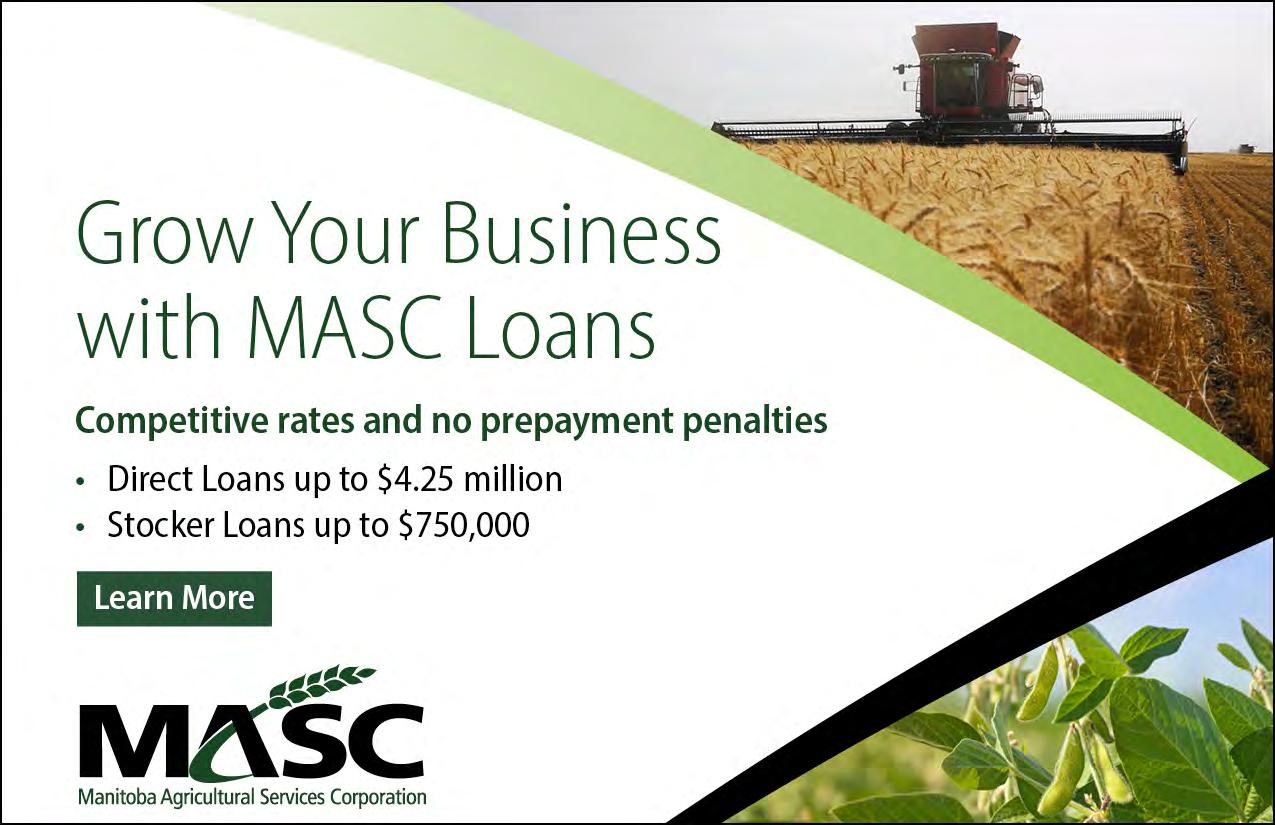
November 10, 2022
For Immediate Release
(Calgary, AB) Responding to a need brought forward by industry and under the direction of the Board of Directors, Canadian Cattle Identification Agency (CCIA) has just launched an initiative that links non-approved Ultra High Frequency Technology (UHF) secondary tags to approved CCIA tags in the Canadian Livestock Tracking System (CLTS), database. This new feature allows UHF users to link the UHF tag to the CCIA tag, so when either tag is read, it points to the same animal in the database.
“This is a positive step forward in supporting UHF currently being used for management purposes and in some cases, it will facilitate cattle exports and provide accurate information for accompanying health papers,” says CCIA’s General Manager, Anne Brunet-Burgess.
UHF technology is of interest to some segments of the industry where the technology is being leveraged for better record keeping. Some of the potential advantages of a UHF technology-based system include a longer read range and the ability to read many tags at once, making handling more efficient. UHF tags require dedicated reading equipment for this technology. This new feature in the CLTS was made possible with the financial support of Agriculture and Agri-Food Canada under the AgriAssurance Program.
The global standard currently in use for electronic livestock identification uses low-frequency radio frequency identification (RFID) ear tags for livestock. Discussion regarding the move to a new technology which uses ultrahigh frequency has been going on for over a decade. While the international standard for a UHF numbering scheme for livestock is still under development, CCIA’s tag pairing initiative makes it possible for industry to get a head start using this new technology. To activate this feature, CLTS account holders must contact CCIA.
The history of tags in Canada goes back to 1998 when the first iteration of the National Identification (ID) program was implemented by CCIA for cattle and bison. For more detail on the evolution of tags and how it all came to be a national program with global ties, see The Story of Tags
Canadian Cattle Identification Agency (CCIA) is led by a Board of Directors representing 15 livestock organizations across Canada, including: livestock producers, auction markets, livestock dealers, feedlots, veterinarians, and processors. CCIA is the responsible administrator of traceability for beef cattle, bison, sheep, and pending regulation cervids and goats in Canada (except for Québec where CCIA only administers bison and goats). -30-

For more information, contact: Karen Meades |Communications Manager, CCIA |403-606-2443| kmeades@canadaid.ca
7171-107 Avenue SE, Calgary, AB T2C 5N6 Tel: (403) 275-2083 Fax: (403) 275-1668 Toll-free: 1-877-909-2333 www.canadaid.ca
Farm Management Canada, in partnership with MNP, is pleased to offer Canadian beef farmers the opportunity to sign up for our Farm Financial Fluency training program.
From registering for the program, you will benefit from a deeper understanding of your financial situation and the different options available to remain competitive and take calculated risks for continued success. The program will focus on beef production and be applicable to farmers across Canada
Through the Farm Financial Fluency program, you will learn:

✓ Why financial reporting is important and to whom
✓ Key differences between types of financial reporting and who uses what
✓ Different farm business structures and their impact on financial reporting
✓ How to interpret your financial statements (balance sheet, income statement)
✓ Financial ratios and how to use them to analyze risk
✓ How to spot potential financial issues and opportunities
✓ Tools and resources available to manage financial risk

The program consists of three 2-hour sessions spaced out to allow time for reflection and homework. There is also an optional complimentary meeting (60 minutes) with an MNP business advisor to discuss the interpretation of your own financial statements.
WHEN: December 12, 14 + 16 from 1-3p.m. EST
WHERE: Online
COST: $250 + HST
REGISTER: https://FarmFinancialFluencyforCanadianBeefFarmers.eventbrite.ca
You should be available to attend all three sessions to make the most out of the program. Program capacity is 40 registrants, so don’t delay! Register today!
For help with your registration, please contact the program organizer: Farm Management Canada
Tel: 1-888-232-3262 or (613) 237-9060 Email: info@fmc-gac.com
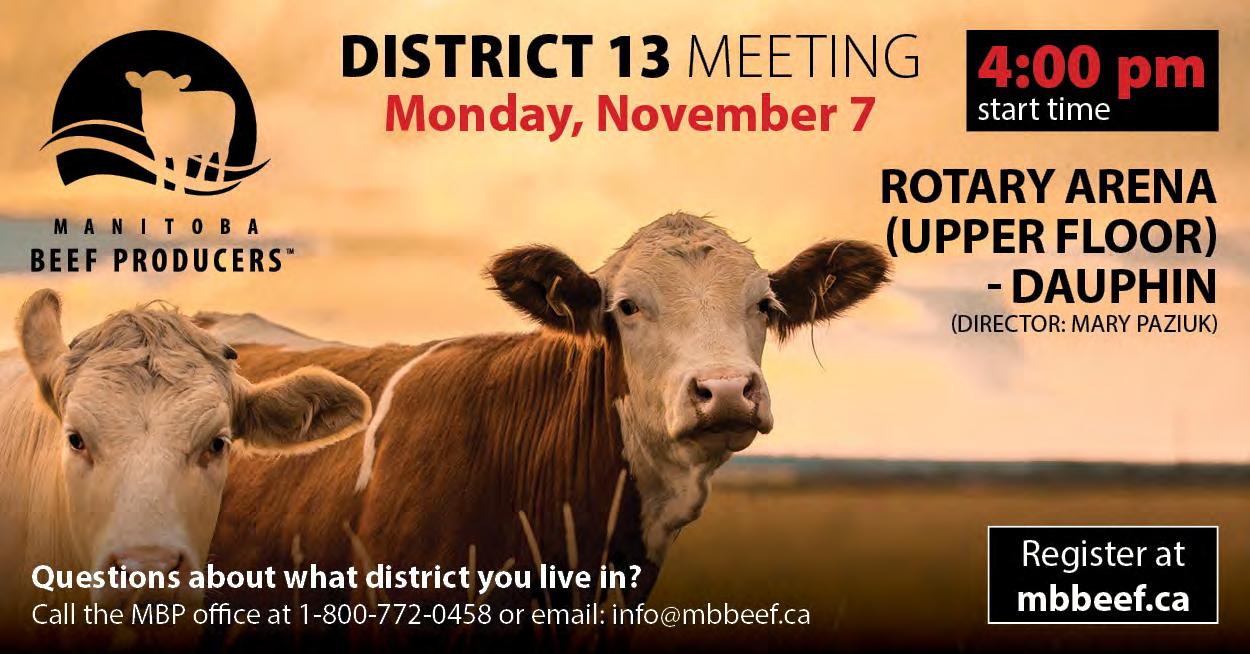

(November 1, 2022 Province of Manitoba News Release) The Manitoba government has approved 89 projects that mitigate against future disasters under the 2022 Mitigation and Preparedness Program (MPP), Transportation and Infrastructure Minister Doyle Piwniuk announced.
“Our government is committed to supporting not only the post-disaster recovery needs of municipalities, but also their capacity to prepare for future events,” said Piwniuk. “This innovative initiative, delivered through the Manitoba Emergency Measures Organization, offers an important opportunity for municipalities to build local resiliency against natural disasters, extreme weather events and the impacts of climate change.”
First introduced in 2020, the MPP opens when a disaster financial assistance (DFA) program is established for a natural disaster and the cost of the DFA program is
sufficient to be eligible for federal cost-sharing arrangements.
The majority of municipalities with a claim under the 2022 Spring Flood DFA program also applied for MPP project funding, which enables municipalities to invest municipal DFA deductibles into an approved mitigation or preparedness project. Up to a maximum of $2.6 million in municipal DFA deductibles will now be used by municipalities to undertake these 89 local projects.
The MPP provides municipalities with flexibility to use deductibles for a project of their choice that builds local resiliency to natural disasters including the purchase of equipment or use of funds for a capital project. Municipalities also have the option to place funds in reserve until a project is selected.

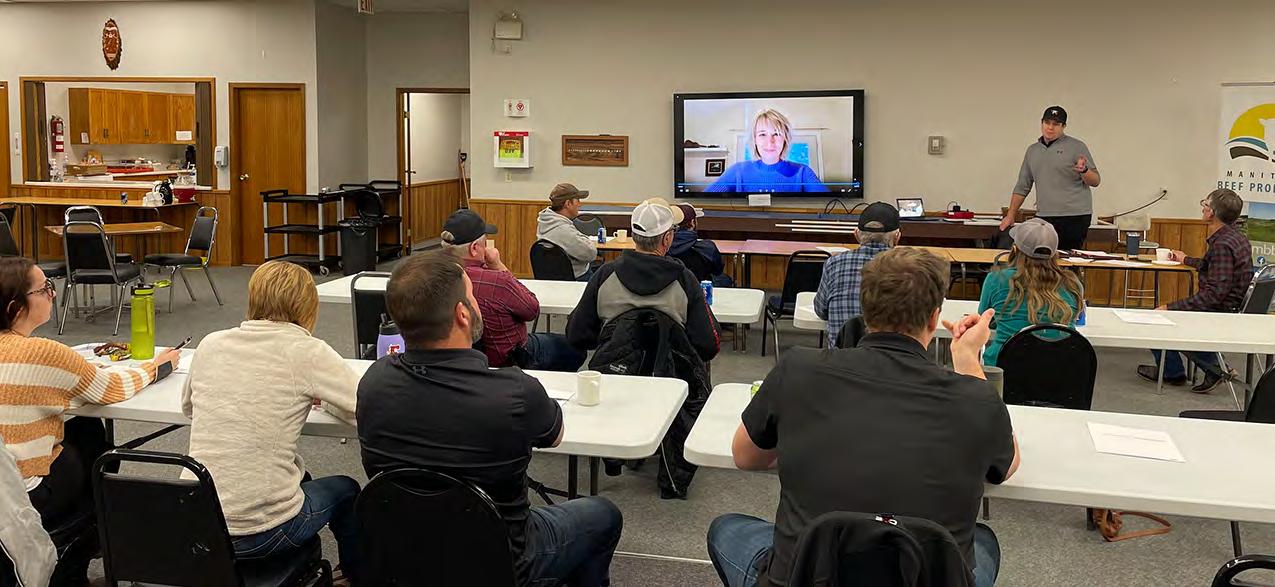 Manitoba Beef Producers visited Deloraine on November 3 for a district meeting and update to producers. Pictured on the television screen is Jennifer Babcock (Senior Director, Government and Public Affairs, Canadian Cattle Association) who joined Carson Callum (MBP eneral Manager, standing) and Alfred Epp (District 1 Director, seated, far right). The final in-person meeting will be in Dauphin on November 7 followed by a virtual district meeting open to all producers on November 8. For more information, please visit https:// mbbeef.ca/events/2022-district-meetings/. (Photo credit: Melissa Atchison)
Manitoba Beef Producers visited Deloraine on November 3 for a district meeting and update to producers. Pictured on the television screen is Jennifer Babcock (Senior Director, Government and Public Affairs, Canadian Cattle Association) who joined Carson Callum (MBP eneral Manager, standing) and Alfred Epp (District 1 Director, seated, far right). The final in-person meeting will be in Dauphin on November 7 followed by a virtual district meeting open to all producers on November 8. For more information, please visit https:// mbbeef.ca/events/2022-district-meetings/. (Photo credit: Melissa Atchison)
“We commend the Manitoba government for investing in 89 municipal projects under the 2022 MPP. We also commend municipalities for participating in this important program and investing in projects to help our communities become more resilient,” said Kam Blight, president, Association of Manitoba Municipalities. “As municipalities cannot fight extreme weather events alone, this funding support will not only help build local resiliency but also help municipalities better prepare and invest in disaster mitigation infrastructure to avoid costly damages in the future.”
The Manitoba government is proud to support innovative projects such as flood risk mapping along the La Salle River, water retention partnerships with watershed districts, dike enhancements in areas along Lake Winnipeg, relocating public and private infrastructure susceptible to repeat flooding, and equipment for training volunteers to be prepared during an event, the minister noted. Other common projects include raising roads, enhancing culvert design, and purchasing generators, water pumps, and culvert steamers.
For more information about the MPP, visit: https://gov.mb.ca/emo/mitigation/mpp.html

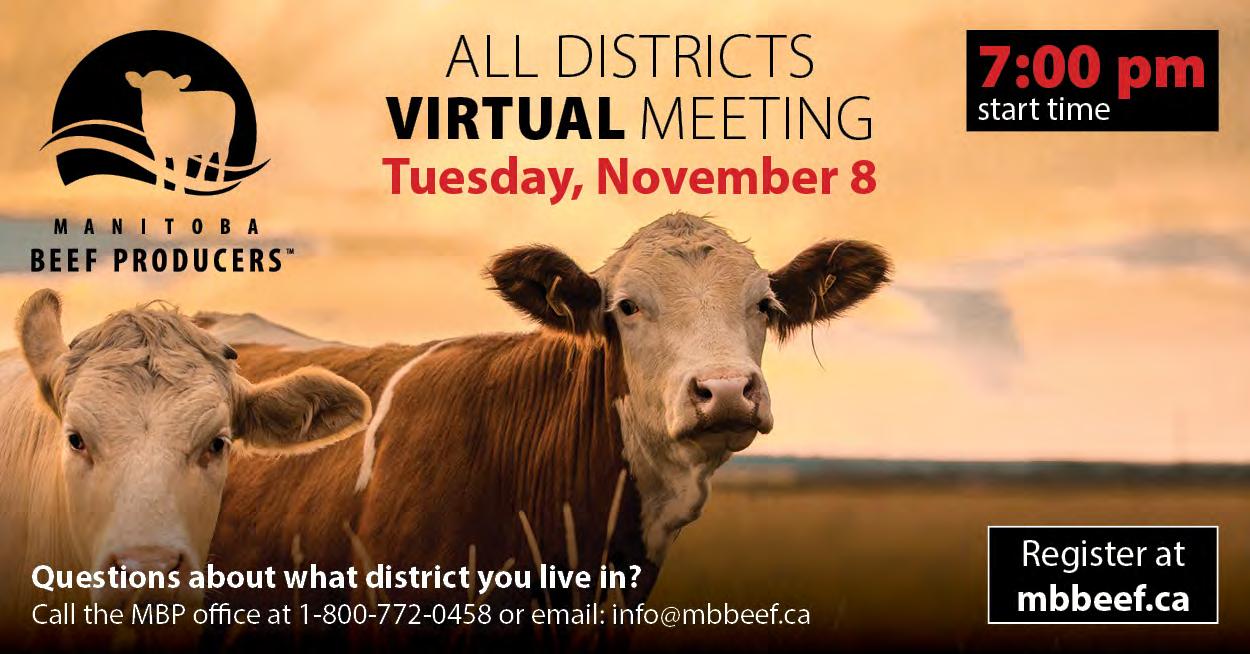
Municipality of Emerson-Franklin: up to a maximum of $20,629.21 for sewer lift station generators for Dominion City and Emerson;
Rural Municipality of Montcalm: up to a maximum of $10,818.27 for a reserve fund;
Rural Municipality of Ritchot: up to a maximum of $63,225.09 for a reserve fund;
Municipality of Clanwilliam-Erickson: up to a maximum of $8,566.58 to expand drainage capacity by installing additional culverts in rural areas;
Rural Municipality of Cornwallis: up to a maximum of $38,668.12 to study high-water levels on Lake Clementi to provide options for long-term solutions;
Municipality of Harrison Park: up to a maximum of $15,677.18 to change main lift station to a submersible pump;
Town of Minnedosa: up to a maximum of $23,202.57for aflood mitigation study;

Rural Municipality of Minto-Odanah: up to a maximum of $9,489.27 for water retention structures;
Rural Municipality of Mountain: up to a maximum of $8,295.70 for a reserve fund;
Town of Neepawa: up to a maximum of $48,123.53 for the replacement and relocation of public infrastructure subject to flooding;
Rural Municipality of Rosedale: up to a maximum of $12,900.66 for a sandbagging machine and safety signage;
Rural Municipality ofWhitehead: up to a maximum of $14,212.74 for larger culverts, beaver cages, and a generator for a reception centre;
Rural Municipality of Yellowhead: up to a maximum of $15,584.07 to develop a drainage plan;

City of Morden: up to a maximum of $84,048.99 to increase the capacity of the Parkhill Street Bridge on Dead Horse Creek;
Rural Municipality of Alexander: up to a maximum of $32,624.00 for an engineering study to evaluate raising existing dikes/building newdikes to protect Hillside Beach area and Victoria Bay Estates;
Rural Municipality of East St. Paul: up to a maximum of $82,322.13 for a municipal land drainage study;
Rural Municipality of La Broquerie: up to a maximum of $56,927.13 for an emergency generator;
Rural Municipality of Louise: up to a maximum of $17,141.63 for adrainage study near Pilot Mound;
Rural Municipality of Morris: up to a maximum of $25,809.79 for road improvements to raise Road 2E (Riverside Road);
Rural Municipality of Piney: up to a maximum of $15,601.00 for road improvements to raise Road 81E south of Sprague;
Rural Municipality of Portage la Prairie: up to a maximum of $58,306.92 for a reserve fund;
Rural Municipality of Rhineland: up to a maximum of $49,257.84 for equipment purchases to monitor Border Road duringflood events;
Village of St-Pierre-Jolys: up to a maximum of $11,046.83 for the third phase of the northwest storm sewer upgrades;
Rural Municipality of Thompson: up to a maximum of $12,849.87 to hire a consultant to study drainage issues in Miami;
Rural Municipality ofWoodlands: up to a maximum of $32,141.61fora drainage improvement feasibility study for the town of Warren;
Town of Altona: up to a maximum of $36,120.16 to expand the existing northwest storm drainage ditch;
Rural Municipality of Souris-Glenwood: up to a maximum of $21,560.36 for a reserve fund for future improvements of drainage systems;
City of Selkirk: up to a maximum of $88,916.36 for a structural assessment of the Selkirk wharf, a land drainage study and masterplan and public education supplies;
Rural Municipality of Argyle: up to a maximum of $8,414.21 for a reserve fund;
Rural Municipality ofWest Interlake: up to a maximum of $18,860.02 for a reserve fund;
Rural Municipality of Grey: up to a maximum of $21,306.41 for a reserve fund;
Town of Teulon: up to a maximum of $10,124.14 for emergency operations centre equipment, safety equipment, tractor pumps and hoses and training;
Rural Municipality of Dufferin: up to a maximum of $21,526.50 to rip rap culverts;
Rural Municipality of Grahamdale: up to a maximum of $10,818.27 for 3.5 miles of road survey for initial flood mitigation strategy development;
Rural Municipality of Ellice-Archie: up to a maximum of $7,034.42 for a reserve fund;
Rural Municipality of Stanley: up to a maximum of $76,024.17 for agenerator for municipal offices;
Rural Municipality of St. Francois Xavier: up to a maximum of $12,265.79 for culvert/drain upgrades in high risk areas;
Municipality of Mossey River: up to a maximum of $12,274.25 for an enclosed trailer for a culvert steamer;
Municipality of Norfolk Treherne: up to a maximum of $14,983.05forthe Alberni flood prevention project;
Municipality of Glenboro-South Cypress: up to a maximum of $9,506.20 for an alarm system for the lift station and lagoon;
Rural Municipality of Coldwell: up to a maximum of $11,114.55 for drainage upgrades;
Rural Municipality of Gimli: up to a maximum of $55,606.59 for larger capacity pumps;
Municipality of GilbertPlains: up to a maximum of $12,020.30 for a reserve fund;
Rural Municipality of Roland: up to a maximum of $9,692.43 to raise Arctic Road;
Rural Municipality of Armstrong: up to a maximum of $16,650.66 for an enclosed trailer for a culvert steamer;
Rural Municipality of Hanover: up to a maximum of $145,733.44 for water pumps;
Rural Municipality of Victoria: up to a maximum of $10,056.42 to undertake drainage work with the RedboineWatershed District;
Municipality of North Norfolk: up to a maximum of $33,140.48 for a reserve fund;
Municipality of Rockwood: up to a maximum of $71,444.60 for the purchase of pumps, undertaking road improvements, and completing road 88N ditching project;
Municipality of Bifrost-Riverton: up to a maximum of $28,103.80 for pumps and a pump trailer;
Town of Powerview-Pine Falls: up to a maximum of $10,488.14 fora reserve fund;
Rural Municipality of Riding MountainWest: up to a maximum of $12,206.53 for a reserve fund;
Municipality of Swan ValleyWest: up to a maximum of $23,354.94 for a reserve fund;
Municipality of Minitonas-Bowsman: up to a maximum of $13,433.96 for a reserve fund to increase the culvert size at NW10-35-26W1;
Municipality of Ethelbert: up to a maximum of $5,485.32 for a culvert steamer;
Rural Municipality of De Salaberry: up to a maximum of $33,165.87 for a reserve fund;
Municipality of Glenella-Lansdowne: up to a maximum of $9,590.85 for a reserve fund;
Village of Dunnottar: up to a maximum of $8,371.89 for a reserve fund;
Rural Municipality of St. Andrews: up to a maximum of $99,235.20 for a reserve fund for future dike repair;
Municipality of Deloraine-Winchester: up to a maximum of $12,511.27 for a reserve fund;
Rural Municipality of Victoria Beach: up to a maximum of $5,832.39 for the purchase of a skid steer to deliver materials for dike repairand maintenance;
Rural Municipality of Lac du Bonnet: up to a maximum of $30,160.80 for a reserve fund;
City of Dauphin: up to a maximum of $70,835.12 for a reserve fund;
Rural Municipality of Brokenhead: up to a maximum of $45,829.51 for rip rap at selected sites;
Municipality of Oakland-Wawanesa: up to a maximum of $14,881.47 for a reserve fund;
Municipality of Roblin: up to a maximum of $26,148.39 for a generator;
Rural Municipality of Dauphin: up to a maximum of $18,081.24 for a reserve fundfor future road raising;
Rural Municipality of Lakeshore: up to a maximum of $10,039.49 for a reserve fund;
Rural Municipality ofWhitemouth: up to a maximum of $13,797.95 for culvert upgrades;
Municipality of Prairie View: up to a maximum of $18,292.87 for a reserve fund;
Municipality of McCreary: up to a maximum of $6,331.82 for a reserve fund to purchase generators, undertake lagoon repairs, and undertake sewer line replacement;
Municipality of Pembina: up to a maximum of $20,366.79 for a culvert steamer with covered trailer;
Rural Municipality of Alonsa: up to a maximum of $10,242.65 for adiesel water pump;
Municipality of Grassland: up to a maximum of $13,400.10 for emergency response supplies;
Municipality of Rossburn: up to a maximum of $8,236.45 for a portable generator;
Rural Municipality of Cartier: up to a maximum of $28,306.96 for a reserve fundfor a generator;
Rural Municipality ofWest St. Paul: up to a maximum of $56,563.13 for upgraded culvert capacity;
Rural Municipality of MacDonald: up to a maximum of $68,735.80 for one-in-200-year flood risk mapping on the La Salle River;
Rural Municipality of Headingley: up to a maximum of $36,661.92 for a reserve fund for the Dodd's Road Flood Mitigation Project;
Rural Municipality of Springfield: up to a maximum of $136,642.03 for a reserve fund;
Municipality of Ste Rose: up to a maximum of $13,467.82 for a reserve fund;
Municipality of Ste. Anne: up to a maximum of $47,268.56 for a drainage project with the Seine Rat RoseauWatershed District;
Municipality of Cartwright-Roblin: up to a maximum of $11,309.24 for a reserve fund;
Rural Municipality of Oakview: up to a maximum of $16,320.52 to purchase pumps to assist with heavy rain events;
Rural Municipality of St. Laurent: up to a maximum of $13,053.03 for a reserve fund;

Rural Municipality of St. Clements: up to a maximum of $98,075.49 for a reserve fund for flood mitigation equipment;
Municipality of North Cypress-Langford: up to a maximum of $25,488.12for a reserve fund intendedfor bridge enhancements;
Town ofWinnipeg Beach: up to a maximum of $12,181.14 for a reserve fund; and
Town of Arborg: up to a maximum of $10,826.74 for the purchase of flood tubes.
(November 4, 2022 Province of Manitoba News Release) The Manitoba government has passed legislation amending the Environment Act to give Manitobans the choice to be able to purchase and use cosmetic pesticides on their lawns that are already registered with Health Canada and, out of an abundance of caution, the list of sensitive areas that would be protected from the application of these products has been expanded, Environment, Climate and Parks Minister Jeff Wharton announced.
“Our government is committed to protecting the environment and we rely on science to inform the proper use of cosmetic pesticides. We recognize Health Canada as the foremost expert in this field to evaluate pesticides used in Manitoba,” said Wharton. “Pesticides registered with Health Canada go through a rigorous review process that assesses the risk of pesticides to human health, animal health and the environment, and must meet strict health and safety measures. Manitoba will continue to rely on Health Canada to evaluate pesticide products and all pesticides sold and used in Manitoba must be federally registered under the Pest Control Products Act.”
Manitoba still has the strictest pesticide regulations among the Prairie provinces by prohibiting cosmetic pesticide use in sensitive areas, the minister noted.
“By expanding the list of sensitive areas, our government continues to protect children and pets, while keeping communities safe and minimizing environmental impact. These protected areas include schools, hospitals, child-care centres, provincial parks, designated municipal picnic areas, playgrounds and dog parks,” said Wharton.
To understand better the experience of Manitobans with previous cosmetic pesticide restrictions, which were put in place in 2015, the Manitoba government launched a public consultation. More than 60 per cent of respondents indicated restrictions on the sale and usage of pesticides for cosmetic use were too strict and over 70 per cent of respondents wanted restrictions reduced or rescinded.
Municipalities have reported the previous approach added unnecessary costs because of repeated applications. Municipalities and other stakeholders asked for greater flexibility to have useable, aesthetic green spaces in communities, noted Wharton. The legislation allows the use of all Health Canadaregistered cosmetic pesticides in low-risk areas like boulevards, sidewalks, right-of-ways and fairgrounds. Manitobans will also have the ability to apply all pesticides registered with Health Canada on their lawns.
“The Association of Manitoba Municipalities welcomes the Manitoba government’s decision to align with federal regulations and rigorous Health Canada review processes,” said Kam Blight, president, Association of Manitoba Municipalities. “These legislative changes will allow municipalities to effectively manage weed control programs while mitigating financial pressures on municipal budgets.”
“Our greenspaces contribute to our quality of life and produce enormous environmental benefits, but are continually threatened by extreme climate conditions and invasive species,” said Chad Labbe, president, Manitoba Nursery Landscape Association. “It is essential as green industry professionals, that we have choices when selecting the best products available to protect these valuable landscapes. The new regulations will encourage innovation and allow more options when deciding how to deal with pests that threaten our landscapes.”
Health Canada can initiate a special review at any time if and when new research emerges that identifies risks from pesticides where is reasonable grounds to believe that health or environmental risks, or the value of a pesticide are no longer acceptable, the minister noted.
When using pesticides and chemicals, consumers should follow directions and only use products for intended purposes, the minister added. More information on safe pesticide use is available through Health Canada at www.canada.ca/en/healthcanada/services/about-pesticides/use-pesticidessafely.html.
November 3, 2022
Today, the Deputy Prime Minister of Canada, the Honourable Chrystia Freeland, released the 2022 Fall Economic Statement, which focused on making life more affordable for Canadians.
There was nothing substantial or specific mentioned for our sector. As this is a statement and not a full budget, we weren’t expecting to see significant spending, especially given talks of a looming recession. However, looking more broadly at the statement and what could be applied to agriculture, there are a few areas to highlight:
Hurricane Fiona Relief: The federal government is providing $1 billion for Hurricane Fiona Relief. The government is still determining the eligibility criteria for infrastructure; these discussions will also include affected provinces. The Canadian Cattle Association (CCA) is looking into how these funds can help support impacted cattle producers
Transportation Supply Chain Resilience: Following the Supply Chain Task Force’s recommendations from earlier this fall, the federal government is focused on making significant improvements As our sector relies on stable supply chains, we’re pleased to see a call out for “streamlining regulatory practices that impact the flow of goods through our international gateways,” amongst other recommendations.
Filling Labour Shortages: To address ongoing application backlogs, speed up processing, and allow for skilled newcomers to fill critical labour gaps faster, the government has committed an additional $50 million in 2022-23 for Immigration, Refugees, and Citizenship Canada.
Affordability for Canadians emerged as a key theme, with food specifically mentioned throughout the document. As food producers, our sector is essential in both global and domestic food security discussions, and we will look to advocate specifically on our policy priorities through this lens.
We are continuing our review of the statement for where cattle producers may be impacted. CCA will continue to highlight how the Canadian beef sector can remain an economic and environmental partner in our discussions with Parliamentarians
The full Fall Economic Statement can be found here: https://budget.gc.ca/fes-eea/2022/homeaccueil-en.html
For further information, contact: Michelle McMullen
Communications Manager
Canadian Cattle Association 403-451-0931| mcmullenm@cattle.ca
The Canadian Cattle Association is the national voice for Canada’s beef cattle industry representing 60,000 beef farms and feedlots www.cattle.ca

According to the 2021 study of ‘Farmer Mental Health in Canadian’ done by the University of Guelph; 1 in 4 Canadian Farmers felt that their life was not worth living, wished they were dead, or thought of taking their own life in the last 12 months.
The Do More Agriculture Foundation champions mental health and well-being for Canadian agriculture producers. Executive Director Megz Reynolds says "The needle has moved regarding mental health in agriculture it still has a long way to go before we are no longer loosing community member's to death by suicide. It is on each and everyone of us to work together to end the stigma surrounding mental health and change the culture, this starts with self education and by joining the conversation."
AHEM is pleased to partner The Do More Agriculture Foundation in delivering a 1-hour live virtual webinar focused on mental health in agriculture.
When: November 15th, repeated on January 17 and March 21 Time: 9 AM PST/10 AM MST/11 AM CST/1 PM AST/1:30 PM NST
The workshop, delivered by Megz Reynolds, is designed to introduce participants to mental health in agriculture, highlight how to support ourselves and others, the importance of refilling our own cups and how to have conversations about mental health. This will be a “hands on” workshop with group exercises to engage participants and practice having conversations.
Visit www.animalhealth.ca/workshops today to register for the date that works best for you. There is no cost to attend!

On October 6, 2022 the federal and provincial governments announced Manitoba producers will receive higher Excess Moisture Insurance (EMI) coverage levels as part of the AgriInsurance program for the 2023 crop year.

Basic EMI coverage is a standard feature of the AgriInsurance program that provides protection against the inability to seed due to wet conditions. Producers can choose increased coverage options at higher premiums. Since 2000, basic EMI coverage has been $50 per acre, while higher coverage options increased in 2014 to $75 and $100 per acre. For 2023, basic coverage will increase to $75 with higher coverage options increasing to $100 and $125.
These changes were made in consultation with producer groups that have expressed interest in higher coverage levels due to rising farming costs. The province’s share of premiums for the 2023 EMI program is estimated to be $8.6 million. At the time of the October 6th announcement it was noted that MASC would be sending EMI confirmation letters to all existing AgriInsurance clients later in October to reflect the new coverage levels and premiums. Producers have until Nov. 30 to make changes to their EMI coverage for 2023 by contacting a MASC Service Centre.
Under the Canadian Agricultural Partnership, AgriInsurance premiums for most programs are shared 40 per cent by participating producers, 36% by the federal government and 24% by the Manitoba government. Administrative expenses are paid 60% by Canada and 40% by the Manitoba government.
For more information on EMI, see: https://www.masc.mb.ca/masc.nsf/program_exces s_moisture.html
(November 4, 2022 Province of Manitoba News Release) Manitoba Municipal Relations reminds all Manitobans that daylight saving time will end in Manitoba early Nov. 6 when clocks will be set back one hour.
Under the Official Time Act, daylight saving time ends on the first Sunday in November and resumes the second Sunday in March.
The official time change back to standard time will occur this year at 2 a.m., Sunday, Nov. 6 at which time clocks should be set back to 1 a.m.
Many Manitobans have deeply held views on biannual time changes, and other jurisdictions across Canada and internationally are examining how time change relates to wellness, economic factors and relationships with trading partners.
The Manitoba government will continue to monitor these developments and evaluate the best possible options for Manitoba.

TORONTO, Oct. 31, 2022 /CNW/ - Montana's BBQ & Bar® is a proud member of the Canadian Roundtable for Sustainable Beef (CSRB). This membership displays Montana's commitment to environmental, social and economic sustainability in Canadian beef. The brand announced today that it is sourcing at least 30 percent of its beef from farms and ranches certified to the standards set by the CSRB.
"We are proud to partner with CRSB to support sustainable beef sourcing. Montana's® aims to be a beacon of the community and find ways to minimize the impact of its business on the planet," says Adrianne Largo, Director, Marketing of Montana's®. "This includes looking for new and innovative packaging solutions that align with our guiding principles for sustainable packaging."
"As a beef producer, it is wonderful to see brands like Montana's value what we do to take care of the land, our animals, and our communities every day, and to share our commitment to continual improvement as part of a thriving, sustainable food system," says Ryan Beierbach, Chair of the CRSB and rancher from Saskatchewan.
The CSRB membership is part of Montana's social responsibility journey to embrace sustainability for a better earth due to growing momentum within the Montana's brand, as well as among guests.
Montana's® Great Canadian Steak Event is back and will continue until January 9, 2023, including a holiday favourite – the Seasonal Steak Special. 100% AAA Canadian sirloin, aged for 50 days, marinated for eight hours, flamedgrilled to order by our certified Grill Masters, then topped with caramelized onion maple
Bourbon butter sauce and served with creamy potato smashers, two crispy onion rings, and the choice of in-house baked beans or coleslaw, and finish off with cinnamon sugar-dusted donuts and spiced chocolate dipping sauce. Great steaks for a healthy planet is something Montana's® is behind.
Visit https://www.montanas.ca/csr to learn more about Montana's® sustainability initiatives.
About Montana's BBQ & Bar® - 1995
Montana's BBQ & BAR® is a Canadian comfort food joint that is famous for in-house smoked pork ribs, 100% Canadian steaks and juicy burgers. Montana's® celebrates fun-to-eat, finger-licking smoked and barbecued comfort food that breaks the 'proper' rules. Our vibe is fun, casual and unpretentious, where you can laugh heartily and enjoy your friends and family. Montana's® is owned by Recipe Unlimited Corporation, Canada's oldest and largest full service restaurant company. Find out more at www.montanas.ca. Follow Montana's® on Facebook, Twitter, Instagram and TikTok.
Founded in 1883, Recipe Unlimited Corporation is Canada's largest full-service restaurant company. The Company franchises and/or operates some of the most recognized brands in the country including Swiss Chalet, Harvey's, StHubert, The Keg, Montana's, Kelseys, East Side Mario's, New York Fries, Bier Markt, The Landing Group of Restaurants, Original Joe's, State & Main, Elephant & Castle, The Burger's Priest, The Pickle Barrel, Marigolds & Onions, Blanco Cantina, Añejo, Fresh and Ultimate Kitchens.
Recipe's iconic brands have established the organization as a nationally recognized franchisor of choice. As at June 26, 2022, Recipe had 20 brands and 1,223 restaurants, 82% of which are operated by franchisees and joint venture partners, operating in several countries including Canada, USA, Saudi Arabia, India and the UAE. Recipe's shares trade on the Toronto Stock Exchange under the ticker symbol RECP. More information about the Company is available at www.recipeunlimited.com

The Canadian Roundtable for Sustainable Beef (CRSB) was established in 2014 by a community of stakeholders with a mission of advancing,
measuring and communicating continuous improvement in sustainability of the Canadian beef value chain. The CRSB drives progress through sustainability performance measurement and strategic goals, and projects and initiatives aligned with those goals. Learn more at crsb.ca
The CRSB's Certified Sustainable Beef Framework, known as CRSB Certified, recognizes sustainable practices in beef production and processing, enables sustainable sourcing, and delivers 3rd party certified science-based assurances about sustainable practices in Canada. Learn more at crsbcertified.ca
(CRSB News Release) The Canadian Roundtable for Sustainable Beef (CRSB) is seeking public input to proposed changes to the standards for sustainable beef production and processing that form the foundation of the Certified Sustainable Beef Framework (the Framework). An online 60day comment period on the draft updated Standards opens today and runs until December 2, 2022. We encourage all interested parties to provide feedback.
The Framework was launched in 2017 to recognize sustainable practices in Canadian beef production and processing, to support sustainable sourcing commitments for the retail and foodservice sector, and to provide credible, science-based assurances for Canadian consumers. As part of a scheduled five-year program review, and following extensive stakeholder consultation, the CRSB’s Framework Committee conducted an in-depth review of each indicator in both standards (beef production and processing), explored areas for improvement, and identified gaps. Proposed changes to the Standards focus on strengthening indicators through monitoring and demonstrating progress, and indicators that align with the 2030 Canadian Beef Goals.
Proposed changes to the Standards focus on strengthening indicators through monitoring and demonstrating progress, and indicators that align with the 2030 Canadian Beef Goals
“The engagement of our members and stakeholders during this review demonstrates the commitment across the Canadian beef value chain to continually advance beef sustainability practices, while also aligning with public interest in sustainability”, says Kristine
Tapley, Chair of the CRSB Framework Committee. Tapley is the National Sustainability Lead for Ducks Unlimited Canada and a beef producer from Langruth, Manitoba.
“These proposed changes all aim to advance our journey of continuous improvement that is at the heart of the definition of sustainability”, adds Tim Hardman of Fulton Market Group and CRSB Framework Committee Vice-Chair. “We look forward to receiving constructive comments on the changes to the Standards, so that we can continually make improvements to our certification framework”.
Consultation documents, including a summary of proposed changes and full proposed updated standards, along with instructions for comments and suggested recommendations can be found on the NSF Online Consultation Workspace. Visit our Public Consultation webpage for further details.
ABOUT THE CRSB The Canadian Roundtable for Sustainable Beef (CRSB) advances, measures and communicates sustainability in the Canadian beef value chain in collaboration with its multi-stakeholder membership. It drives continuous improvement through sustainability performance measurement and goals, a voluntary 3rd party sustainability certification program, and projects and initiatives aligned with strategic goals. Learn more at crsb.ca The Certified Sustainable Beef Framework, known as CRSB Certified, recognizes sustainable practices in beef production and processing, enables sustainable sourcing, and delivers 3rd party certified science-based assurances about sustainable beef production in Canada. Learn more at crsbcertified.ca
This full time position reports to the Animal Health Canada Board of Directors, and is VIRTUAL, anywhere in Canada; must be able to travel occasionally. The position offers a competitive salary including benefit package.
Animal Health Canada (AHC) is the only Canadian organization which brings together industry, federal, provincial, and territorial partners to advance work to provide a collaborative and cohesive approach to farmed animal health and welfare in Canada. AHC is seeking a leader who brings passion and dedication to our mission which is based on One Health and One Welfare concepts. Our new Executive Director will be responsible for
effectively and efficiently overseeing the administration, programs and implementation of our strategic plan and new governance model as the organization undertakes a significant transition initiative. The ideal candidate is an experienced leader capable of forging partnerships, collaborating across sectors and bringing resources together to enable innovative and impactful projects and programs related to animal health, animal welfare, disease surveillance, and animal health emergency management.
To see the full posting, click here: https://www.agcareers.com/animal-healthcanada/executive-director-job-899819.cfm

(November 1, 2022 RCMP News Release)
Calls for Service - September 2021 to September 2022:
East District: -6% (7 048 to 6 615)
West District: +4% (4 821 to 5 002)
North District: -8% (6 389 to 5 862)
Overall, the Districts’ occurrence counts (combined) decreased by 4% (from 18,258 to 17,479), with Manitoba North District experiencing the largest decrease of -8% and Manitoba West District having the largest increase of +4%.
All Districts reported increases in Crimes against Property, however all Districts reported decreases in Crimes against Person.
For a listing of the communities served by each District, please visit: https://www.rcmpgrc.gc.ca/mb/stats/districts-eng.htm
During September 2022, Manitoba East District reported decreases in both Crimes against Person and Drug Enforcement and very minimal increases in Common Police Activities and Crimes against Property over the same period in 2021. The following increases and decreases are being highlighted:
Overall the category increased minimally by 4% (881 to 913), where the largest increase occurred in Wellbeing Checks, up 45% (100 to 145), followed by Suspicions Person/Vehicle/Property, up by 11% (326 to 361). The largest decrease occurred in Breach of Peace which was down by 19% (1985 to 157).
All sub-categories under Crimes against Person had decreases; notably, Sexual Offences were down 68% (47 to 15), and Robbery/Extortion/Harassment/Threats were down 30% (141 to 99).
The category had an overall increase of 3% (899 to 929); Notably, Break and Enters increased 45% (92 to 133) and Theft under $5000 increased 26% (172 to 216). Arsons decreased by 60% (10 to 4).
Drug Enforcement decreased 55% (51 to 23). Possession was down 68% (19 to 6), and Trafficking was down 50% (28 to 14).
During September 2022, Manitoba West District decreased in Crimes against Person and Drug Enforcement, while Crimes against Property and Common Police Activities both increased, over the same period in 2021. The following increases and decreases are being highlighted:
Overall, the category increased by 11% (650 to 724), with the largest increase occurring in Suspicious Person/Vehicle/Property up 51% (248 to 375). The largest decreases were in Person Reported Missing which was down 31% (86 to 59) and Breach of Peace which was down 20% (134 to 107).
Crimes against Person decreased overall by 19% (410 to 332), with notable decreases in Assaults, down 23% (251 to 193) and Robbery/Extortion/Harassment/Threats down by 16% (132 to 111). Sexual Assaults were up 21% (19 to 23).
There was a 33% increase overall (720 to 961 occurrences), with Possession of Stolen Goods showing the highest increase of 140% (20 to 48), followed by Theft over $5000 up by 82% (67 to 122) and Break and Enters up by 53% (92 to 141). The only decrease was in Arsons which decreased by 7% (15 to 14).
Drug Enforcement was down by 25% overall (60 to 45).
During September 2022, over September 2021, Manitoba North District reported decreases in all occurrence groups except for Crimes against Property. The following increases and decreases are being highlighted:
Overall, the category decreased by 23% (955 to 740). The largest decrease occurred in Person
Reported Missing down 35% (220 to 144), followed by Breach of Peace which was down 26% (426 to 317); while the only increase was in Suspicious Person/Vehicle/Property which was up by 10% (70 to 77).
The category decreased overall by 10% (980to 882)with the largest decrease occurring in Sexual Offences down 45% (60 to 33), followed by Forcible Confinement down 27% (11 to 8).
There was a 10% increase overall (1232 to 1360), with Break and Enters reporting the highest increase at 56% (66 to 103), followed by Fraud up 35% (20 to 27). The only decrease occurred in Theft under $5000 down 4% (123 to 118).
Drug Enforcement was down 30% overall (60 to 42), and all sub-categories either decreased or had no change. Of note, Possession was down 38% (13 to 8) and Trafficking was down 18% (40 to 33).
The complete statistics can be found here: https://www.rcmp-grc.gc.ca/mb/stats/indexeng.htm.
• GRASSFED: "TrueNorthFoodsispartneredwithA&WCanada tosupplyCanadiangrassfedbeefforA&Wsgrassfedburgerprogram.

• SERVICES: Whetheryouareaspecialtyproducerlookingtoget yourproducttoaspecificmarketordistributor,orifyouareproducing commoditylivestockforsale,wecanpartnerwithyou.Fromour multi-speciescapabilitiestoourabilitytohandlesmallervolumes,we offerexcellentcapabilitiesforproducersintheCanadianPrairiesto maximizetheirprofitability.

• FACILITY: Wehaveastate-of-the-artfacilitytoallowusto reachmarketsacrossCanada,theUSA,andbeyond.Weunderstand producersneeds,theircarefortheiranimals,andtheirhonest, straightforwardnature.Callustohearhowwecanworktogethertoget yourproducttomarket.
www.truenorthfoods.ca



from MBP October 28, 2022 mbbeef.ca

and date of hydrostatic testing along with the TC service agency certificate number.
(October 25, 2022 Province of Manitoba News Release)

Manitoba Municipal Relations, through the Office of the Fire Commissioner (OFC), has issued a recall notice on carbon dioxide (CO2) portable fire extinguishers serviced by Steinbach Fire Protection.
Over the past few years, servicing and maintenance of these products may not have complied with the requirements of National Fire Protection Association Standard 10: Standard for Portable Fire Extinguishers and as a result may need re-servicing to ensure proper function.
Manitobans are advised to check the verification of service collar label for cuts or alterations and if the Transport Canada (TC) certificate stamp is absent. The neck of the cylinder must be physically stamped, indicating the month
If a fire extinguisher is suspected to have not been serviced properly, contact Steinbach Fire Protection at 204-320-1800 for a re-evaluation and corrective actions. The OFC should also be notified if the equipment is found to have not been properly serviced. The OFC can be contacted by calling 1-204-945-3322 or via email at firecomm@gov.mb.ca with any findings including pictures, locations, documents associated with the condition of the fire extinguisher, and its service records by Steinbach Fire Protection.
The Manitoba Fire Code (MFC) calls for portable fire extinguishers to be serviced and maintained in compliance with NFPA 10, which requires CO2 portable fire extinguishers to be hydrostatically tested every five years. The MFC requires service agencies to be certified by the Transportation of Dangerous Goods Directorate, Transport Canada, where high-pressure hydrostatic testing is necessary. A verification of service collar, consisting of an uninterrupted piece of material to confirm service has been performed, must be installed after servicing.

•
• SERVICES: Whetheryouareaspecialtyproducerlookingtoget yourproducttoaspecificmarketordistributor,orifyouareproducing commoditylivestockforsale,wecanpartnerwithyou.Fromour multi-speciescapabilitiestoourabilitytohandlesmallervolumes,we offerexcellentcapabilitiesforproducersintheCanadianPrairiesto maximizetheirprofitability.

• FACILITY: Wehaveastate-of-the-artfacilitytoallowusto reachmarketsacrossCanada,theUSA,andbeyond.Weunderstand producer'sneeds,theircarefortheiranimals,andtheirhonest, straightforwardnature.Callustohearhowwecanworktogethertoget yourproducttomarket.
 GRASSFED: "TrueNorthFoodsispartneredwithA&WCanada tosupplyCanadiangrassfedbeefforA&Wsgrassfedburgerprogram.
GRASSFED: "TrueNorthFoodsispartneredwithA&WCanada tosupplyCanadiangrassfedbeefforA&Wsgrassfedburgerprogram.

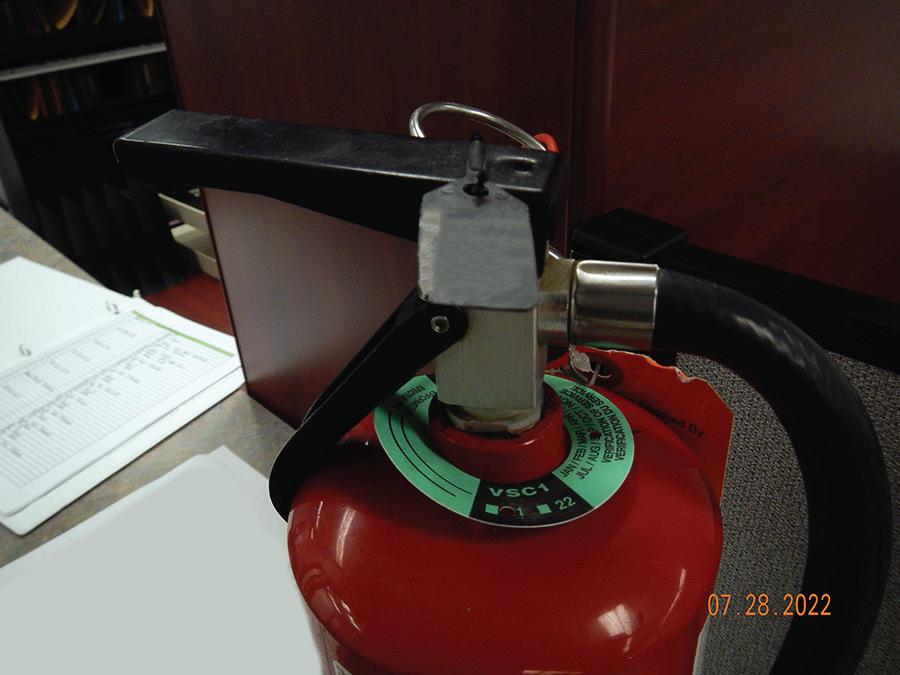
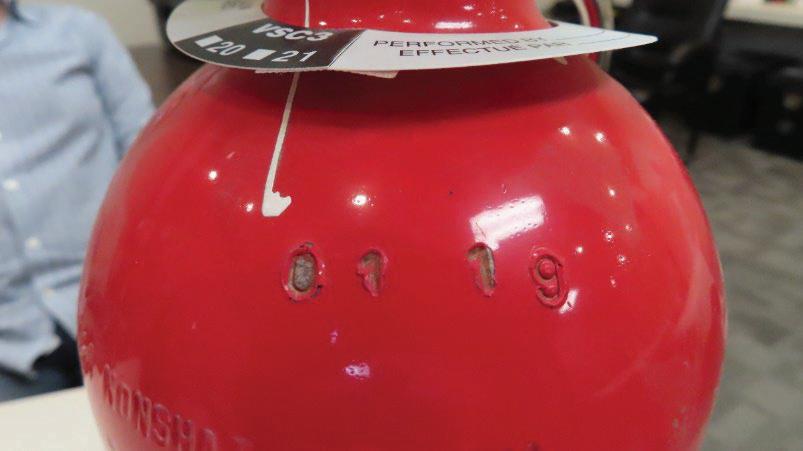

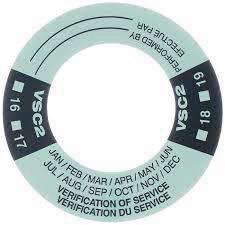



(October 25, 2022 Province of Manitoba News Release) The Manitoba government has introduced legislation that would create a new offence under the Highway Traffic Act to prohibit driving on closed roads, Manitoba Transportation and Infrastructure Minister Doyle Piwniuk announced today.
“Our government heard from RCMP leadership and their support for measures that promote road safety and stronger laws to help discourage motorists from the dangerous practice of accessing and driving on closed roads,” said Piwniuk. “Once enacted, Bill 46 will make this treacherous activity illegal, with offenders facing substantial fines, and making roads safer for everyone.”
Last winter’s severe weather, followed by spring flooding events, resulted in an unprecedented number of road closures across Manitoba.
Individuals intentionally making decisions to drive on roads closed due to severe weather conditions, flooding, construction or other safety-related reasons put themselves and others at risk, including emergency responders, operators of snow-clearing equipment and roadway maintenance staff, the minister noted.
The new offence would allow law enforcement officers to issue traffic tickets and in the most serious incidents, the bill would allow for maximum fines of up to $5,000 for drivers of heavy vehicles and up to $2,000 for drivers of light vehicles such as cars, light trucks and SUVs.
The proposed amendments would bring Manitoba in line with other provinces including British Columbia, Ontario and Saskatchewan, which have already made it an offence to drive on closed roads
(October 24, 2022 News Release) Public Services and Procurement Canada (PSPC) wishes to advise users that the bridge at the St. Andrews Lock and Dam will be closed to vehicular traffic for deck replacement work during the following period:
• Thursday, November 3, at 7 pm, to Friday, November 4, at 6 am
During this period, all lanes will be closed to vehicular traffic in both directions. Motorists are encouraged to consult local electronic signs for the most up-to-date information.
Travellers are reminded that the bridge will remain open to pedestrians and cyclists. As of October 18, pedestrians and cyclists are able to use the newly constructed walkway on the north side of the bridge. Cyclists are asked to yield to pedestrians when using the walkway.
PSPC encourages users to exercise caution when travelling on the bridge and thanks them for their patience.
(Information From Agriculture and Agri-Food Canada) The Agroclimate Impact Reporter (AIR) is a tool to help connect Agriculture and AgriFood Canada (AAFC) with people in Canada's agricultural community. AAFC relies on its network of AIR volunteers to provide information regarding agroclimate impacts on farm operations across the country.
The AIR network provides valuable and reliable data that are mapped and used in the assessment and development of policies and programs including AgriRecovery and the Livestock Tax Deferral Provision, which can provide assistance to the industry during extreme weather and climate conditions and events.
The AIR network is an ever-growing database of agroclimate impacts, which enables better data analysis to help identify trends and anomalies.
AAFC currently in its October reporting session for the 2022 agricultural season. If you are able to find five to ten minutes to respond to the brief survey about agricultural conditions, it would be greatly appreciated. AAFC thanks all those who contributed to the September 2022 AIR survey!
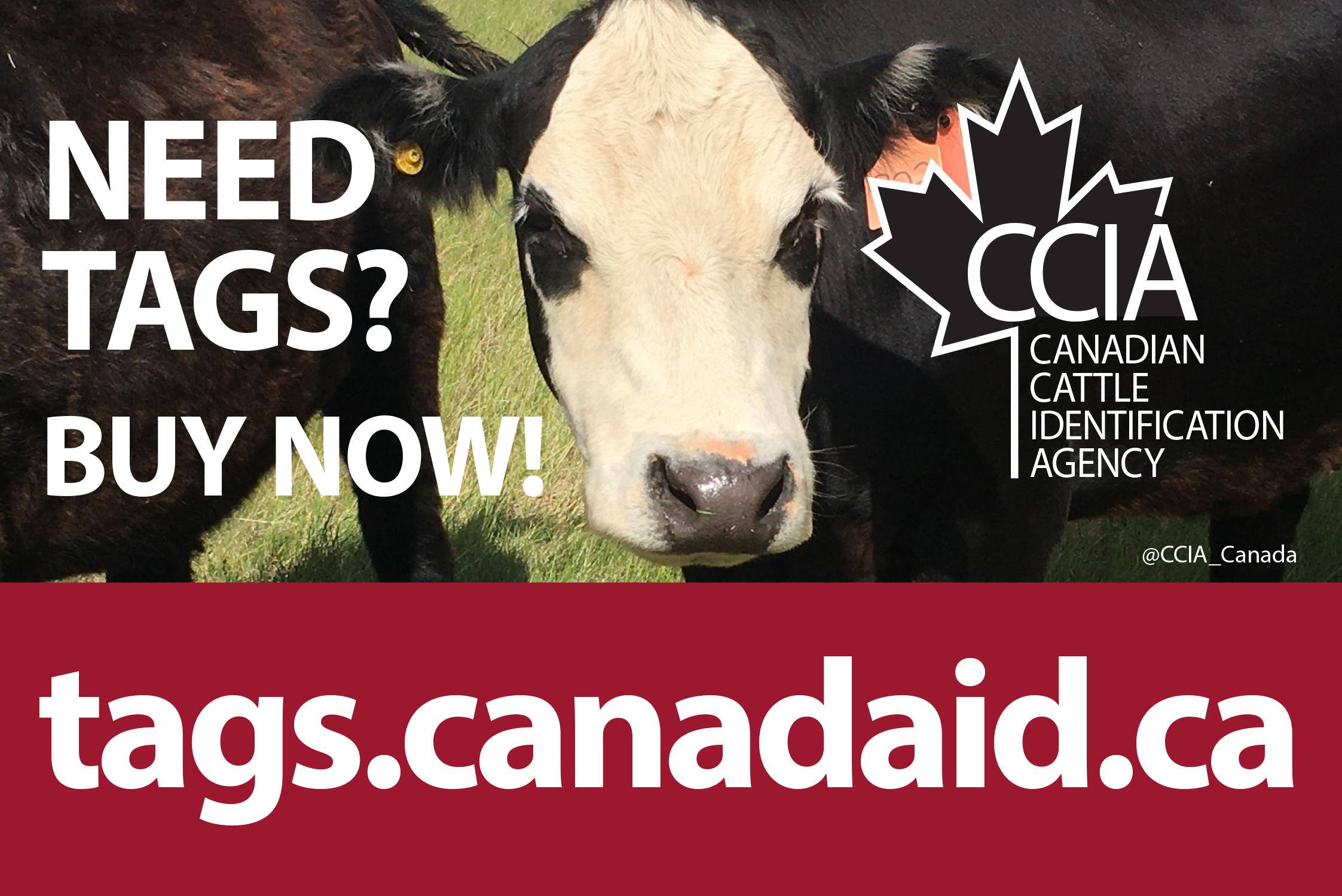
The surveys are linked below; please considering sharing the links with your colleagues and networks.
English French
Click here for previous Agroclimate Impact maps from September or past years. Other resources that we produce on the Drought Watch home page.
- Tell us where in Canada your farm is located.
- Tell us your sustainability story by answering some or all of these questions:
(October 27, 2022 Canadian Cattle Association) We know that Canadian Cattle farmers and ranchers like you have a long-standing tradition of doing the right thing for your land and animals. Through hard work, you have demonstrated a growing commitment to sustainability.

With new and innovative environmental and conservation practices being implemented at cattle farms across Canada, it's hard to keep up!
That's why we want to hear your story. We invite you to share your unique sustainability story with us by recording and submitting a 1–5-minute video.
Using your smartphone camera, follow three easy steps and tell us your sustainability story.
[Record My Video]https://sustainablecattle.capsule.video/
Here are a few tips to enhance your story: - Show us your farm! Weather permitting, film the video outside.
o Why is producing sustainable cattle important to you?
o What makes your farm special or unique?
o What are some practices or innovations you use to help protect your land?
o How do you care for the ecosystems on your farm?
o Are there any wildlife species that call your farm home? How do you preserve their habitats?
Thank you for taking the time to share your story with us about how you take action to care for your land, animals and environment.
Please do not hesitate to reach out if you have any questions.
We look forward to hearing from you!
You're invited to take part in the review of the Agricultural Crown Lands Program and help guide future policy improvements. Fill out the survey today and provide your input at https://bit.ly/3fxdjIR. The deadline to reply has been extended to October 30th.

Head Office
#180, 6815 – 8th Street NE Calgary, Alberta T2E 7H7
Phone: (403) 275-8558 Email: contact@cattle.ca
Ottawa Office
#1101, 350 Sparks St. Ottawa, Ontario K1R 7S8
Phone: (613) 233-9375
Location: Ottawa / Hybrid
Overview:
The Canadian Cattle Association (CCA) represents Canada’s 60,000 beef producers and works to address issues that concern beef producers. With CCA headquarters in Calgary, CCA also has an Ottawa office that focuses on domestic and international advocacy regarding climate change, trade, economic resiliency, innovation and research.
The Government Relations Coordinator is a key position within the CCA Ottawa team. They are responsible for monitoring Parliamentary activities and federal departments, keeping a keen eye on areas of focus of CCA. They will create briefing notes to support CCA’s policy team and look for opportunities for CCA leadership and staff to further our advocacy objectives.
The coordinator is responsible to coordinate CCA’s “fly-ins”, set up meetings with Parliamentarians, and develop both internal and external briefing packages.
CCA hosts various Parliamentary receptions and other events throughout the year; the coordinator will have a central role in the event management, both in preparation and during the event.
Reports to: Senior Director, Government and Public Affairs
• Monitor Parliament including but not limited to: committees and Question Period and provide briefings on relevant files.
• Monitor relevant government departments for consultations, policy initiatives, etc. that is relevant to CCA’s objectives.
• Develop and maintain mailing and contact lists for federal elected and senior bureaucratic officials.
• Research, coordinate and write products to support parliamentary activities and policy positions (e.g., briefing notes, backgrounders, taking notes in meetings).
• Attain and maintain a knowledge base of policy and legislative priorities; supporting CCA’s analysis and participation on policy files/projects.
• Organize “Fly Ins” for CCA Provincial Members.
• Assist in Event Management for Key Ottawa events, including our VIP Annual Reception, Fall BBQ and other events on an ongoing basis
• Other
o Maintain the lobby registry for Directors and staff as approved by the CEO.
o Support Ottawa team on miscellaneous projects in both a policy and administrative capacity.
The Canadian Cattle Association is the national voice for Canada’s beef cattle industry representing 60,000 beef farms and feedlots www.cattle.ca

Head Office
#180, 6815 – 8th Street NE Calgary, Alberta T2E 7H7
Phone: (403) 275-8558 Email: contact@cattle.ca
Ottawa Office
#1101, 350 Sparks St. Ottawa, Ontario K1R 7S8
Phone: (613) 233-9375
• Fluency in English with strong written and oral communication skills; Proficiency in French is an asset.
• Excellent research, analytical and problem-solving skills; attention to detail and sound judgement.
• High degree of proficiency in working in a fast-paced, collaborative team environment
• Requires experience scheduling meetings with elected and unelected officials.
• Proficiency in Microsoft Office and other computer programs is essential.
• Requires a high degree of resourcefulness, detail-oriented skills, self-motivation and self-direction as well as the judgement necessary to understand when to seek direction and the ability to both multi-task and prioritize.
• Ability to register as a federal lobbyist with the Commissioner of Lobbying for Canada this role is based in the Ottawa office, ability for hybrid work is available
Education: University degree or college diploma paired with relevant experience.
Please send cover letters and resumes to babcockj@cattle.ca with the subject line: Government Relations Coordinator.
We thank all candidates for their interest; however, only those selected for an interview will be contacted.
The Canadian Cattle Association is the national voice for Canada’s beef cattle industry representing 60,000 beef farms and feedlots www.cattle.ca


A division of Canadian Cattle Association #180, 6815 - 8th St NE Calgary, AB T2E 7H7 Em: crs@canfax.ca Tel: (403) 275-5110 Fax: (403) 275-6943
October 2022
Canfax Research Services (CRS) provides the Canadian beef industry with statistical and market information on the domestic and global beef trends. Economic analysis is utilized for marketing, research, policy and investment decisions supporting strategy and business plan development as well as performance measurement. CRS monitors data sources from national statistics and develops new economic models to and evaluate the impact of management decisions on cost of production. CRS maintains its independence as a third-party source of unbiased market information, maintaining operations through regular publications, long-term contracts and projects. CRS is responsible for database maintenance, background research, statistical and market analysis for regular publications and specialized research projects – including the Canadian Cow-Calf Cost of Production Network.
We are looking for a talented, self-motivated individual to participate in our Summer Intern Program.
The Summer Intern Program is a unique opportunity for students interested in the Canadian beef industry across a broad range of topics. The successful candidate will be involved in collaborating on research projects in the areas of productivity, sustainability, policy, and global markets as they relate to the Canadian beef industry.
• Database management, statistical analysis, and model development in Excel
• Conduct literature reviews on a wide variety of topics
• Write fact sheets and blog articles
• Perform other duties as assigned
• Applicants must be enrolled in undergraduate, graduate, or post-graduate studies
• Applicants should be enrolled in an agriculture or associated program, have beef production experience, and/or an expressed interest in pursuing a career in the Canadian beef industry
• Must have a minimum GPA of 3.0 and be available for the duration of the internship
• Must have excellent research, writing and communication skills
• Must be able to work in CCA’s Calgary office (COVID measures in place)
• Data summary, analysis and report development including organizing and preparing databases for future data-mining activities
• Working with staff to produce fact sheets and other content for the CDN COP Network, including international comparisons and case studies
Please send your resume and cover letter, by Friday November 25th to:
Brenna Grant, M.Sc. P.Ag.
Executive Director, Canfax Research Services
180, 6815 - 8th Street NE Calgary, AB T2E 7H7 Ph: (403) 275-5110 or Em: grantb@canfax.ca
The Canadian Cattle Association is an Equal Opportunity Employer and Prohibits Discrimination and Harassment of Any Kind: CCA is committed to the principle of equal employment opportunity for all employees and to providing employees with a work environment free of discrimination and harassment. All employment decisions at CCA are based on business needs, job requirements and individual qualifications, without regard to race, colour, religion or belief, national, social or ethnic origin, sex (including pregnancy), age, physical, mental or sensory disability, sexual orientation, gender identity and/or expression, marital, civil union or domestic partnership status, past or present military service, family medical history or genetic information, family or parental status, or any other status protected by the laws or regulations in Canada.
Head Office
#180, 6815 – 8th Street NE Calgary, Alberta T2E 7H7
Phone: (403) 275-8558 Email: contact@cattle.ca
Ottawa Office
#1101, 350 Sparks St. Ottawa, Ontario K1R 7S8
Phone: (613) 233-9375
Location: Ottawa / Hybrid
Overview:
The Canadian Cattle Association (CCA) represents Canada’s 60,000 beef producers and works to address issues that concern beef producers. With CCA headquarters in Calgary, CCA also has an Ottawa office that focuses on domestic and international advocacy regarding climate change, trade, economic resiliency, innovation and research.
The Regulatory Affairs Manager is a key role within the CCA Policy team The Manager will support policy creation and dissemination across a breadth of files at CCA. Based in the CCA Ottawa office the individual will create and maintain strategic relationships and communication channels with key government officials as well as elected officials and staff. The Manager will monitor regulatory consultations being developed by the Federal Government and lead CCA’s regulatory files.
This role will also lead CCA’s policy development and engagement on food policy including but not limited to topics such as: labelling, grading, food waste, food guides and meat inspection.
The Manager will be a key part of CCA’s climate change work, focusing on the policy and regulatory components domestically. As part of the climate change file, there will be the opportunity to engage internationally as well through our global partnerships.
Reports to: Senior Director, Government and Public Affairs
CCA Policy and Regulatory Affairs
o Significantly contribute to the strategy, development and implementation of CCA’s Government Relations outreach from a regulatory lens.
o Maintain inventory and understanding of CCA’s policy and regulatory positions and priorities across all files.
o Monitor federal consultation opportunities and draft submissions with policy team support.
o Lead staff for research, analysis and policy recommendations regarding food policy in Canada and internationally.
o Lead Food Policy work from a staff level, working closely with Food Policy Committee Chairs and Members, both at AGM, Semi-Annual meetings and other meetings as required.
o Participate in policy and regulatory consultations
The Canadian Cattle Association is the national voice for Canada’s beef cattle industry representing 60,000 beef farms and feedlots www.cattle.ca

Head Office
#180, 6815 – 8th Street NE Calgary, Alberta T2E 7H7
Phone: (403) 275-8558 Email: contact@cattle.ca
o Engage in consumer, industry, and government dialogue.
Ottawa Office #1101, 350 Sparks St. Ottawa, Ontario K1R 7S8
Phone: (613) 233-9375
o Work closely with industry including Public and Stakeholder Engagement, Canada Beef and Canadian Roundtable for Sustainable Beef.
o Build and maintain key relationships in the food policy community
o Build and maintain key relationships with government officials on food policy
o Lead staff for research, analysis and policy recommendations regarding climate change policies and regulations domestically.
o Work closely with policy team, specifically with Environment Manager on climate change files.
o Report to Environment Committee on Climate change work.
o Participate in policy and regulatory consultations.
o Engage in consumer, industry, and government dialogue.
o Build and maintain key relationships in the environment NGO community.
o Build and maintain key relationships with government officials on climate change.
o Regular contribution to CCA Action News
o Draft and lead consultation submissions and other documents expressing policy recommendations and request
o Website content review relevant to files
o Liaison with agriculture commodity representatives in Ottawa
• Fluency in English with strong written and oral communication skills; Proficiency in French is an asset.
• Excellent research, analytical and problem-solving skills; attention to detail and sound judgement.
• High degree of proficiency in working in a fast-paced, collaborative team environment
• Proficiency in Microsoft Office and other computer programs is essential.
• Requires a high degree of resourcefulness, detail-oriented skills, self-motivation and self-direction as well as the judgement necessary to understand when to seek direction and the ability to both multi-task and prioritize.
• Ability to register as a federal lobbyist with the Commissioner of Lobbying for Canada this role is based in the Ottawa office, ability for hybrid work is available.
• Ability to travel domestically and internationally.
Education: University degree paired with relevant experience.
Please send cover letters and resumes to babcockj@cattle.ca by Monday, November 14, 2022, with the subject line: Regulatory Affairs Manager.
We thank all candidates for their interest; however, only those selected for an interview will be contacted.
The Canadian Cattle Association is the national voice for Canada’s beef cattle industry representing 60,000 beef farms and feedlots www.cattle.ca


Name(s): Farm Name: Address:
Phone: Email: PLEASE ATTACH A WORD DOCUMENT WITH THE FOLLOWING INFORMATION:
1. Provide a description of your farm including the environment it operates in.
2. What have you done/what are you doing to improve environmental management on your farm?
3. What are your challenges and successes? Please include high-resolution images and data which help show measurable results.
4. What factors have enabled you to make management changes? (e.g. Working with conservation organizations, programs such as the Environmental Farm Plan, funding support, education, etc.)
5. What are your environmental goals for the future and how do you plan to carry them out?
6. Include two letters of reference that speak to your leadership in conservation.
Please limit your application to 10 pages (not including letters of reference and photos). Electronic applications are preferred and a single, complete PDF document is requested. A sample application from previous years can be found online at https://www.cattle.ca/sustainability/theenvironmental-stewardship-award/how-to-nominate/

Contact your provincial organization listed on the previous page to determine when your association requires you to submit your application for the provincial award.
A selection of no less than ten high-resolution images suitable for reproduction on social media, print etc.
Video presentation link if available, media stories/ broadcasts showcasing your stewardship efforts.
TESA sponsorship program is available to appropriate organizations that wish to affiliate themselves with the CCA’s TESA program. In addition to showing support for environmental stewardship and Canada’s beef cattle producers, the program also provides the opportunity to join industry leaders, government representatives and nearly 60,000 Canadian beef farms in the national discussion on environmental issues affecting the industry. For more information, visit www.cattle.ca/what-is-tesa

For more than 65 years, MNP has been helping beef producers get the most from their operations. Whether you are looking to pass the farm on to the next generation, improve your profitability, be more competitive or expand MNP’s beef industry specialists will help you get the results you’re looking for. To find out what MNP can do for you, contact Marvin Slingerland, Partner, MNP Lethbridge, at Director of Livestock Services at 1.800.661.8097 or Marvin.Slingerland@mnp.ca



Safely dispose of unwanted or obsolete agricultural pesticides and livestock/equine medications –no charge! Take them to the following locations on the dates noted between 9 a.m. and 4 p.m.
ARNAUD
Thursday, Oct. 27 G J Chemical Co. Ltd. 96 Smith Ave West 204-427-2337
BALDUR Friday, Oct. 28 Baldur Agro 121 2nd St 204-535-2598
BEAUSEJOUR
Wednesday, Oct. 26
Nutrien Ag Solutions 73010 Road 40 off Hwy 44 SE 10-13-7E 204-268-3497

BRANDON Thursday, Oct. 27 Richardson Pioneer 14 km west on Hwy 1, then 1/4 mile south on Pioneer Rd. 204-727-5353
BRUNKILD
Monday, Oct. 24 MK Agro 3062 Road 39 NW 204-736-4769
DAUPHIN Monday, Oct. 24 Dauphin Co-op AGRO 601 Whitmore Ave E 204-622-6080
DELORAINE Monday, Oct. 24
Nutrien Ag Solutions Hwy 3 & Broadway St. S 204-747-2877
GLADSTONE Monday, Oct. 24 Neepawa-Gladstone Coop Road 69, Hwy 16 (4 miles W of Gladstone) 204-385-2906
INGLIS
Wednesday, Oct. 26 Prairie Giants Crop Supply 2 km East of Hwy 83 on PR 366 204-564-2293
MEADOWS
Thursday, Oct. 27 Ag Advantage Ltd 68156 Road 6 W 204-322-5351
MELITA
Tuesday, Oct. 25 Cargill 7 km SW of Melita on Hwy 83 204-522-3221
PORTAGE LA PRAIRIE Friday, Oct. 28 Portage Agri-Sales 11 Can-Oat Dr 204-857-7838
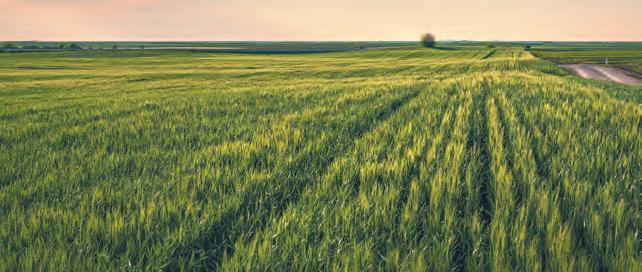
RIVERS
Friday, Oct. 28 Redfern Farm Services 102 2nd Ave 204-328-5325
SHOAL LAKE Thursday, Oct. 27 Shur-Gro Farm Services Ltd. 236 Industrial Park Rd. 204-759-4240
ST. LEON Tuesday, Oct. 25 Pembina Coop 49079 Road 25N 204-744-2850
STANLEY Wednesday, Oct. 26 Cargill 12137 Road 25W 204-325-9551
STEINBACH
Friday, Oct. 28 Clearview Coop 33124 Road 39 N (at Hwy 12N, between Steinbach and Blumenort) 204-326-9921
SWAN RIVER Tuesday, Oct. 25 Cargill 2 miles south on Hwy 83 204-734-5747
TEULON
Tuesday, Oct. 25 Willis Agro 11034E Road 95N 204-461-0386
VIRDEN Wednesday, Oct. 26 Core Ag Inputs 320 Chester St. E 431-763-3536
The proper nutrition of beef cattle is a key component of a successful production system. Feed usually accounts for the single largest input cost associated with beef cattle. Find out more about how to feed your animals successfully and at a low cost.
Date: Wednesday, November 2, 2022
Time: 10 a.m. to 3 p.m.
Place: Manitoba Beef and Forage Initiatives Farm

Corner of highway 353 and #10 north of Brandon
Cost is $20 per person. Call Manitoba Agriculture at 204-648-3965 to pre-register
Agenda
10 a.m. The Silage How-to Guide for Livestock Producers

Dr. John McKinnon, JJM Nutrition, Saskatoon, SK
11 a.m. Getting a Handle on Feed Costs
Ben Hamm – Farm Business Management Specialist, Manitoba Agriculture, Steinbach
LUNCH
1 p.m. Beef Cattle Nutrition - Cow and backgrounder rations
Dr. John McKinnon, JJM Nutrition, Saskatoon, SK
2 p.m. Alternative Feeds for Feeding the Cow Herd
Shawn Cabak – Livestock and Forage Extension Specialist –
Manitoba Agriculture, Portage
2:30 p.m. Cowbytes Nutritional Program for Beef Cattle
Elizabeth Nernberg - Livestock and Forage Extension Specialist –Manitoba Agriculture, Roblin

Producers are reminded that the Manitoba government has announced a consultation related to the Agricultural Crown Lands (ACL) Program and forage leases as part of is continuing review of the program.

As per the province’s September 28 news release, “Manitoba Agriculture is exploring other policy, program, regulation and service improvements to enhance the productivity and sustainability of agricultural Crown forage lands including mechanisms for leaseholders to invest in productivity and adjustments to the terms and conditions of leases.
To participate in the online version of the survey visit http://engagemb.ca/agcl-forageleases
If you prefer, a hard copy of the survey is also found in this edition of the MBP e-newsletter, along with a backgrounder on the program and changes made to it in recent years. MBP encourages producers to complete the survey online if at all possible so that the information is
available to the provincial government as soon as possible.
Please mail hard copies of the completed survey to:
Manitoba Agriculture
ATTN: Marnie Carey 816-401 York Ave Winnipeg, MB R3C 0P8
As noted, the online survey closes on October 30, 2022, and have your hard copies of it postmarked by October 30 as well.
To read the news release where this consultation was announced (and which also refers to the provincial government implementing a temporary three-year rent reduction for forage leases on agricultural Crown lands commencing in 2023) go to: https://news.gov.mb.ca/news/index.html?item =56479&posted=2022-09-28

Manitoba Agriculture has heard from forage lease holders through their letters and through various meetings. Several concerns were raised about rents, lease terms and conditions, land productivity, and programs/services. The following discusses current policies on ACL.
Forage rents are calculated using a market based formula in regulation: 3.5% of the market price of beef x the number of cows that the land can sustain (i.e. “animal unit months”, or AUMs, which is a measure of the productivity of the land). Forage lease rent is A x B x 3.5% (where A = AUM, B = price of cattle).
Previously, rents were frozen at artificially low rates since 2014, at about $2/AUM, and were based on a triennial survey. Lessees are currently paying $7.19/AUM, or about $48 for 5 months of feed per cow-calf pair (for reference Saskatchewan 2022 grazing rates are $8.18 per AUM).
Rental rate transition: In 2019, the rental rate remained at $2.13 per AUM. In 2020, the rental rate was the average of the 2019 rate and the amount described in the formula. In 2021 and thereafter, the rent is determined using the formula. In addition, rent is now payable by December 31, rather than at the end of the production year as had been the practice in the past.
Forage lease terms are 15 years. Those who had forage leases prior to 2019 (i.e. “legacy leaseholders”) can transfer their lease to immediate family members only in perpetuity. For partnerships and corporations, leases obtained prior to 2019 can be transferred to an existing ownership interest in the partnership or corporation in perpetuity.
Leaseholders may surrender their lease at any time without penalty. Surrendering only a portion of a lease can be considered on a case by case basis, depending on the land use impacts and other considerations.

Lifetime leases can no longer be transferred to a third party. This is called a unit transfer. Typically, this involves the transfer of a lifetime ACL lease along with the sale of a farmer’s private property to a non family member. However, those with forage leases prior to 2019 may transfer their leases to immediate family members in perpetuity.
AUM ratings are long term production averages. AUMs are not adjusted annually and are generally conservative. Lands are assessed for AUM using scientific methods based on region, soil type, type of vegetation and other conditions. AUM assessments are always conducted prior to Crown land auctions. Forage lessees are expected to manage the land to maintain or increase long term productivity. AUMs are not adjusted downward if leaseholders are not actively maintaining the land, including controlling encroachment. AUMs are a key part of rent calculations: rent is calculated as 3.5% of the market price of cattle per AUM.
When leaseholders make investments to improve ACL productivity, by policy, Manitoba will not increase AUM assessments on those lands for 10 years.
The 2021 ACL Forage Productivity Pilot Program (ACLFPPP) (75% government funded and 25% applicant funded) funded projects related to forage management techniques to improve productivity and sustainability on Crown land. ACL productivity improvements resulting from the ACLFPPP may not be reflected in AUM assessments for 5-10 years, meaning rents would not be increased due to the improvements. In the pilot, any improvements are owned by lessees. Many years ago, Manitoba offered a Crown Land Improvement Program (CLIP) for leaseholders to develop Crown lands for the purposes of cattle production. CLIP acres are a large part of existing ACLP lands. AUMs on CLIP acres are assessed based on their productivity potential; the onus is on the leaseholder to maintain productivity, for example by limiting encroachment. In cases where the land has not been adequately maintained over the years, resulting in the need for significant redevelopment, there can be delays for the permissions required from the Department to complete this type of work, due to the need for consultations and permits.
The value of improvements on forage leases is settled privately between outgoing and incoming leaseholders within 30 days of the auction. If agreement cannot be reached, the matter is referred to formal arbitration under The Arbitration Act. This is a new system that is relatively untested.
In situations where a leaseholder walks away from a lease and improvements, and they revert to the Crown, the value is known prior to the allocation process, and the value is paid to the Crown at the time of allocation.
Auctions are held in November, in the year prior to use, for various locations throughout the province, with advertisements placed in local newspapers and online, at least 30 days prior to the auction date. Payments must be made in full at the auction, including all of the first year’s rent and local taxes, and any other fees that may be known for the parcel of land.
The Department moved to online auctions during the pandemic. Sometimes, releasing the list of land to be auctioned is delayed due to the department’s generous cancellation policy for non payment. Cancelled and surrendered leases are put on the notification list to First Nations for Treaty Land Entitlement selection prior to auction.
Are you an active AGL forage lease holder? (Choose anyone option)
Did you obtain your forage lease prior to 2019? (Choose anyone option)
Have you ever held an AGL lease? (Choose anyone option)
Do you intend to hold an AGL lease at some point in the future? (Choose anyone option) D Yes



Rent: Forage lease rents are based on a formula that includes the productivity of the land (i.e AUM) and the 3 year average price of beef Specifically , rent is calculated as 3 5% of the 3 year average price of cattle for each cow/calf pair
Lease : Subletting a forage lease (or transferring a lease to someone else) is currently allowed under special circumstances
Which of the following options would you prefer to determine forage lease rents :
(Choose any one option)
D The current formula - based on productivity of the land and the 3 year average price of beef. D Rent set by bid at auction (no formula) with an annual inflationary adjustment. D Don'tknow D Other
Answer this question only if you have chosen Other for Which of the following options would you prefer to determine forage lease rents :
Please specify :
Do you support allowing lease holders to sublet (or transfer) a lease to someone else? (Choose any one option) D Yes 0 No Answer this question only if you have chosen Yes for Do you support allowing lease holders to sublet (or transfer) a lease to someone else?
Should leaseholders be allowed to sublet (or transfer) a lease under any circumstance, or only special circumstances?
(Choose any one option) D Lease holders should be able to sublet (or transfer) a lease at any time for any reason D Lease holders should only be able to sublet (or transfer) a lease under special circumstances D Don 'tknow
Answer this question only if you have chosen Lease holders should only be able to sublet (or transfer) a lease under special circumstances. for Should leaseholders be allowed to sublet (or transfer) a lease under any circumstance, or only special circumstances?
Please specify :
Agricultural Crown lands under a forage lease must be actively managed to maintain productivity (i.e AUM ratings must remain consistent over time), which is a requirement of the lease agreement.
To what degree do you understand how the department determines productivity (or AUM ratings) of the land? Check one : (Choose any one option) D Completely understand how MB AGR determines productivity (or AUM ratings) D Somewhat understand how MB AGR determines productivity (or AUM ratings) D Do not understand how MB AGR determines productivity (or AUM ratings)
Answer this question only if you have not chosen Completely understand how MB AGR determines productivity (or AUM ratings) for To what degree do you understand how the department determines productivity (or AUM ratings) of the land? Check one : What could we do to help you understand the process better? Please check all that apply (Choose all that apply) D Training courses or webinars D Printed materials, like a guide book

Through your commodity association
In person through our AGR representative
How likely would you be to invest in productivity improvements (for example , cross fencing, watering systems, rejuvenating forage stands , managing bush encroachment) if :
Very Somewhat Neitherlikely or Not very Not at all Questions likely likely unlikely likely likely
If your leaseterm could be extended to 20 years (from the current 15 years)
If the province shared in the cost of the improvements
If the province owned the improvements afterward
If there was predictability on the market value at the end of the leaseterm
If the province provided extension servicesto help develop long term management plans
If subletting (ortransferring alease) were madeavailable/easier
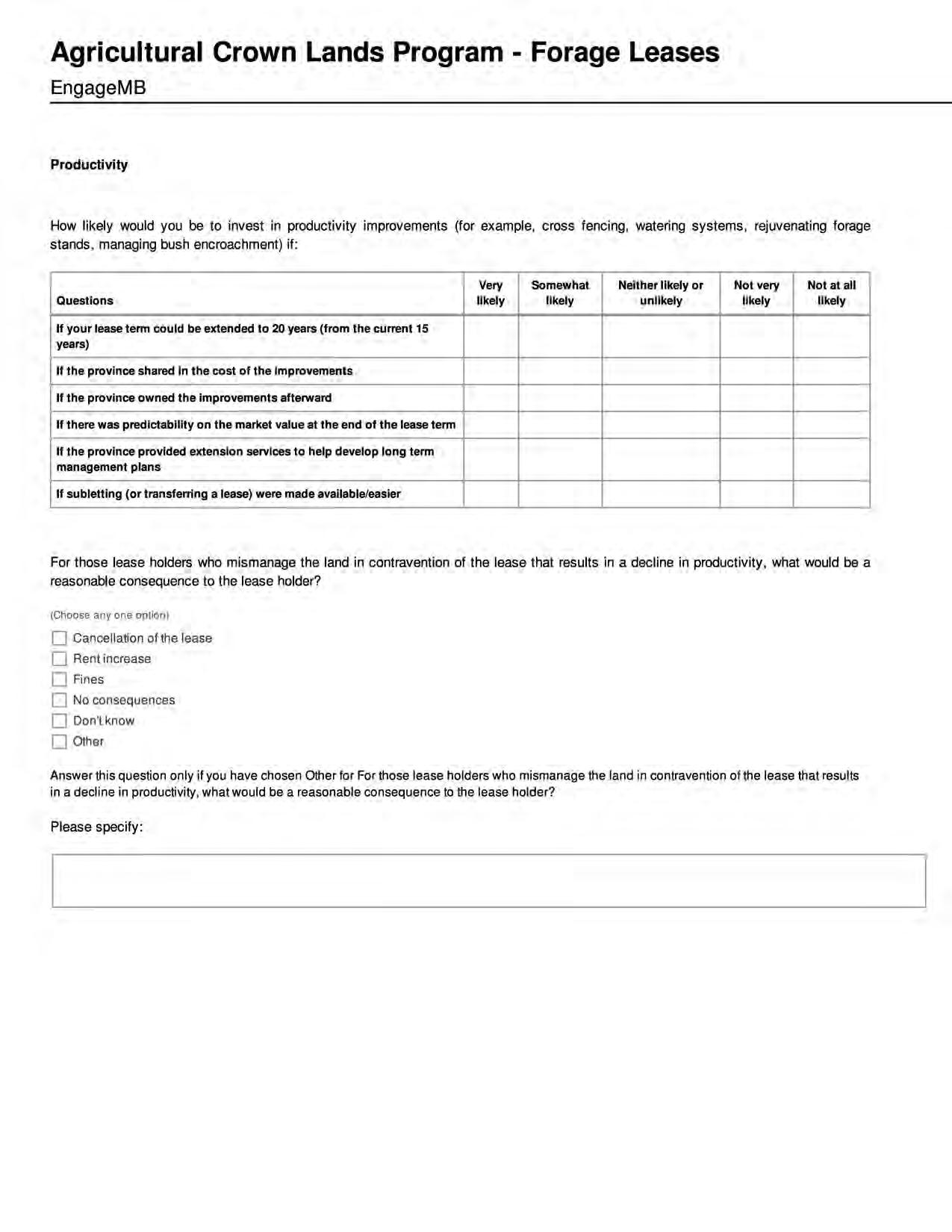
For those lease holders who mismanage the land in contravention of the lease that results in a decline in productivity , what would be a reasonable consequence to the lease holder? (Choose any one option)
Cancellation of the lease
Other Answer this question only if you have chosen Other for For those lease holders who mismanage the land in contravention of the lease that results i n a decline in productivity, what would be a reasonable consequence to the lease holder? Please specify :
After an auction, the current process of transferring the crown land improvements from the outgoing lease holder to the incoming lease holder is a negotiation between the parties If a reasonable price cannot be agreed to by negotiation, the parties may go to formal arbitration via The Arbitration Act.
Have you ever participated in this process of negotiating a price to transfer the improvements?
(Choose any one option) D Yes 0 No
Answer this question only if you have chosen Yes for Have you ever partic ipated in this process of negotiating a price to transfer the improvements?
Were you the incoming or outgoing leaseholder?

(Choose any one option) D Incoming D Outgoing
Answer this question only if you have chosen Yes for Have you ever partic ipated in this process of negotiating a price to transfer the improvements?
How satisfactory was the outcome?
(Choose any one option) D Very satisfactory D Somewhat satisfactory D Somewhat unsatisfactory D Not at all satisfactory D Don'tknow
Answer this question only if you have not chosen Very satisfactory for How satisfactory was the outcome? Why was the outcome not satisfactory?
There are several ways that improvements to crown land could be valued to determine a price between outgoing and incoming lease holders Of the below options, please rank your preference :
{Rank each option)
__ Third party appraisal of the market value before auction
__ Third party appraisal of the market value after auction
__ Standard listing of values which would determine in advance the price to be paid for the improvements.
__ The current process of negotiation
__ The value of the listed improvements should be determined by bid at the auction
Are there additional options that should be considered that are not specified in the question above?

Customer Service
A list of land that will be available for auction are typically released in October. Auctions for AGL are typically held in November. Forage lease rent invoices are sent to lease holders in November with rent due in December. Some farmers have said they would like to see a land listing for auctions sooner to allow time to inspect the land for which they may choose to place a bid. In some cases, land listings are delayed due to the department's generous non-payment policy. In the case of non payment of rent, how much time should lapse before a forage lease is cancelled? (Choose any one option)
1 month
2 months
3 months
4 months
5 months
6 months
More then 6 months How well do you understand your annual rent invoice? (Choose any one option)
Fully understand the invoice
Somewhat understand the invoice.
Don 't understand the invoice Answer this question only if you have chosen Don't understand the invoice . for How well do you understand your annual rent invoice? Why do you not fully understand the invoice Please check all that apply (Choose all that apply)
Terminology is complex
Too much information
Not enough information
You don 't read the invoice
Other Answer this question only if you have chosen Other for Why do you not fully understand the invoice Please check all that apply Please specify How do you want to receive information on programs and services related to the AGL? Please check all that apply (Choose all that apply)
Through your commodity and/or farm association
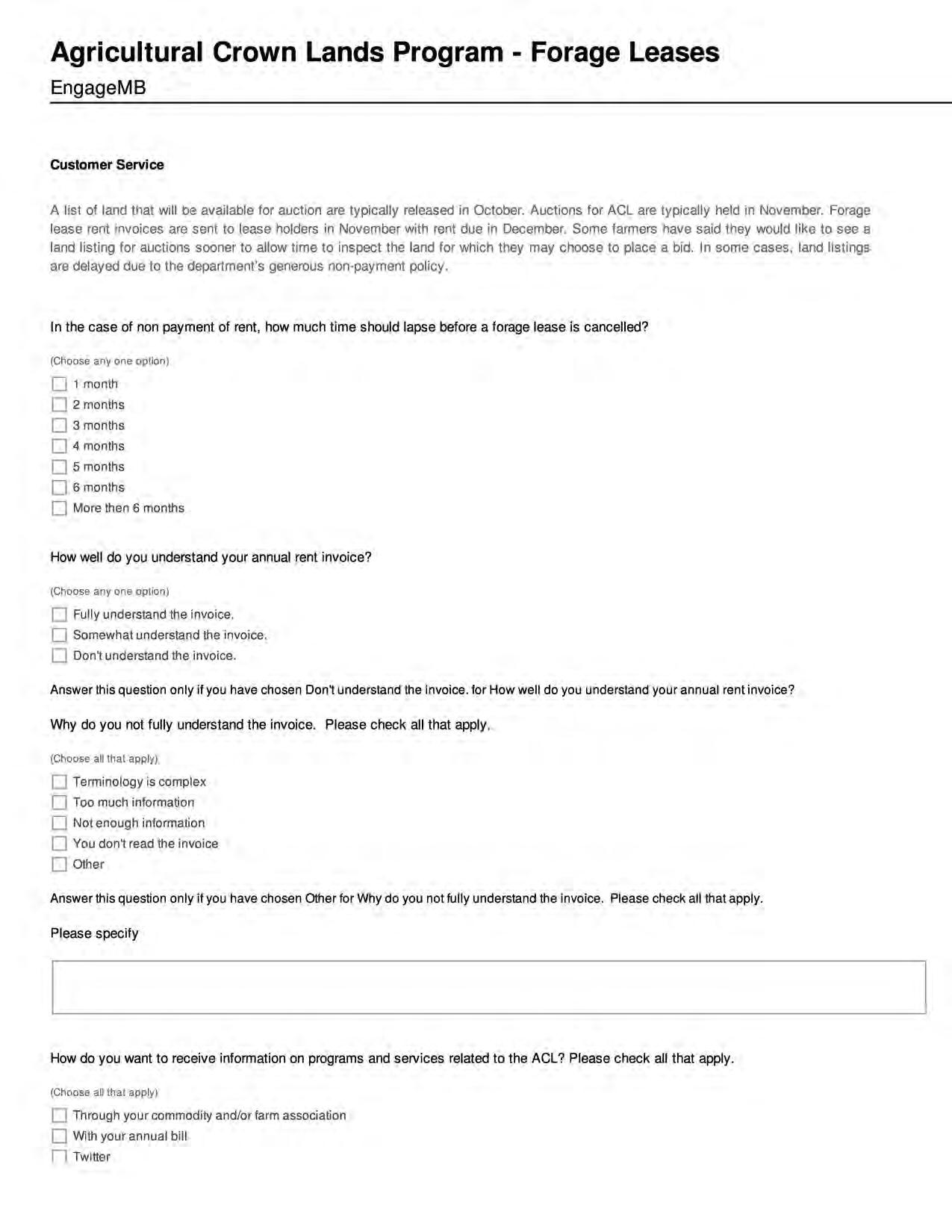


How often do you communicate with your Department of Agriculture representative?
(Choose any one option) 0 Weekly 0 Monthly D 2-3 times per year
Once per year
Less then once per year
How interested would you be in working with a Department of Agriculture representative to develop long-term management plans for your ACL?
(Choose any one option) D Very interested
Somewhat interested
Neutral/don't know
Not very interested D Not at all interested
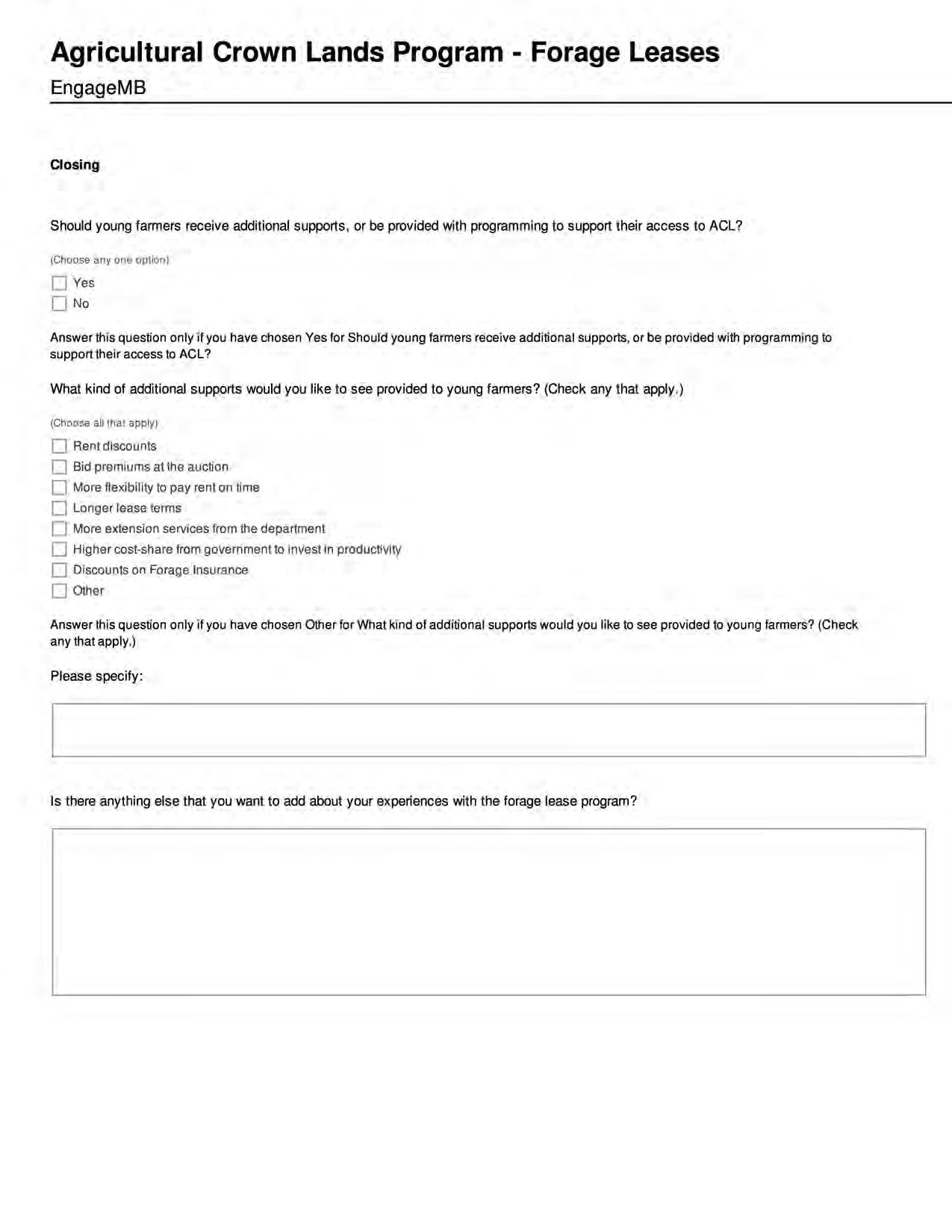

Manitoba Agriculture staff will lead free workshops on how to search and find the information you need on the Manitoba Agriculture website. Learn how to:
• find financial assistance information
• fill out online applications
• save, attach and email online applications
• navigate through the site in general
Evening workshops run from: 5 p.m. to 6:30 p.m. or 7 p.m. to 8:30 p.m.
Tue, Nov 8, 2022 - Gimli, MB
East Interlake Watershed District Office, 74 First Ave
Thur, Nov 10, 2022 - Ashern, MB
Fieldstone Ventures Education, 61 Main Street.
Tue, Nov 15, 2022 - Swan River, MB
Swan Lake Watershed District Office, 559-4th Ave N.
Thur, Nov 17, 2022 - Inglis, MB
Assiniboine West Watershed Office, Building 211, P.R.# 366.
Mon, Nov 21, 2022 - Virden, MB
Virden Provincial Building, 247 Wellinton Street W.
Wed, Nov 23, 2022 - Deloraine , MB
Souris River Watershed Distict Office, 102 Broadway St. S.
Fri, Nov 25, 2022 - Holland, MB
Redboine Watershed District Office, 109 Broadway Street.
Tue, Nov 29, 2022 - Carberry, MB
MB Crop Dive rsification Centre, Jct of Hwys #1 and #5, N on #5.
Thur, Dec 1, 2022 - Vita, MB
RM of Stuartburn Office, 108 Main St.
Wed, Nov 9, 2022 - Lundar, MB
West Interlake Watershed District Office, 9 Main Street.
Mon, Nov 14, 2022 - The Pas, MB
The Pas Provincial Building, 3rd St and Ross Ave
Wed, Nov 16, 2022 - Ethelbert, MB
Inter-Mountain Watershed District Office, P.R. # 274.
Fri, Nov 18, 2022 - Minnedosa, MB Minnedosa United Church, 48 Main St. S.
Tue, Nov 22, 2022 - Reston, MB
Souris River Watershed District Office, 4th St & 4th Ave.
Thur, Nov 24, 2022 - Manitou, MB
Pembina Valley Watershed District Office, 261 Main Street.
Mon, Nov 28, 2022 - Ochre River, MB Ochre River Community Hall, 401 Mann St
Wed, Nov 30, 2022 - Carman, MB MB Agriculture Carman, 65 3rd Ave NE.

Fri, Dec 2, 2022 - Steinbach, MB Roadhouse 52, 375 N Front Dr unit b
Registration is required as spaces are limited. For more information or to reserve your preferred location and time, call 1-844-769-6224, or email agriculture@gov.mb.ca
An update from MBP October 21, 2022 mbbeef.ca
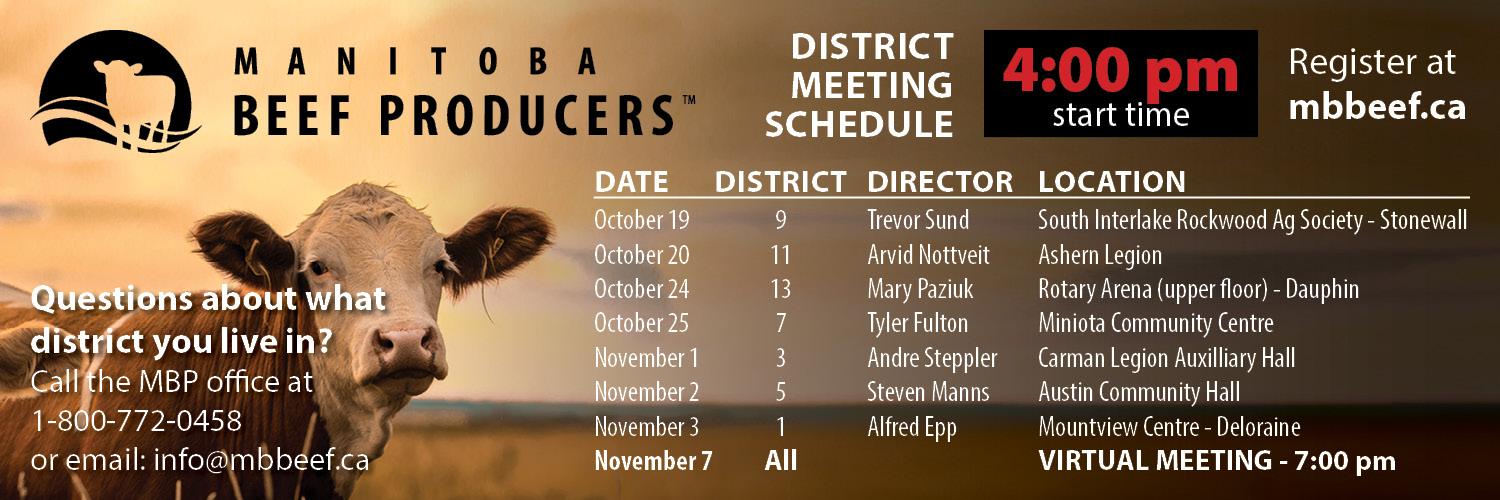

Producers are reminded that the Manitoba government has announced a consultation related to the Agricultural Crown Lands (ACL) Program and forage leases as part of is continuing review of the program.

As per the province’s September 28 news release, “Manitoba Agriculture is exploring other policy, program, regulation and service improvements to enhance the productivity and sustainability of agricultural Crown forage lands including mechanisms for leaseholders to invest in productivity and adjustments to the terms and conditions of leases.
To participate in the online version of the survey visit http://engagemb.ca/agcl-forage-leases
If you prefer, a hard copy of the survey is also found in this edition of the MBP e-newsletter on pages 9-21 along with a backgrounder on the program and changes made to it in recent years. MBP encourages producers to complete the survey online if at all possible so that the information is available to the provincial government as soon as possible.
Please mail hard copies of the completed survey to: Manitoba Agriculture
ATTN: Marnie Carey 816-401 York Ave Winnipeg, MB R3C 0P8
As noted, the online survey closes on October 28, 2022, and have your hard copies of it mailed to the department by October 28 as well.
To read the news release where this consultation was announced (and which also refers to the provincial government implementing a temporary three-year rent reduction for forage leases on agricultural Crown lands commencing in 2023) go to: https://news.gov.mb.ca/news/index.html?item=56479&p osted=2022-09-28
Manitoba Beef Producers held in-person sessions in Stonewall and Ashern this week with updates on MBP activities, presentations, director elections as well as the resolutions and action items component of the meeting. For the full schedule of remaining meetings, look for the advertisement on page 1.




•
• SERVICES: Whetheryouareaspecialtyproducerlookingtoget yourproducttoaspecificmarketordistributor,orifyouareproducing commoditylivestockforsale,wecanpartnerwithyou.Fromour multi-speciescapabilitiestoourabilitytohandlesmallervolumes,we offerexcellentcapabilitiesforproducersintheCanadianPrairiesto maximizetheirprofitability.

• FACILITY: Wehaveastate-of-the-artfacilitytoallowusto reachmarketsacrossCanada,theUSA,andbeyond.Weunderstand producer'sneeds,theircarefortheiranimals,andtheirhonest, straightforwardnature.Callustohearhowwecanworktogethertoget yourproducttomarket.
 GRASSFED: "TrueNorthFoodsispartneredwithA&WCanada tosupplyCanadiangrassfedbeefforA&Wsgrassfedburgerprogram.
GRASSFED: "TrueNorthFoodsispartneredwithA&WCanada tosupplyCanadiangrassfedbeefforA&Wsgrassfedburgerprogram.
(October 18, 2022 Province of Manitoba News Release) The Manitoba government has launched a new Business Pathways website to support food and agri-product entrepreneurs, businesses and organizations throughout all stages of the business life cycle, Agriculture Minister Derek Johnson announced during Small Business Week.
“Whether you have a new food product idea, you see an unmet demand for local food, or you want to grow a food business, the Business Pathways website can help you build your future in food,” said Johnson. “This comprehensive resource fosters economic development and provides the business management, product and process development and marketing support that new and existing agri-food businesses need to effectively enter and compete in the domestic and global marketplaces.”
The new website incorporates resources, programs and services provided by business service providers and industry partners from the entire ecosystem.
The annual Small Business Week, an initiative of the Business Development Bank of Canada, runs from Oct. 16 to Oct. 22.
“I am especially pleased to announce this new resource during Small Business Week, as we celebrate the dedication and achievements of Manitoba entrepreneurs and small businesses,” said Johnson.
With an abundance of productive farmland, diverse commodities, state-of-the-art research facilities, world-class transportation infrastructure and a highly skilled labour force, Manitoba is an ideal place for food and beverage manufacturing, the minister noted. The Business Pathways website complements this business-friendly environment by providing agri-food businesses with tailored information and resources as they start up, build, grow and transition, Johnson added.
“Agriculture is a major driver of Manitoba’s economy and small businesses create many of our province’s skilled careers,” said Economic Development, Investment and Trade Minister Cliff Cullen. “Entrepreneurialism in the food space is exciting and innovative and offers great potential for growth and expansion. This new website will take out so much of the guesswork involved in launching, marketing and succeeding as a new business.”
For more information, visit www.manitoba.ca/foodbusiness.

ahead,” said Johnston. “This is an important improvement in Manitoba’s seasonal flu campaign. Fall is a great time to commit to wellness and a healthy, virus-free winter, so I would encourage all Manitoba seniors to schedule a vaccine appointment as soon as possible.”
(October 17, 2022 Province of Manitoba News Release) The Manitoba government is reminding Manitobans to embrace winter wellness by getting a flu vaccine as soon as possible, Health Minister Audrey Gordon and Seniors and LongTerm Care Minister Scott Johnston announced.
“Flu cases tend to peak over the fall and winter months in Manitoba, but there are things that we can all do to protect ourselves,” said Gordon. “Winter wellness means getting your flu vaccine, while also taking time to stay active, eat healthy meals and keep connected with the people you care about. To provide the strongest protection available to protect older Manitobans, this year our government expanded the eligibility of the high-dose influenza vaccine to include all people 65 and over.”
Anyone aged six months and older is eligible for the flu vaccine. Beginning this year, the Manitoba government has also expanded eligibility for the high-dose influenza vaccine to include all people aged 65 years and older. This type of vaccine offers the strongest protection available against the flu for people who are at greater risk of severe illness, which includes older people. Previously, it was only available to older individuals who lived in remote northern communities, personal care homes or other group facilities.
“Expanding eligibility for the high-dose influenza vaccine will help people aged 65 and older in Manitoba stay healthy and active in the months
“Vaccination is one of the best tools we have to help reduce the spread and severity of respiratory viruses, like the flu and COVID-19,” said Dr. Brent Roussin, chief provincial public health officer. “Public health encourages all Manitobans to be up to date on all of the vaccines you’re eligible for. You can layer on even more protection by washing your hands, staying home when you’re sick and covering your cough. These simple steps will help to keep us all healthier and protect our health-care system for those who need it most.”
The high-dose and regular flu vaccine are available at no cost. Last year, more than 400,000 doses of flu vaccine were given to people in Manitoba, or about 29 per cent of the eligible population. The Pneu-P-23 vaccine, which helps protect against pneumococcal disease, is also offered free of charge to people aged 65 and older. It can be administered at the same time as other vaccines and is often available at many of the same locations.
The flu vaccine is now widely available across the province. To find a location with the flu vaccine, use the online vaccine finder at https://protectmb.ca/current-immunizationsites/ Appointments at regional clinics can be made online or by calling 1-844-626-8222 (1844-MAN-VACC). People can also contact medical clinics and pharmacies directly to schedule vaccinations. Walk-ins may also be available at many locations.

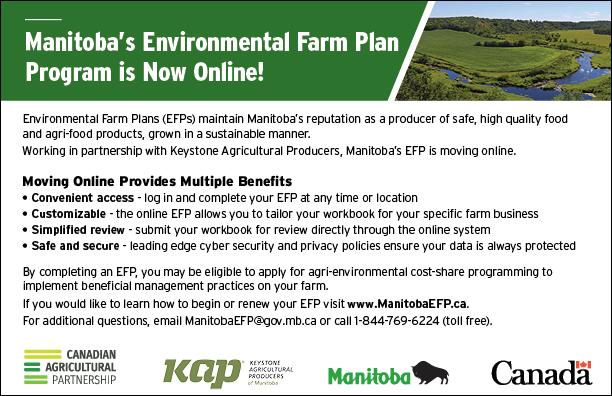
The Manitoba government has updated how vaccination appointments are booked using the online booking tool or the call centre to help make it simpler going into the fall season. Individuals make a generic vaccination appointment, based on their age, and then can receive an approved COVID-19 vaccine, seasonal flu vaccine, or both at the appointment.
It is safe and effective to get a flu or pneumococcal vaccine and a COVID-19 vaccine at the same time. However, the National Advisory Committee on Immunization has a precautionary recommendation for children aged six months to four years to leave a 14-day
interval between the COVID-19 vaccine and other vaccines including the flu vaccine. Parents and guardians of children in this age group should speak with their health-care provider if a child is already scheduled or has received a seasonal flu or other childhood immunization before getting a COVID-19 vaccine.
An advertising campaign launches this week to highlight the importance of the seasonal flu vaccine as part of overall winter wellness.
For more information about seasonal flu, visit https://protectmb.ca/seasonal-flu/ or https://www.gov.mb.ca/health/flu/
(October 19, 2022 Province of Manitoba News Releases) The Manitoba government is continuing to improve the functionality and reliability of provincial highways, with more than $60 million being invested to upgrade Provincial Road (PR) 201 from PR 200 to PR 302, Manitoba Transportation and Infrastructure Minister Doyle Piwniuk announced here.
“Our government recognizes the efficient transportation of goods is an integral part of Manitoba’s economy and the provincial highway network plays a critical role in enabling market access,” said Piwniuk. “As the only eastwest provincial route serving the Municipality of Emerson-Franklin and the rural municipalities of Stuartburn and Piney, PR 201 is an important highway in the region.”
The highway is currently subject to Level 1 spring road restrictions, which restricts the maximum axle weight for vehicles to 90 per cent of normal loading in order to protect pavement in vulnerable conditions. While spring road restrictions are in effect, heavy vehicles may need to take alternate routes or haul multiple smaller loads.
As part of the government’s Trade and Commerce Grid initiative, the section of the highway from PR 200 to PR 302 will be upgraded to Manitoba’s heaviest regulated loading classification to accommodate heavy
commercial loads year-round in order to support improved market access and efficient transportation of goods.
Upgrades on PR 201 from Provincial Trunk Highway (PTH) 59 to PR 302 are expected to start in 2025/26, with a project cost of $27.7 million. Further upgrades on the highway from PR 200 to PTH 59, at the cost of $33.5 million, are expected to start the following year, the minister added.
“This upgrade is a significant and welcomed infrastructure project for our region,” said Monique Chenier, economic development manager for Sunrise Corner, a partnership of the RMs of Piney and Stuartburn. “This investment in rural communities and people will enable our local farmers, retailers and manufacturers to be more competitive and grow their businesses to benefit our region and all of Manitoba.”
The minister noted PTH 59 is currently being upgraded from the U.S. border to PTH 52 to accommodate heavier commercial loads. That project will be completed this fall, weather permitting.
To learn more about Manitoba’s Multi-Year Highways Investment Strategy visit: www.gov.mb.ca/mit/myhis/index.html.
(October 18, 2022 Department of Finance Canada News Release) Today, Bill C-30, the Cost of Living Relief Act, No. 1 (Targeted Tax Relief), received Royal Assent, doubling the Goods and Services Tax Credit for six months to help make life more affordable for millions of Canadians.
Eligible Canadians who already receive the GST Credit will automatically receive their payments starting in early November.
This means that Canadians without children will receive up to an extra $234 and couples with two children will receive up to an extra $467 this year. Seniors will receive an extra $225 on average.
Bill C-30 is the first of two pieces of legislation introduced this fall to support Canadians with the rising cost of living without adding fuel to the fire of inflation. Bill C-31, the Cost of Living Relief Act, No. 2 (Targeted Support for Households), which is still before Parliament, would enact two further affordability measures: the Canada Dental Benefit and a one-time topup to the Canada Housing Benefit
In addition to Bill C-30 and Bill C-31, the government’s Affordability Plan is already delivering targeted and fiscally responsible financial support to the Canadians who need it most, with particular emphasis on addressing the needs of low-income Canadians who are most exposed to inflation.
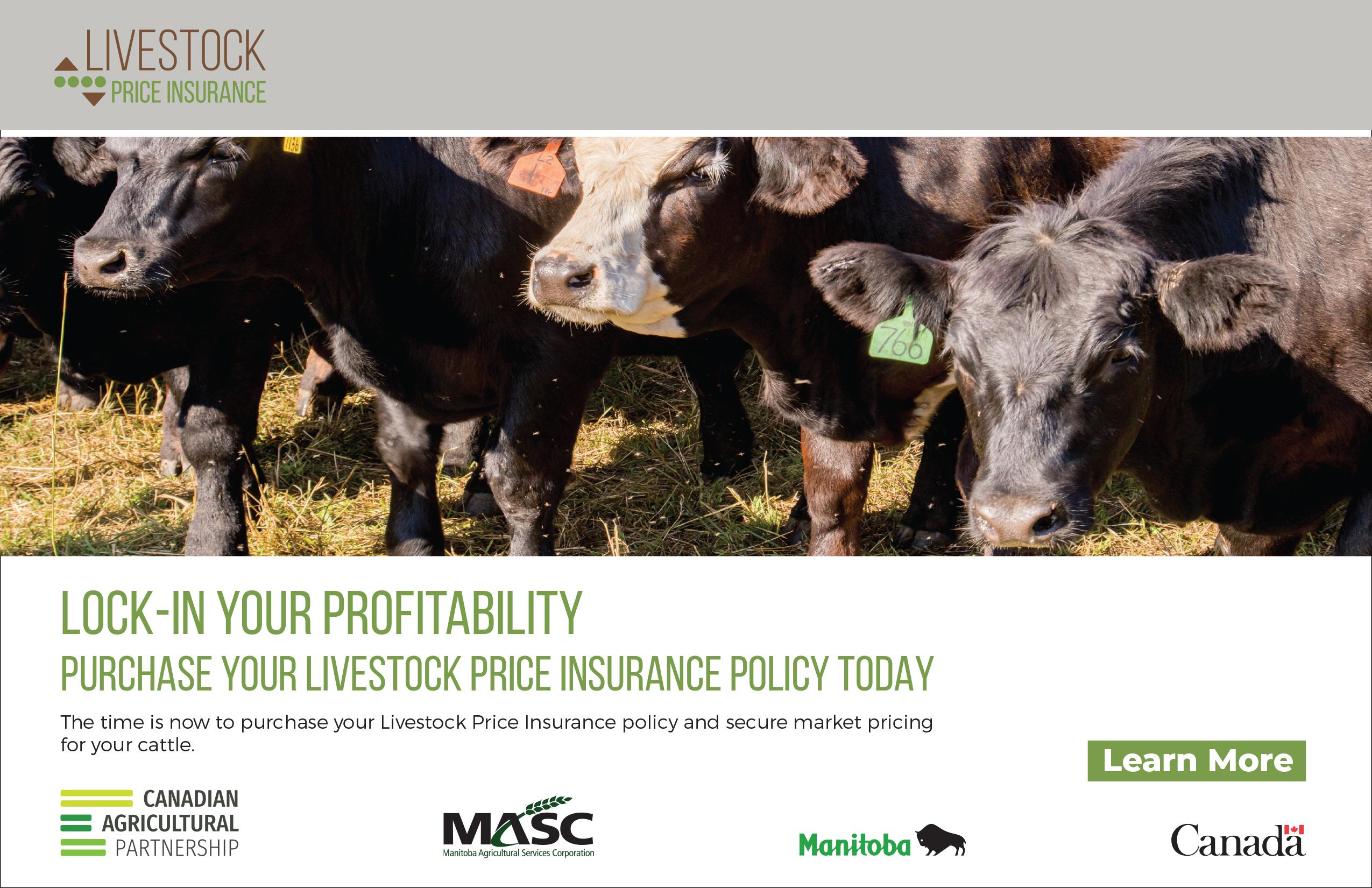

Manitoba Agriculture has heard from forage lease holders through their letters and through various meetings. Several concerns were raised about rents, lease terms and conditions, land productivity, and programs/services. The following discusses current policies on ACL.
Forage rents are calculated using a market based formula in regulation: 3.5% of the market price of beef x the number of cows that the land can sustain (i.e. “animal unit months”, or AUMs, which is a measure of the productivity of the land). Forage lease rent is A x B x 3.5% (where A = AUM, B = price of cattle).
Previously, rents were frozen at artificially low rates since 2014, at about $2/AUM, and were based on a triennial survey. Lessees are currently paying $7.19/AUM, or about $48 for 5 months of feed per cow-calf pair (for reference Saskatchewan 2022 grazing rates are $8.18 per AUM).
Rental rate transition: In 2019, the rental rate remained at $2.13 per AUM. In 2020, the rental rate was the average of the 2019 rate and the amount described in the formula. In 2021 and thereafter, the rent is determined using the formula. In addition, rent is now payable by December 31, rather than at the end of the production year as had been the practice in the past.
Forage lease terms are 15 years. Those who had forage leases prior to 2019 (i.e. “legacy leaseholders”) can transfer their lease to immediate family members only in perpetuity. For partnerships and corporations, leases obtained prior to 2019 can be transferred to an existing ownership interest in the partnership or corporation in perpetuity.
Leaseholders may surrender their lease at any time without penalty. Surrendering only a portion of a lease can be considered on a case by case basis, depending on the land use impacts and other considerations.

Lifetime leases can no longer be transferred to a third party. This is called a unit transfer. Typically, this involves the transfer of a lifetime ACL lease along with the sale of a farmer’s private property to a non family member. However, those with forage leases prior to 2019 may transfer their leases to immediate family members in perpetuity.
AUM ratings are long term production averages. AUMs are not adjusted annually and are generally conservative. Lands are assessed for AUM using scientific methods based on region, soil type, type of vegetation and other conditions. AUM assessments are always conducted prior to Crown land auctions. Forage lessees are expected to manage the land to maintain or increase long term productivity. AUMs are not adjusted downward if leaseholders are not actively maintaining the land, including controlling encroachment. AUMs are a key part of rent calculations: rent is calculated as 3.5% of the market price of cattle per AUM.
When leaseholders make investments to improve ACL productivity, by policy, Manitoba will not increase AUM assessments on those lands for 10 years.
The 2021 ACL Forage Productivity Pilot Program (ACLFPPP) (75% government funded and 25% applicant funded) funded projects related to forage management techniques to improve productivity and sustainability on Crown land. ACL productivity improvements resulting from the ACLFPPP may not be reflected in AUM assessments for 5-10 years, meaning rents would not be increased due to the improvements. In the pilot, any improvements are owned by lessees. Many years ago, Manitoba offered a Crown Land Improvement Program (CLIP) for leaseholders to develop Crown lands for the purposes of cattle production. CLIP acres are a large part of existing ACLP lands. AUMs on CLIP acres are assessed based on their productivity potential; the onus is on the leaseholder to maintain productivity, for example by limiting encroachment. In cases where the land has not been adequately maintained over the years, resulting in the need for significant redevelopment, there can be delays for the permissions required from the Department to complete this type of work, due to the need for consultations and permits.
The value of improvements on forage leases is settled privately between outgoing and incoming leaseholders within 30 days of the auction. If agreement cannot be reached, the matter is referred to formal arbitration under The Arbitration Act. This is a new system that is relatively untested.
In situations where a leaseholder walks away from a lease and improvements, and they revert to the Crown, the value is known prior to the allocation process, and the value is paid to the Crown at the time of allocation.
Auctions are held in November, in the year prior to use, for various locations throughout the province, with advertisements placed in local newspapers and online, at least 30 days prior to the auction date. Payments must be made in full at the auction, including all of the first year’s rent and local taxes, and any other fees that may be known for the parcel of land.
The Department moved to online auctions during the pandemic. Sometimes, releasing the list of land to be auctioned is delayed due to the department’s generous cancellation policy for non payment. Cancelled and surrendered leases are put on the notification list to First Nations for Treaty Land Entitlement selection prior to auction.
Are you an active AGL forage lease holder? (Choose anyone option)
Did you obtain your forage lease prior to 2019? (Choose anyone option)
Have you ever held an AGL lease? (Choose anyone option)
Do you intend to hold an AGL lease at some point in the future? (Choose anyone option) D Yes



Rent: Forage lease rents are based on a formula that includes the productivity of the land (i.e AUM) and the 3 year average price of beef Specifically , rent is calculated as 3 5% of the 3 year average price of cattle for each cow/calf pair
Lease : Subletting a forage lease (or transferring a lease to someone else) is currently allowed under special circumstances
Which of the following options would you prefer to determine forage lease rents :
(Choose any one option)
D The current formula - based on productivity of the land and the 3 year average price of beef. D Rent set by bid at auction (no formula) with an annual inflationary adjustment. D Don'tknow D Other
Answer this question only if you have chosen Other for Which of the following options would you prefer to determine forage lease rents :
Please specify :
Do you support allowing lease holders to sublet (or transfer) a lease to someone else? (Choose any one option) D Yes 0 No Answer this question only if you have chosen Yes for Do you support allowing lease holders to sublet (or transfer) a lease to someone else?
Should leaseholders be allowed to sublet (or transfer) a lease under any circumstance, or only special circumstances?
(Choose any one option) D Lease holders should be able to sublet (or transfer) a lease at any time for any reason D Lease holders should only be able to sublet (or transfer) a lease under special circumstances D Don 'tknow
Answer this question only if you have chosen Lease holders should only be able to sublet (or transfer) a lease under special circumstances. for Should leaseholders be allowed to sublet (or transfer) a lease under any circumstance, or only special circumstances?
Please specify :
Agricultural Crown lands under a forage lease must be actively managed to maintain productivity (i.e AUM ratings must remain consistent over time), which is a requirement of the lease agreement.
To what degree do you understand how the department determines productivity (or AUM ratings) of the land? Check one : (Choose any one option) D Completely understand how MB AGR determines productivity (or AUM ratings) D Somewhat understand how MB AGR determines productivity (or AUM ratings) D Do not understand how MB AGR determines productivity (or AUM ratings)
Answer this question only if you have not chosen Completely understand how MB AGR determines productivity (or AUM ratings) for To what degree do you understand how the department determines productivity (or AUM ratings) of the land? Check one : What could we do to help you understand the process better? Please check all that apply (Choose all that apply) D Training courses or webinars D Printed materials, like a guide book

Through your commodity association
In person through our AGR representative
How likely would you be to invest in productivity improvements (for example , cross fencing, watering systems, rejuvenating forage stands , managing bush encroachment) if :
Very Somewhat Neitherlikely or Not very Not at all Questions likely likely unlikely likely likely
If your leaseterm could be extended to 20 years (from the current 15 years)
If the province shared in the cost of the improvements
If the province owned the improvements afterward
If there was predictability on the market value at the end of the leaseterm
If the province provided extension servicesto help develop long term management plans
If subletting (ortransferring alease) were madeavailable/easier

For those lease holders who mismanage the land in contravention of the lease that results in a decline in productivity , what would be a reasonable consequence to the lease holder? (Choose any one option)
Cancellation of the lease
Other Answer this question only if you have chosen Other for For those lease holders who mismanage the land in contravention of the lease that results i n a decline in productivity, what would be a reasonable consequence to the lease holder? Please specify :
After an auction, the current process of transferring the crown land improvements from the outgoing lease holder to the incoming lease holder is a negotiation between the parties If a reasonable price cannot be agreed to by negotiation, the parties may go to formal arbitration via The Arbitration Act.
Have you ever participated in this process of negotiating a price to transfer the improvements?
(Choose any one option) D Yes 0 No
Answer this question only if you have chosen Yes for Have you ever partic ipated in this process of negotiating a price to transfer the improvements?
Were you the incoming or outgoing leaseholder?

(Choose any one option) D Incoming D Outgoing
Answer this question only if you have chosen Yes for Have you ever partic ipated in this process of negotiating a price to transfer the improvements?
How satisfactory was the outcome?
(Choose any one option) D Very satisfactory D Somewhat satisfactory D Somewhat unsatisfactory D Not at all satisfactory D Don'tknow
Answer this question only if you have not chosen Very satisfactory for How satisfactory was the outcome? Why was the outcome not satisfactory?
There are several ways that improvements to crown land could be valued to determine a price between outgoing and incoming lease holders Of the below options, please rank your preference :
{Rank each option)
__ Third party appraisal of the market value before auction
__ Third party appraisal of the market value after auction
__ Standard listing of values which would determine in advance the price to be paid for the improvements.
__ The current process of negotiation
__ The value of the listed improvements should be determined by bid at the auction
Are there additional options that should be considered that are not specified in the question above?

Customer Service
A list of land that will be available for auction are typically released in October. Auctions for AGL are typically held in November. Forage lease rent invoices are sent to lease holders in November with rent due in December. Some farmers have said they would like to see a land listing for auctions sooner to allow time to inspect the land for which they may choose to place a bid. In some cases, land listings are delayed due to the department's generous non-payment policy. In the case of non payment of rent, how much time should lapse before a forage lease is cancelled? (Choose any one option)
1 month
2 months
3 months
4 months
5 months
6 months
More then 6 months How well do you understand your annual rent invoice? (Choose any one option)
Fully understand the invoice
Somewhat understand the invoice.
Don 't understand the invoice Answer this question only if you have chosen Don't understand the invoice . for How well do you understand your annual rent invoice? Why do you not fully understand the invoice Please check all that apply (Choose all that apply)
Terminology is complex
Too much information
Not enough information
You don 't read the invoice
Other Answer this question only if you have chosen Other for Why do you not fully understand the invoice Please check all that apply Please specify How do you want to receive information on programs and services related to the AGL? Please check all that apply (Choose all that apply)
Through your commodity and/or farm association



How often do you communicate with your Department of Agriculture representative?
(Choose any one option) 0 Weekly 0 Monthly D 2-3 times per year
Once per year
Less then once per year
How interested would you be in working with a Department of Agriculture representative to develop long-term management plans for your ACL?
(Choose any one option) D Very interested
Somewhat interested
Neutral/don't know
Not very interested D Not at all interested


Name(s): Farm Name: Address:
Phone: Email: PLEASE ATTACH A WORD DOCUMENT WITH THE FOLLOWING INFORMATION:
1. Provide a description of your farm including the environment it operates in.
2. What have you done/what are you doing to improve environmental management on your farm?
3. What are your challenges and successes? Please include high-resolution images and data which help show measurable results.
4. What factors have enabled you to make management changes? (e.g. Working with conservation organizations, programs such as the Environmental Farm Plan, funding support, education, etc.)
5. What are your environmental goals for the future and how do you plan to carry them out?
6. Include two letters of reference that speak to your leadership in conservation.
Please limit your application to 10 pages (not including letters of reference and photos). Electronic applications are preferred and a single, complete PDF document is requested. A sample application from previous years can be found online at https://www.cattle.ca/sustainability/theenvironmental-stewardship-award/how-to-nominate/

Contact your provincial organization listed on the previous page to determine when your association requires you to submit your application for the provincial award.
A selection of no less than ten high-resolution images suitable for reproduction on social media, print etc.
Video presentation link if available, media stories/ broadcasts showcasing your stewardship efforts.
TESA sponsorship program is available to appropriate organizations that wish to affiliate themselves with the CCA’s TESA program. In addition to showing support for environmental stewardship and Canada’s beef cattle producers, the program also provides the opportunity to join industry leaders, government representatives and nearly 60,000 Canadian beef farms in the national discussion on environmental issues affecting the industry. For more information, visit www.cattle.ca/what-is-tesa

For more than 65 years, MNP has been helping beef producers get the most from their operations. Whether you are looking to pass the farm on to the next generation, improve your profitability, be more competitive or expand MNP’s beef industry specialists will help you get the results you’re looking for. To find out what MNP can do for you, contact Marvin Slingerland, Partner, MNP Lethbridge, at Director of Livestock Services at 1.800.661.8097 or Marvin.Slingerland@mnp.ca



Safely dispose of unwanted or obsolete agricultural pesticides and livestock/equine medications –no charge! Take them to the following locations on the dates noted between 9 a.m. and 4 p.m.
ARNAUD
Thursday, Oct. 27 G J Chemical Co. Ltd. 96 Smith Ave West 204-427-2337
BALDUR Friday, Oct. 28 Baldur Agro 121 2nd St 204-535-2598
BEAUSEJOUR
Wednesday, Oct. 26
Nutrien Ag Solutions 73010 Road 40 off Hwy 44 SE 10-13-7E 204-268-3497

BRANDON Thursday, Oct. 27 Richardson Pioneer 14 km west on Hwy 1, then 1/4 mile south on Pioneer Rd. 204-727-5353
BRUNKILD
Monday, Oct. 24 MK Agro 3062 Road 39 NW 204-736-4769
DAUPHIN Monday, Oct. 24 Dauphin Co-op AGRO 601 Whitmore Ave E 204-622-6080
DELORAINE Monday, Oct. 24
Nutrien Ag Solutions Hwy 3 & Broadway St. S 204-747-2877
GLADSTONE Monday, Oct. 24 Neepawa-Gladstone Coop Road 69, Hwy 16 (4 miles W of Gladstone) 204-385-2906
INGLIS
Wednesday, Oct. 26 Prairie Giants Crop Supply 2 km East of Hwy 83 on PR 366 204-564-2293
MEADOWS
Thursday, Oct. 27 Ag Advantage Ltd 68156 Road 6 W 204-322-5351
MELITA
Tuesday, Oct. 25 Cargill 7 km SW of Melita on Hwy 83 204-522-3221
PORTAGE LA PRAIRIE Friday, Oct. 28 Portage Agri-Sales 11 Can-Oat Dr 204-857-7838

RIVERS
Friday, Oct. 28 Redfern Farm Services 102 2nd Ave 204-328-5325
SHOAL LAKE Thursday, Oct. 27 Shur-Gro Farm Services Ltd. 236 Industrial Park Rd. 204-759-4240
ST. LEON Tuesday, Oct. 25 Pembina Coop 49079 Road 25N 204-744-2850
STANLEY Wednesday, Oct. 26 Cargill 12137 Road 25W 204-325-9551
STEINBACH
Friday, Oct. 28 Clearview Coop 33124 Road 39 N (at Hwy 12N, between Steinbach and Blumenort) 204-326-9921
SWAN RIVER Tuesday, Oct. 25 Cargill 2 miles south on Hwy 83 204-734-5747
TEULON
Tuesday, Oct. 25 Willis Agro 11034E Road 95N 204-461-0386
VIRDEN Wednesday, Oct. 26 Core Ag Inputs 320 Chester St. E 431-763-3536
The proper nutrition of beef cattle is a key component of a successful production system. Feed usually accounts for the single largest input cost associated with beef cattle. Find out more about how to feed your animals successfully and at a low cost.
Date: Wednesday, November 2, 2022
Time: 10 a.m. to 3 p.m.
Place: Manitoba Beef and Forage Initiatives Farm

Corner of highway 353 and #10 north of Brandon
Cost is $20 per person. Call Manitoba Agriculture at 204-648-3965 to pre-register
Agenda
10 a.m. The Silage How-to Guide for Livestock Producers

Dr. John McKinnon, JJM Nutrition, Saskatoon, SK
11 a.m. Getting a Handle on Feed Costs
Ben Hamm – Farm Business Management Specialist, Manitoba Agriculture, Steinbach
LUNCH
1 p.m. Beef Cattle Nutrition - Cow and backgrounder rations
Dr. John McKinnon, JJM Nutrition, Saskatoon, SK
2 p.m. Alternative Feeds for Feeding the Cow Herd
Shawn Cabak – Livestock and Forage Extension Specialist –
Manitoba Agriculture, Portage
2:30 p.m. Cowbytes Nutritional Program for Beef Cattle
Elizabeth Nernberg - Livestock and Forage Extension Specialist –Manitoba Agriculture, Roblin

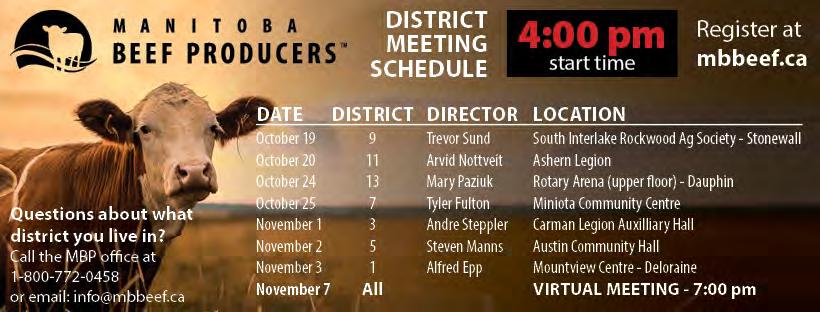
from MBP October 14, 2022 mbbeef.ca
In 2020, the governments of Canada and Manitoba invested $990,000 through the Canadian Agricultural Partnership in a three-year contribution agreement with Keystone Agricultural Producers (KAP) to develop the online EFP platform.
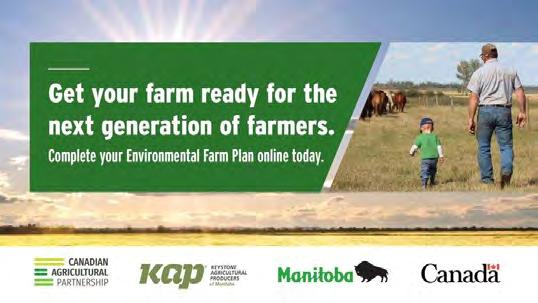
The EFP is a voluntary, confidential self-assessment of a producer’s farm. The purpose of the EFP is to assess the features and management practices of a farm in order to develop an action plan to mitigate identified risks.
(October 11, 2022 Joint Federal/Provincial News Release) The governments of Canada and Manitoba are announcing the launch of Manitoba’s new online Environmental Farm Plan (EFP) platform, federal Agriculture and Agri-Food Minister Marie-Claude Bibeau and Manitoba Agriculture Minister Derek Johnson announced.

“Canadian agriculture’s long-term sustainability depends on its ability to adapt to emerging climate conditions,” said Bibeau. “Manitoba’s new online Environmental Farm Plan allows producers greater access to resources, so they can prioritize best management practices that make the greatest impact on their farm.”
“Our government is committed to supporting sustainable agriculture production practices such as sustainable water strategies and climate change mitigation activities,” said Johnson. “The EFP is a valuable and proactive risk management tool. It includes a strong educational component that will continue to provide positive environmental outcomes while enabling the province to meet its goals for enhancing public trust in the agricultural sector.”
•
• SERVICES: Whetheryouareaspecialtyproducerlookingtoget yourproducttoaspecificmarketordistributor,orifyouareproducing commoditylivestockforsale,wecanpartnerwithyou.Fromour multi-speciescapabilitiestoourabilitytohandlesmallervolumes,we offerexcellentcapabilitiesforproducersintheCanadianPrairiesto maximizetheirprofitability.
• FACILITY: Wehaveastate-of-the-artfacilitytoallowusto reachmarketsacrossCanada,theUSA,andbeyond.Weunderstand producer'sneeds,theircarefortheiranimals,andtheirhonest, straightforwardnature.Callustohearhowwecanworktogethertoget yourproducttomarket.
www.truenorthfoods.ca

 GRASSFED: "TrueNorthFoodsispartneredwithA&WCanada tosupplyCanadiangrassfedbeefforA&Wsgrassfedburgerprogram.
GRASSFED: "TrueNorthFoodsispartneredwithA&WCanada tosupplyCanadiangrassfedbeefforA&Wsgrassfedburgerprogram.

The new online version of the EFP is modern, efficient and easy for producers to use and is designed with leading-edge cybersecurity and privacy policies to ensure data is always protected. Online tutorials are available to guide producers through the process. The system has updated and streamlined content and several features that allow producers to customize EFP workbooks to specific farm operations. Once a workbook is complete, producers can submit it for third-party review by KAP reviewers.
The online platform integrates national and international sustainable sourcing standards that will allow producers to address market requirements for specific commodity groups. This integration adds value to the Manitoba EFP and reduces the burden for producers, noted Johnson.
“KAP is pleased to have worked with both levels of government on delivering a tool that producers can confidently and easily use as they work to more easily employ sustainable farming practices in their operations,” said Bill Campbell, president, Keystone Agricultural Producers. “This new platform will help increase the accessibility of the EFP program for Manitoba producers and sends a strong signal to consumers about the efforts taken to deliver
sustainably grown agricultural products to the marketplace.”
A completed EFP is required for farms participating in most agri-environmental costshared programming, which directly supports initiatives of the Made-in-Manitoba Climate and Green Plan by enhancing the resilience and sustainability of the agricultural sector.
Johnson noted that by implementing an EFP, producers are able to improve air, water and soil quality, conserve biodiversity on Manitoba farmland, contribute to environmental protection and conservation, and make Manitoba-grown commodities more marketable to environmentally conscious consumers.
More information on the EFP and a link to the online EFP portal can be found at www.ManitobaEFP.ca.
The Canadian Agricultural Partnership is a fiveyear, $3-billion commitment by Canada's federal, provincial and territorial governments that supports Canada's agri-food and agriproducts sectors. This includes a $2-billion commitment that is cost-shared 60 per cent federally and 40 per cent provincially/territorially for programs that are designed and delivered by provinces and territories.
Manitoba Agriculture staff will lead free workshops on how to search and find the information you need on the Manitoba Agriculture website.

Learn how to:
• find financial assistance information
• fill out online applications
• save, attach and email online applications
• navigate through the site in general

Environmental Farm Plans (EFPs) maintain Manitoba’s reputation as a producer of safe, high quality foods, grown in a sustainable manner.
How it Works
1. Complete your EFP workbook online.
2. Submit your workbook online for a KAP Review.
3. Receive your Statement of Completion.
An EFP will help you:
• make Manitoba-grown commodities more marketable to environmentally-conscious consumers around the world
• meet sustainable sourcing requirements for select commodities
• become eligible to apply for beneficial management practices (BMP) cost share programs
• demonstrate due diligence by identifying environmental assets and risks on your farm and implementing actions to reduce those risks
• improve air, water and soil quality, and conserve biodiversity on Manitoba farmland
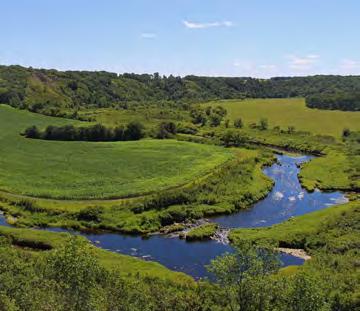
Visit www.ManitobaEFP.ca to complete your EFP today.
For additional questions, email ManitobaEFP@gov.mb.ca or call 1--844-769-6224 (toll free)


• You can access Manitoba’s Online EFP at www.ManitobaEFP.ca.

• If you do not have access to stable Internet or require assistance call 1-844-769-6224 (toll free).
First Time User
• Create an account by clicking ‘Create Account’.
• Verify your email address to complete account creation. Already have an Account
• Continue your work by clicking ‘Sign In’.
• Once you have logged in, click ‘Create an EFP’ and complete the Farm Business Profile This will allow the system to create a customized EFP workbook with chapters relevant to your farm operation.
• A navigation bar will guide you through the required steps to complete the workbook.
Save and Continue Save Skip to Next Required Step Previous
• Your information will be saved as you proceed through the workbook. You can exit the system and return as needed.
• If you require assistance while you are completing your EFP, you can access the FAQ page (https://online.manitobaefp.ca/faq) or email questions to ManitobaEFP@gov.mb.ca.
• Once you have completed all required sections, you can submit your EFP workbook for review directly through the online system.
• A reviewer will contact you if they have specific questions.
• You will receive an email once your EFP workbook has been reviewed and approved.
• A link in the email will return you to the Online EFP where you can download your SOC and your completed EFP workbook. You may return to the Online EFP at any time to download these materials from the Producer Dashboard.
Reviewer: Johnny Reviewer - johnny.reviewer@kap.ca
Date Created: Sep 20, 2022 Statement of Completion Workbook PDF
Date Approved: Sep 20, 2022Expiry Date: Sep 20, 2027 Workbook Version: 4
Scorecard Renew Workbook
• Your SOC is valid for five years. Your information will be saved in the online system so that you can easily renew your EFP workbook, as needed.
The proper nutrition of beef cattle is a key component of a successful production system. Feed usually accounts for the single largest input cost associated with beef cattle. Find out more about how to feed your animals successfully and at a low cost.
Date: Wednesday, November 2, 2022
Time: 10 a.m. to 3 p.m.
Place: Manitoba Beef and Forage Initiatives Farm

Corner of highway 353 and #10 north of Brandon
Cost is $20 per person. Call Manitoba Agriculture at 204-648-3965 to pre-register
Agenda
10 a.m. The Silage How-to Guide for Livestock Producers

Dr. John McKinnon, JJM Nutrition, Saskatoon, SK
11 a.m. Getting a Handle on Feed Costs
Ben Hamm – Farm Business Management Specialist, Manitoba Agriculture, Steinbach
LUNCH
1 p.m. Beef Cattle Nutrition - Cow and backgrounder rations
Dr. John McKinnon, JJM Nutrition, Saskatoon, SK
2 p.m. Alternative Feeds for Feeding the Cow Herd
Shawn Cabak – Livestock and Forage Extension Specialist –
Manitoba Agriculture, Portage
2:30 p.m. Cowbytes Nutritional Program for Beef Cattle
Elizabeth Nernberg - Livestock and Forage Extension Specialist –Manitoba Agriculture, Roblin

Producers are reminded that the Manitoba government has announced a consultation related to the Agricultural Crown Lands (ACL) Program and forage leases as part of is continuing review of the program.
As per the province’s September 28 news release, “Manitoba Agriculture is exploring other policy, program, regulation and service improvements to enhance the productivity and sustainability of agricultural Crown forage lands including mechanisms for leaseholders to invest in productivity and adjustments to the terms and conditions of leases.
To participate in the online version of the survey visit http://engagemb.ca/agcl-forageleases
If you prefer, a hard copy of the survey is also found in this edition of the MBP e-newsletter, along with a backgrounder on the program and changes made to it in recent years. MBP encourages producers to complete the survey online if at all possible so that the information is
available to the provincial government as soon as possible.
Please mail hard copies of the completed survey to:
Manitoba Agriculture
ATTN: Marnie Carey 816-401 York Ave Winnipeg, MB R3C 0P8
As noted, the online survey closes on October 28, 2022, and have your hard copies of it mailed to the department by October 28 as well.
To read the news release where this consultation was announced (and which also refers to the provincial government implementing a temporary three-year rent reduction for forage leases on agricultural Crown lands commencing in 2023) go to: https://news.gov.mb.ca/news/index.html?item =56479&posted=2022-09-28

Manitoba Agriculture has heard from forage lease holders through their letters and through various meetings. Several concerns were raised about rents, lease terms and conditions, land productivity, and programs/services. The following discusses current policies on ACL.
Forage rents are calculated using a market based formula in regulation: 3.5% of the market price of beef x the number of cows that the land can sustain (i.e. “animal unit months”, or AUMs, which is a measure of the productivity of the land). Forage lease rent is A x B x 3.5% (where A = AUM, B = price of cattle).
Previously, rents were frozen at artificially low rates since 2014, at about $2/AUM, and were based on a triennial survey. Lessees are currently paying $7.19/AUM, or about $48 for 5 months of feed per cow-calf pair (for reference Saskatchewan 2022 grazing rates are $8.18 per AUM).
Rental rate transition: In 2019, the rental rate remained at $2.13 per AUM. In 2020, the rental rate was the average of the 2019 rate and the amount described in the formula. In 2021 and thereafter, the rent is determined using the formula. In addition, rent is now payable by December 31, rather than at the end of the production year as had been the practice in the past.
Forage lease terms are 15 years. Those who had forage leases prior to 2019 (i.e. “legacy leaseholders”) can transfer their lease to immediate family members only in perpetuity. For partnerships and corporations, leases obtained prior to 2019 can be transferred to an existing ownership interest in the partnership or corporation in perpetuity.
Leaseholders may surrender their lease at any time without penalty. Surrendering only a portion of a lease can be considered on a case by case basis, depending on the land use impacts and other considerations.

Lifetime leases can no longer be transferred to a third party. This is called a unit transfer. Typically, this involves the transfer of a lifetime ACL lease along with the sale of a farmer’s private property to a non family member. However, those with forage leases prior to 2019 may transfer their leases to immediate family members in perpetuity.
AUM ratings are long term production averages. AUMs are not adjusted annually and are generally conservative. Lands are assessed for AUM using scientific methods based on region, soil type, type of vegetation and other conditions. AUM assessments are always conducted prior to Crown land auctions. Forage lessees are expected to manage the land to maintain or increase long term productivity. AUMs are not adjusted downward if leaseholders are not actively maintaining the land, including controlling encroachment. AUMs are a key part of rent calculations: rent is calculated as 3.5% of the market price of cattle per AUM.
When leaseholders make investments to improve ACL productivity, by policy, Manitoba will not increase AUM assessments on those lands for 10 years.
The 2021 ACL Forage Productivity Pilot Program (ACLFPPP) (75% government funded and 25% applicant funded) funded projects related to forage management techniques to improve productivity and sustainability on Crown land. ACL productivity improvements resulting from the ACLFPPP may not be reflected in AUM assessments for 5-10 years, meaning rents would not be increased due to the improvements. In the pilot, any improvements are owned by lessees. Many years ago, Manitoba offered a Crown Land Improvement Program (CLIP) for leaseholders to develop Crown lands for the purposes of cattle production. CLIP acres are a large part of existing ACLP lands. AUMs on CLIP acres are assessed based on their productivity potential; the onus is on the leaseholder to maintain productivity, for example by limiting encroachment. In cases where the land has not been adequately maintained over the years, resulting in the need for significant redevelopment, there can be delays for the permissions required from the Department to complete this type of work, due to the need for consultations and permits.
The value of improvements on forage leases is settled privately between outgoing and incoming leaseholders within 30 days of the auction. If agreement cannot be reached, the matter is referred to formal arbitration under The Arbitration Act. This is a new system that is relatively untested.
In situations where a leaseholder walks away from a lease and improvements, and they revert to the Crown, the value is known prior to the allocation process, and the value is paid to the Crown at the time of allocation.
Auctions are held in November, in the year prior to use, for various locations throughout the province, with advertisements placed in local newspapers and online, at least 30 days prior to the auction date. Payments must be made in full at the auction, including all of the first year’s rent and local taxes, and any other fees that may be known for the parcel of land.
The Department moved to online auctions during the pandemic. Sometimes, releasing the list of land to be auctioned is delayed due to the department’s generous cancellation policy for non payment. Cancelled and surrendered leases are put on the notification list to First Nations for Treaty Land Entitlement selection prior to auction.
Are you an active AGL forage lease holder? (Choose anyone option)
Did you obtain your forage lease prior to 2019? (Choose anyone option)
Have you ever held an AGL lease? (Choose anyone option)
Do you intend to hold an AGL lease at some point in the future? (Choose anyone option) D Yes



Rent: Forage lease rents are based on a formula that includes the productivity of the land (i.e AUM) and the 3 year average price of beef Specifically , rent is calculated as 3 5% of the 3 year average price of cattle for each cow/calf pair
Lease : Subletting a forage lease (or transferring a lease to someone else) is currently allowed under special circumstances
Which of the following options would you prefer to determine forage lease rents :
(Choose any one option)
D The current formula - based on productivity of the land and the 3 year average price of beef. D Rent set by bid at auction (no formula) with an annual inflationary adjustment. D Don'tknow D Other
Answer this question only if you have chosen Other for Which of the following options would you prefer to determine forage lease rents :
Please specify :
Do you support allowing lease holders to sublet (or transfer) a lease to someone else? (Choose any one option) D Yes 0 No Answer this question only if you have chosen Yes for Do you support allowing lease holders to sublet (or transfer) a lease to someone else?
Should leaseholders be allowed to sublet (or transfer) a lease under any circumstance, or only special circumstances?
(Choose any one option) D Lease holders should be able to sublet (or transfer) a lease at any time for any reason D Lease holders should only be able to sublet (or transfer) a lease under special circumstances D Don 'tknow
Answer this question only if you have chosen Lease holders should only be able to sublet (or transfer) a lease under special circumstances. for Should leaseholders be allowed to sublet (or transfer) a lease under any circumstance, or only special circumstances?
Please specify :
Agricultural Crown lands under a forage lease must be actively managed to maintain productivity (i.e AUM ratings must remain consistent over time), which is a requirement of the lease agreement.
To what degree do you understand how the department determines productivity (or AUM ratings) of the land? Check one : (Choose any one option) D Completely understand how MB AGR determines productivity (or AUM ratings) D Somewhat understand how MB AGR determines productivity (or AUM ratings) D Do not understand how MB AGR determines productivity (or AUM ratings)
Answer this question only if you have not chosen Completely understand how MB AGR determines productivity (or AUM ratings) for To what degree do you understand how the department determines productivity (or AUM ratings) of the land? Check one : What could we do to help you understand the process better? Please check all that apply (Choose all that apply) D Training courses or webinars D Printed materials, like a guide book

Through your commodity association
In person through our AGR representative
How likely would you be to invest in productivity improvements (for example , cross fencing, watering systems, rejuvenating forage stands , managing bush encroachment) if :
Very Somewhat Neitherlikely or Not very Not at all Questions likely likely unlikely likely likely
If your leaseterm could be extended to 20 years (from the current 15 years)
If the province shared in the cost of the improvements
If the province owned the improvements afterward
If there was predictability on the market value at the end of the leaseterm
If the province provided extension servicesto help develop long term management plans
If subletting (ortransferring alease) were madeavailable/easier

For those lease holders who mismanage the land in contravention of the lease that results in a decline in productivity , what would be a reasonable consequence to the lease holder? (Choose any one option)
Cancellation of the lease
Other Answer this question only if you have chosen Other for For those lease holders who mismanage the land in contravention of the lease that results i n a decline in productivity, what would be a reasonable consequence to the lease holder? Please specify :
After an auction, the current process of transferring the crown land improvements from the outgoing lease holder to the incoming lease holder is a negotiation between the parties If a reasonable price cannot be agreed to by negotiation, the parties may go to formal arbitration via The Arbitration Act.
Have you ever participated in this process of negotiating a price to transfer the improvements?
(Choose any one option) D Yes 0 No
Answer this question only if you have chosen Yes for Have you ever partic ipated in this process of negotiating a price to transfer the improvements?
Were you the incoming or outgoing leaseholder?

(Choose any one option) D Incoming D Outgoing
Answer this question only if you have chosen Yes for Have you ever partic ipated in this process of negotiating a price to transfer the improvements?
How satisfactory was the outcome?
(Choose any one option) D Very satisfactory D Somewhat satisfactory D Somewhat unsatisfactory D Not at all satisfactory D Don'tknow
Answer this question only if you have not chosen Very satisfactory for How satisfactory was the outcome? Why was the outcome not satisfactory?
There are several ways that improvements to crown land could be valued to determine a price between outgoing and incoming lease holders Of the below options, please rank your preference :
{Rank each option)
__ Third party appraisal of the market value before auction
__ Third party appraisal of the market value after auction
__ Standard listing of values which would determine in advance the price to be paid for the improvements.
__ The current process of negotiation
__ The value of the listed improvements should be determined by bid at the auction
Are there additional options that should be considered that are not specified in the question above?

Customer Service
A list of land that will be available for auction are typically released in October. Auctions for AGL are typically held in November. Forage lease rent invoices are sent to lease holders in November with rent due in December. Some farmers have said they would like to see a land listing for auctions sooner to allow time to inspect the land for which they may choose to place a bid. In some cases, land listings are delayed due to the department's generous non-payment policy. In the case of non payment of rent, how much time should lapse before a forage lease is cancelled? (Choose any one option)
1 month
2 months
3 months
4 months
5 months
6 months
More then 6 months How well do you understand your annual rent invoice? (Choose any one option)
Fully understand the invoice
Somewhat understand the invoice.
Don 't understand the invoice Answer this question only if you have chosen Don't understand the invoice . for How well do you understand your annual rent invoice? Why do you not fully understand the invoice Please check all that apply (Choose all that apply)
Terminology is complex
Too much information
Not enough information
You don 't read the invoice
Other Answer this question only if you have chosen Other for Why do you not fully understand the invoice Please check all that apply Please specify How do you want to receive information on programs and services related to the AGL? Please check all that apply (Choose all that apply)
Through your commodity and/or farm association



How often do you communicate with your Department of Agriculture representative?
(Choose any one option) 0 Weekly 0 Monthly D 2-3 times per year
Once per year
Less then once per year
How interested would you be in working with a Department of Agriculture representative to develop long-term management plans for your ACL?
(Choose any one option) D Very interested
Somewhat interested
Neutral/don't know
Not very interested D Not at all interested


(October 14, 2022 Environment and Climate Change Canada News Release) Pricing pollution is not only one of the best ways to fight climate change, but it is one of the many actions the Government of Canada is taking to provide support to Canadians who are struggling with the rising cost of living.
This October, Canadians living in Ontario, Manitoba, Saskatchewan, and Alberta provinces where the federal carbon pollution pricing system applies will receive the second installment of the quarterly Climate Action Incentive (CAI) payment, implemented in July 2022. The CAI payment program keeps affordability and fairness in mind eight out of ten households get more money back than they pay in, with low- and middleincome households benefitting the most.
On October 14, 2022, an average family of four will receive $208 in Manitoba, a portion of the $832 they can expect to receive in CAI payments for the 2022–2023 fuel charge year. Families in rural and small communities are also eligible to receive an extra 10 percent. Full details on quarterly payment amounts for individuals and families in 2022–2023 are specified on the Climate Action Incentive payment webpage.

Manitobans who are registered for direct deposits from the Canada Revenue Agency will see these payments in their bank accounts as “Climate Action Incentive” (wording may vary based on financial institution). For those not registered for direct deposit, cheques will be mailed and arrive soon.
The quarterly CAI payment comes alongside new proposed affordability measures that would provide much-needed relief to Canadians who are struggling with the rising cost of living.
• Backgrounder: Climate Action Incentive payment amounts for 2022-2023
• Backgrounder: Delivering Climate Action Incentive payments quarterly
• News release: Government announces Climate Action Incentive payments for 2022-2023
(October 13, 2022 Province of Manitoba News Release) On Oct. 7, Health Canada approved the use of a second bivalent vaccine, which can be used for people aged 12 and up. Manitoba Health is now expanding eligibility for the bivalent COVID-19 booster vaccine to include anyone aged 12 or older.
Adults may receive either a Moderna or a Pfizer bivalent booster dose. Children aged 12 to 17 will receive the Pfizer bivalent vaccine because it is the only one approved for that age group.
The province expects to receive the new Pfizer bivalent vaccine by the end of this week. It will then ship it to clinics, pharmacies and vaccine sites across Manitoba. Delivery dates may vary, so while it may be available in vaccine sites earlier, the Pfizer bivalent vaccine is expected to be at most vaccine locations by Oct. 24.
The province is updating how vaccination appointments are booked using the province’s online booking tool or the call centre, to help make it simpler going into the fall season. Individuals will make a generic vaccination appointment, based on their age, and then can receive an approved COVID-19 vaccine, seasonal flu vaccine, or both at the appointment.
Appointments for newly eligible people aged 12 to 17 can be booked starting tomorrow at 9 a.m. using the online booking tool, by contacting the vaccine call centre at (toll-free) 1-844-626-8222 (1-844-MAN-VACC) or by contacting medical clinics and pharmacies directly. When booking for this age group, make an appointment for the week of Oct. 24 to ensure the appropriate vaccine will be in stock.
Both bivalent vaccines have been developed to provide protection against two strains of COVID-19: the original strain of the virus and the omicron variant (either BA.1 or BA.4/5). Compared to those who were boosted with the original vaccine, people who received an omicron-containing bivalent vaccine had a better immune response against omicron. This is why public health recommends people who are due for a booster should get the bivalent vaccine. Boosters are also important because protection against COVID-19, either from previous immunizations or an infection, decreases over time.
As of Oct. 12, 55,109 doses of bivalent vaccine have been administered in Manitoba and entered in the provincial immunization registry.
The monovalent (original) vaccine continues to be available as a fall booster for children aged five to 11 and individuals who do not wish to receive the bivalent vaccine.
Additional Resources
• COVID-19 in Manitoba: www.manitoba.ca/COVID19
• Vaccine campaign: https://protectmb.ca/ and www.manitoba.ca/vaccine

• Vaccination data: www.healthinfobase.canada.ca/covid-19/vaccinationcoverage
• Testing information: www.manitoba.ca/covid19/testing/index.ht ml
(October 12, 2022 News Release) – Public Services and Procurement Canada (PSPC) wishes to advise motorists to expect delays on the bridge at the St. Andrews Lock and Dam for snow removal during periods of snowfall.
Motorists are presently restricted to a single lane of alternating traffic due to the bridge deck replacement project. In the event of a snowfall, this lane will be closed for periods of up to 30 minutes to allow vehicles and equipment to clear the bridge of snow.
Motorists will be stopped at the traffic control lights at either end of the bridge during snow clearing, and the pattern of alternating traffic will resume once this work has been completed. Motorists should consequently expect delays during and after periods of snowfall.
The bridge will remain open to cyclists and pedestrians during these periods, but they can expect minor delays during snow clearing.
PSPC encourages users to exercise caution when travelling on the bridge and thanks them for their patience.
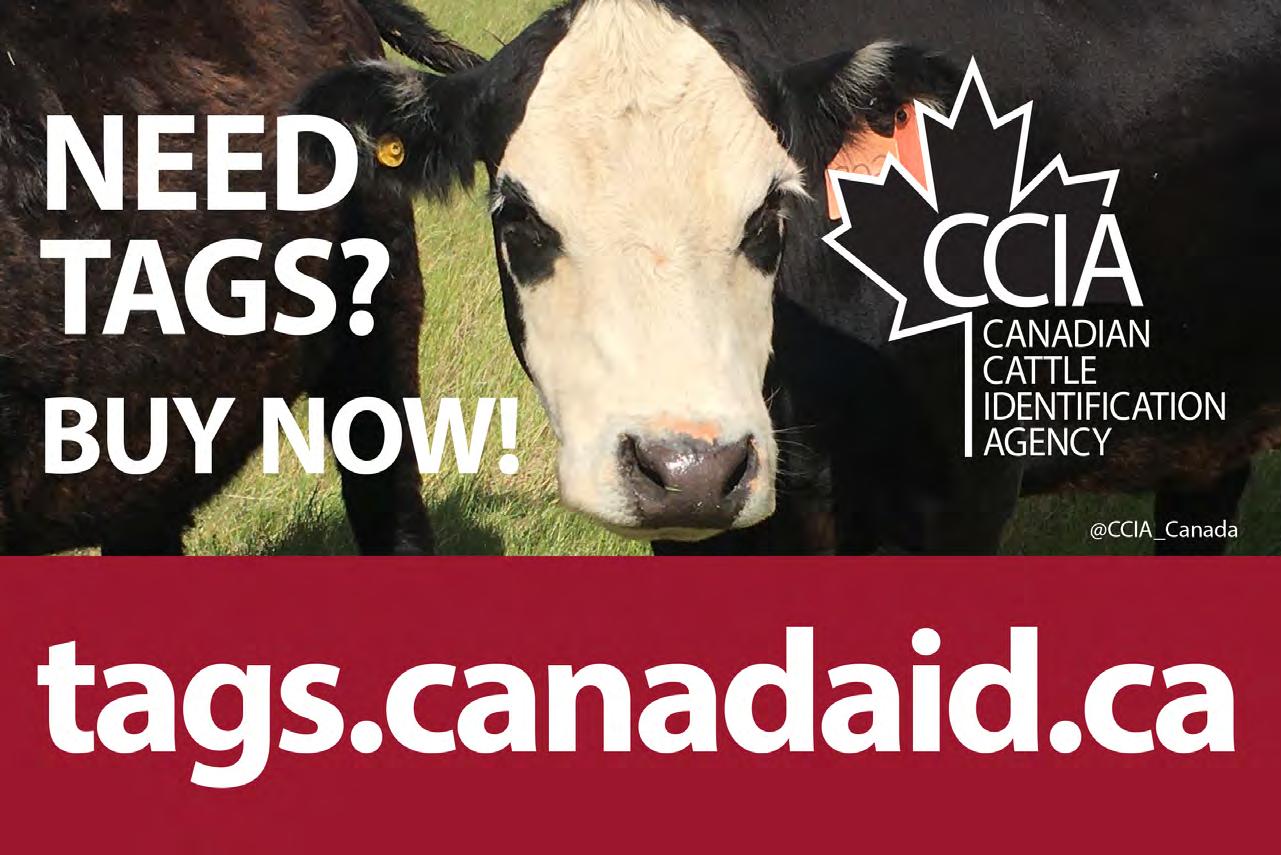

There was a minimal increase in this category of 1% (932 to 937), while Persons reported Missing increased the most, up by 22% (73 to 89), followed by Wellbeing Checks up by 12% (133 to 149). Decreases were noted in Breach of Peace down by 21% (186 to 147) along with Assistance to General Public, down by 6% (185 to 174).
East District: 5% (7,239 to 7,595)
West District: 7% (5,092 to 5,441)
North District: -10% (7,093 to 6,363)
Overall, the districts’ occurrence counts (combined) decreased by less than 1% (from 19,424 to 19,399), with Manitoba North District experiencing the largest decrease of -10% and Manitoba West District having the largest increase of +7%.
All districts reported increases in Crimes against Property. The largest category increase occurred in Drug Enforcement in the West District, while the largest decrease occurred in Common Police Activities in the North District.
For a listing of the communities served by each District, please visit: https://www.rcmpgrc.gc.ca/mb/stats/districts-eng.htm.
During August 2022, Manitoba East District reported an increase in the Crimes against Property category, over the same period in 2021. The following increases and decreases are being highlighted:
This category had a minimal decrease of 3% (463 to 451), with the largest decrease seen in Sexual Offences, which were down by 55% (58 to 26). The largest increase occurred in the Robbery/ Extortion/ Harassment/ Threats subcategory which was up by 36% (118 to 161).
Crimes against Property was up 28% (889 to 1139), with the largest increase occurring in Theft over $5000 up 101% (74 to 149), followed by Arson up 100% (3 to 6) and Break & Enter next, up by 68% (80 to 134).
Drug Enforcement decreased by -41% (54 to 32 occurrences); more specifically, Trafficking was down 45% (from 33 to 18 occurrences) and Possession went down 33% (18 to 12).
During August 2022, Manitoba West District reported increases in three sub-categories and no change in the fourth, over the same period in 2021. The following increases and decreases are being highlighted:
(October 7, 2022 RCMP News Release) Calls for Service - August 2021 to August 2022:Overall the category increased by 19% (646 to 771) with Breach of Peace reporting the largest increase, up 24% (129 to 160 occurrences) and Wellbeing Checks up by 20% (101 to 121) and Suspicious Person/Vehicle/Property also up 20% (275 to 330).
There was relatively no change overall in Crimes against Person reporting 0% (335 to 336 occurrences).
This category increased overall by 44% (646 to 928); of note, Theft under $5000 was up 81% (141 to 255 occurrences) and Break and Enter increased 64% (78 to 128), as well as Arson, which was also up 64% (11 to 18), with Theft over $5000 next, up by 39% (71 to 99).
Drug Enforcement was up 53% overall this month over the same time last year (30 to46 occurrences), with Trafficking increasing 58% (19 to 30) and Possession increasing 40% (5 to 7).
During August 2022, over August 2021, Manitoba North District reported an increase in Crimes against Property but decreases in all
three other categories. The following increases and decreases are being highlighted:
Common Police Activities decreased by 36% overall (1103 to 704), with Breach of Peace down 50% (549 to 274), and Persons reported Missing down 49% (222 to 114). The largest increase occurred in Suspicions Person/Vehicle/Property up 14% (86 to 98).
There was an overall decrease of 17% (1145 to 946 occurrences), with Forcible Confinement down 46% (13 to 7) and Sexual Offences down 31% (74 to 51).
This category had an overall increase of 15% (1176 to 1354) with the highest sub-category increase occurring in Mischief, up 22% (889 to 1086). Possession of Stolen Goods decreased by 38% (13 to 8), and Arson was down 10% (20 to 18 occurrences).
Overall, Drug Enforcement decreased by 30% (47 to 33), with the largest decrease in Possession, down 75% (8 to 2), and then Trafficking, down 32% (34 to 23).
The complete statistics can be found here: https://www.rcmp-grc.gc.ca/mb/stats/indexeng.htm.
Name(s): Farm Name: Address:
Phone: Email: PLEASE ATTACH A WORD DOCUMENT WITH THE FOLLOWING INFORMATION:
1. Provide a description of your farm including the environment it operates in.
2. What have you done/what are you doing to improve environmental management on your farm?
3. What are your challenges and successes? Please include high-resolution images and data which help show measurable results.
4. What factors have enabled you to make management changes? (e.g. Working with conservation organizations, programs such as the Environmental Farm Plan, funding support, education, etc.)
5. What are your environmental goals for the future and how do you plan to carry them out?
6. Include two letters of reference that speak to your leadership in conservation.
Please limit your application to 10 pages (not including letters of reference and photos). Electronic applications are preferred and a single, complete PDF document is requested. A sample application from previous years can be found online at https://www.cattle.ca/sustainability/theenvironmental-stewardship-award/how-to-nominate/

Contact your provincial organization listed on the previous page to determine when your association requires you to submit your application for the provincial award.
A selection of no less than ten high-resolution images suitable for reproduction on social media, print etc.
Video presentation link if available, media stories/ broadcasts showcasing your stewardship efforts.
TESA sponsorship program is available to appropriate organizations that wish to affiliate themselves with the CCA’s TESA program. In addition to showing support for environmental stewardship and Canada’s beef cattle producers, the program also provides the opportunity to join industry leaders, government representatives and nearly 60,000 Canadian beef farms in the national discussion on environmental issues affecting the industry. For more information, visit www.cattle.ca/what-is-tesa

For more than 65 years, MNP has been helping beef producers get the most from their operations. Whether you are looking to pass the farm on to the next generation, improve your profitability, be more competitive or expand MNP’s beef industry specialists will help you get the results you’re looking for. To find out what MNP can do for you, contact Marvin Slingerland, Partner, MNP Lethbridge, at Director of Livestock Services at 1.800.661.8097 or Marvin.Slingerland@mnp.ca



Safely dispose of unwanted or obsolete agricultural pesticides and livestock/equine medications –no charge! Take them to the following locations on the dates noted between 9 a.m. and 4 p.m.
ARNAUD
Thursday, Oct. 27 G J Chemical Co. Ltd. 96 Smith Ave West 204-427-2337
BALDUR Friday, Oct. 28 Baldur Agro 121 2nd St 204-535-2598
BEAUSEJOUR
Wednesday, Oct. 26
Nutrien Ag Solutions 73010 Road 40 off Hwy 44 SE 10-13-7E 204-268-3497

BRANDON Thursday, Oct. 27 Richardson Pioneer 14 km west on Hwy 1, then 1/4 mile south on Pioneer Rd. 204-727-5353
BRUNKILD
Monday, Oct. 24 MK Agro 3062 Road 39 NW 204-736-4769
DAUPHIN Monday, Oct. 24 Dauphin Co-op AGRO 601 Whitmore Ave E 204-622-6080
DELORAINE Monday, Oct. 24
Nutrien Ag Solutions Hwy 3 & Broadway St. S 204-747-2877
GLADSTONE Monday, Oct. 24 Neepawa-Gladstone Coop Road 69, Hwy 16 (4 miles W of Gladstone) 204-385-2906
INGLIS
Wednesday, Oct. 26 Prairie Giants Crop Supply 2 km East of Hwy 83 on PR 366 204-564-2293
MEADOWS
Thursday, Oct. 27 Ag Advantage Ltd 68156 Road 6 W 204-322-5351
MELITA
Tuesday, Oct. 25 Cargill 7 km SW of Melita on Hwy 83 204-522-3221
PORTAGE LA PRAIRIE Friday, Oct. 28 Portage Agri-Sales 11 Can-Oat Dr 204-857-7838

RIVERS
Friday, Oct. 28 Redfern Farm Services 102 2nd Ave 204-328-5325
SHOAL LAKE Thursday, Oct. 27 Shur-Gro Farm Services Ltd. 236 Industrial Park Rd. 204-759-4240
ST. LEON Tuesday, Oct. 25 Pembina Coop 49079 Road 25N 204-744-2850
STANLEY Wednesday, Oct. 26 Cargill 12137 Road 25W 204-325-9551
STEINBACH
Friday, Oct. 28 Clearview Coop 33124 Road 39 N (at Hwy 12N, between Steinbach and Blumenort) 204-326-9921
SWAN RIVER Tuesday, Oct. 25 Cargill 2 miles south on Hwy 83 204-734-5747
TEULON
Tuesday, Oct. 25 Willis Agro 11034E Road 95N 204-461-0386
VIRDEN Wednesday, Oct. 26 Core Ag Inputs 320 Chester St. E 431-763-3536

Manitoba Agriculture staff will lead free workshops on how to search and find the information you need on the Manitoba Agriculture website. Learn how to:
• find financial assistance information
• fill out online applications
• save, attach and email online applications
• navigate through the site in general
Evening workshops run from: 5 p.m. to 6:30 p.m. or 7 p.m. to 8:30 p.m.
Tue, Nov 8, 2022 - Gimli, MB
East Interlake Watershed District Office, 74 First Ave
Thur, Nov 10, 2022 - Ashern, MB
Fieldstone Ventures Education, 61 Main Street.
Tue, Nov 15, 2022 - Swan River, MB
Swan Lake Watershed District Office, 559-4th Ave N.
Thur, Nov 17, 2022 - Inglis, MB
Assiniboine West Watershed Office, Building 211, P.R.# 366.
Mon, Nov 21, 2022 - Virden, MB
Virden Provincial Building, 247 Wellinton Street W.
Wed, Nov 23, 2022 - Deloraine , MB
Souris River Watershed Distict Office, 102 Broadway St. S.
Fri, Nov 25, 2022 - Holland, MB
Redboine Watershed District Office, 109 Broadway Street.
Tue, Nov 29, 2022 - Carberry, MB
MB Crop Dive rsification Centre, Jct of Hwys #1 and #5, N on #5.
Thur, Dec 1, 2022 - Vita, MB
RM of Stuartburn Office, 108 Main St.
Wed, Nov 9, 2022 - Lundar, MB
West Interlake Watershed District Office, 9 Main Street.
Mon, Nov 14, 2022 - The Pas, MB
The Pas Provincial Building, 3rd St and Ross Ave
Wed, Nov 16, 2022 - Ethelbert, MB
Inter-Mountain Watershed District Office, P.R. # 274.
Fri, Nov 18, 2022 - Minnedosa, MB Minnedosa United Church, 48 Main St. S.
Tue, Nov 22, 2022 - Reston, MB
Souris River Watershed District Office, 4th St & 4th Ave.
Thur, Nov 24, 2022 - Manitou, MB
Pembina Valley Watershed District Office, 261 Main Street.
Mon, Nov 28, 2022 - Ochre River, MB Ochre River Community Hall, 401 Mann St
Wed, Nov 30, 2022 - Carman, MB MB Agriculture Carman, 65 3rd Ave NE.

Fri, Dec 2, 2022 - Steinbach, MB Roadhouse 52, 375 N Front Dr unit b
Registration is required as spaces are limited. For more information or to reserve your preferred location and time, call 1-844-769-6224, or email agriculture@gov.mb.ca

An
from MBP October 7, 2022 mbbeef.ca

The government has expanded its inter-provincial agreement with the Western College of Veterinary Medicine (WCVM) at the University of Saskatchewan to provide increased annual funding for the acceptance of an additional five Manitoba students beginning in 2023-24, as part of its strategy to build the province’s animal health-care capacity.
(October 7, 2022 Province of Manitoba News Release) The Manitoba government has finalized further details of its new plan to attract, train and retain veterinarians to support commercial agriculture in rural areas, Agriculture Minister Derek Johnson announced today.

“Our government has invested in this new strategy to address the critical shortage of veterinarians providing care for commercial livestock and poultry operations in rural Manitoba,” said Johnson. “The agricultural sector is vital to our provincial economy and we are committed to providing support to address the sector’s needs.”
Manitoba currently receives 15 guaranteed subsidized seats at the Saskatoon-based WCVM for new entrants annually. The province will increase its funding contribution to WCVM by $539,200 for the 2023-24 academic year to a total of $7,009,600, raising the number of Manitoba intake students to 20 from 15 and to a student quota – the number in the four years of the program – to 65 from 60. The province’s gradually increasing funding commitment will bring its intake to 20 seats from 15 seats every year until it supports 80 Manitoba students annually through the four-year program.
Given the particular need for veterinarians to support commercial livestock and poultry operations in rural Manitoba and for improved biosecurity, the five new intake seats will be targeted for an expansion of veterinary care for the agricultural sector.
Manitoba Agriculture will work closely with WCVM to attract and select students with the rural background, knowledge and passion to become successful as veterinarians who will return to rural Manitoba to support the livestock and poultry industries.
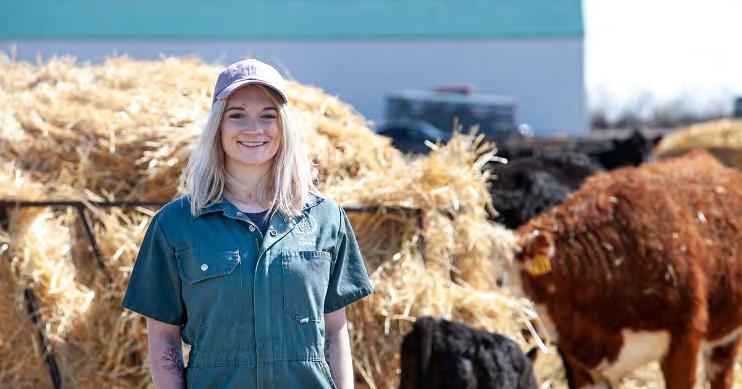 Photo credit: https://www.facebook.com/WCVMToday
Photo credit: https://www.facebook.com/WCVMToday
•
• SERVICES: Whetheryouareaspecialtyproducerlookingtoget yourproducttoaspecificmarketordistributor,orifyouareproducing commoditylivestockforsale,wecanpartnerwithyou.Fromour multi-speciescapabilitiestoourabilitytohandlesmallervolumes,we offerexcellentcapabilitiesforproducersintheCanadianPrairiesto maximizetheirprofitability.

• FACILITY: Wehaveastate-of-the-artfacilitytoallowusto reachmarketsacrossCanada,theUSA,andbeyond.Weunderstand producer'sneeds,theircarefortheiranimals,andtheirhonest, straightforwardnature.Callustohearhowwecanworktogethertoget yourproducttomarket.
www.truenorthfoods.ca

 GRASSFED: "TrueNorthFoodsispartneredwithA&WCanada tosupplyCanadiangrassfedbeefforA&Wsgrassfedburgerprogram.
GRASSFED: "TrueNorthFoodsispartneredwithA&WCanada tosupplyCanadiangrassfedbeefforA&Wsgrassfedburgerprogram.
Along with these attributes, students who are selected will be expected to have:
• an expressed desire to pursue veterinary practices in commercial agriculture in rural Manitoba;

• a solid academic foundation through achievement in a university-level animal science program; and
• practical knowledge and experience in the livestock or poultry industries, gained through significant experience prior to enrolment.
“Our government will collaborate with stakeholders and WCVM in upcoming years to ensure the objectives of this targeted approach are met,” said Johnson. “Manitoba Agriculture will also work with educational institutions, agricultural organizations and other
stakeholders to ensure information on the new strategy is shared widely.”
More technical criteria for the new intake seats will be developed for 2024-25 and beyond, Johnson added.
“This is an important step toward addressing the shortage of veterinarians in rural Manitoba,” said Tyler Fulton, president, Manitoba Beef Producers. “We appreciate the focus on recruiting students who have a direct interest and first-hand experience in working with animals, and who have been raised in a rural environment. We thank the provincial government for its investment in training more vets.”
In addition, Manitoba Agriculture is exploring options to work collaboratively with the industry to further support these efforts to address its labour market needs, Johnson said.
The success of the Canadian beef industry lies in the strength of its next generation. Today's young leaders are actively contributing to the climate change solution, building a legacy for future successors, and continuously looking for ways to enhance resiliency and drive growth in Canada'sbeefcattlesector.
We are pleased to share that beginning October 3, 2022, the Canadian Cattle Association's (CCA) two industry-leading youth development programs will be known by new names. These names will further align the programs with CCA, where the addition of "Canadian" strengthens ournationalidentifywhentheseyoungleadersrepresentourindustryontheworldstage.

Canadian Cattle Young Leaders (CYL) welcomes young people ages 18-35 across Canada, involved in various aspects of the beef supply chain, to be paired with an industry leader in their specific area of interest for a nine-month mentorship. The program also offers unique domestic and international beef industry learning and travel opportunities. Through mentorship, networking and travel, the Canadian CYL Program acts as an industry succession planning tool to equip the next generation of leaders with the skills and tools they need to continue to drive the growth and profitability of the Canadian beef industry. Since established by the Canadian Cattle Association in 2010, the program has seen over 160 CYL graduates.
Applications are open annually for ages 18-35 on our website from January - March.
The Canadian Cattle Youth Council represents the next generation of beef farmers and ranchers across Canada as a subsidiary of the Canadian Cattle Association and welcomes young beef enthusiasts between the ages of 18-40. The vision of the council is to cultivate youthful leadership by exposing young delegates on the council board to industry policy development, while creating opportunities to gain experience and bring fresh ideas to the Canadian Cattle Association and Canadian beef cattle industry. The council also strives to be a conduit of information between industry organizations and the youth of the beef industry.
Ages 18-40 can sign up for FREE as a member of the Canadian Cattle Youth Council on our website.


www.canadiancattleyoungleaders.ca
Follow us on social media at @CdnCYL
www.canadiancattleyouthcouncil.ca
Follow us on social media at @CanCattleYouth

If you prefer, a hard copy of the survey is also found in this edition of the MBP e-newsletter, along with a backgrounder on the program and changes made to it in recent years
Please mail hard copies of the completed survey to:
Manitoba Agriculture
Producers are reminded that the Manitoba government has announced a consultation related to the Agricultural Crown Lands (ACL) Program and forage leases as part of is continuing review of the program.
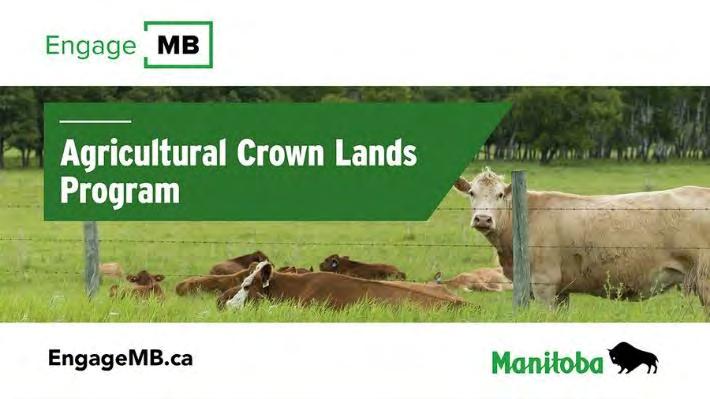
As per the province’s September 28 news release, “Manitoba Agriculture is exploring other policy, program, regulation and service improvements to enhance the productivity and sustainability of agricultural Crown forage lands including mechanisms for leaseholders to invest in productivity and adjustments to the terms and conditions of leases.
To participate in the online version of the survey visit http://engagemb.ca/agcl-forageleases.
ATTN: Marnie Carey 816-401 York Ave Winnipeg, MB R3C 0P8
As noted, the online survey closes on October 28, 2022, and have your hard copies of it mailed to the department by October 28 as well
To read the news release where this consultation was announced (and which also refers to the provincial government implementing a temporary three-year rent reduction for forage leases on agricultural Crown lands commencing in 2023) go to: https://news.gov.mb.ca/news/index.html?item =56479&posted=2022-09-28

Manitoba Agriculture has heard from forage lease holders through their letters and through various meetings. Several concerns were raised about rents, lease terms and conditions, land productivity, and programs/services. The following discusses current policies on ACL.
Forage rents are calculated using a market based formula in regulation: 3.5% of the market price of beef x the number of cows that the land can sustain (i.e. “animal unit months”, or AUMs, which is a measure of the productivity of the land). Forage lease rent is A x B x 3.5% (where A = AUM, B = price of cattle).
Previously, rents were frozen at artificially low rates since 2014, at about $2/AUM, and were based on a triennial survey. Lessees are currently paying $7.19/AUM, or about $48 for 5 months of feed per cow-calf pair (for reference Saskatchewan 2022 grazing rates are $8.18 per AUM).
Rental rate transition: In 2019, the rental rate remained at $2.13 per AUM. In 2020, the rental rate was the average of the 2019 rate and the amount described in the formula. In 2021 and thereafter, the rent is determined using the formula. In addition, rent is now payable by December 31, rather than at the end of the production year as had been the practice in the past.
Forage lease terms are 15 years. Those who had forage leases prior to 2019 (i.e. “legacy leaseholders”) can transfer their lease to immediate family members only in perpetuity. For partnerships and corporations, leases obtained prior to 2019 can be transferred to an existing ownership interest in the partnership or corporation in perpetuity.
Leaseholders may surrender their lease at any time without penalty. Surrendering only a portion of a lease can be considered on a case by case basis, depending on the land use impacts and other considerations.

Lifetime leases can no longer be transferred to a third party. This is called a unit transfer. Typically, this involves the transfer of a lifetime ACL lease along with the sale of a farmer’s private property to a non family member. However, those with forage leases prior to 2019 may transfer their leases to immediate family members in perpetuity.
AUM ratings are long term production averages. AUMs are not adjusted annually and are generally conservative. Lands are assessed for AUM using scientific methods based on region, soil type, type of vegetation and other conditions. AUM assessments are always conducted prior to Crown land auctions. Forage lessees are expected to manage the land to maintain or increase long term productivity. AUMs are not adjusted downward if leaseholders are not actively maintaining the land, including controlling encroachment. AUMs are a key part of rent calculations: rent is calculated as 3.5% of the market price of cattle per AUM.
When leaseholders make investments to improve ACL productivity, by policy, Manitoba will not increase AUM assessments on those lands for 10 years.
The 2021 ACL Forage Productivity Pilot Program (ACLFPPP) (75% government funded and 25% applicant funded) funded projects related to forage management techniques to improve productivity and sustainability on Crown land. ACL productivity improvements resulting from the ACLFPPP may not be reflected in AUM assessments for 5-10 years, meaning rents would not be increased due to the improvements. In the pilot, any improvements are owned by lessees. Many years ago, Manitoba offered a Crown Land Improvement Program (CLIP) for leaseholders to develop Crown lands for the purposes of cattle production. CLIP acres are a large part of existing ACLP lands. AUMs on CLIP acres are assessed based on their productivity potential; the onus is on the leaseholder to maintain productivity, for example by limiting encroachment. In cases where the land has not been adequately maintained over the years, resulting in the need for significant redevelopment, there can be delays for the permissions required from the Department to complete this type of work, due to the need for consultations and permits.
The value of improvements on forage leases is settled privately between outgoing and incoming leaseholders within 30 days of the auction. If agreement cannot be reached, the matter is referred to formal arbitration under The Arbitration Act. This is a new system that is relatively untested.
In situations where a leaseholder walks away from a lease and improvements, and they revert to the Crown, the value is known prior to the allocation process, and the value is paid to the Crown at the time of allocation.
Auctions are held in November, in the year prior to use, for various locations throughout the province, with advertisements placed in local newspapers and online, at least 30 days prior to the auction date. Payments must be made in full at the auction, including all of the first year’s rent and local taxes, and any other fees that may be known for the parcel of land.
The Department moved to online auctions during the pandemic. Sometimes, releasing the list of land to be auctioned is delayed due to the department’s generous cancellation policy for non payment. Cancelled and surrendered leases are put on the notification list to First Nations for Treaty Land Entitlement selection prior to auction.
Are you an active AGL forage lease holder? (Choose anyone option)
Did you obtain your forage lease prior to 2019? (Choose anyone option)
Have you ever held an AGL lease? (Choose anyone option)
Do you intend to hold an AGL lease at some point in the future? (Choose anyone option) D Yes



Rent: Forage lease rents are based on a formula that includes the productivity of the land (i.e AUM) and the 3 year average price of beef Specifically , rent is calculated as 3 5% of the 3 year average price of cattle for each cow/calf pair
Lease : Subletting a forage lease (or transferring a lease to someone else) is currently allowed under special circumstances
Which of the following options would you prefer to determine forage lease rents :
(Choose any one option)
D The current formula - based on productivity of the land and the 3 year average price of beef. D Rent set by bid at auction (no formula) with an annual inflationary adjustment. D Don'tknow D Other
Answer this question only if you have chosen Other for Which of the following options would you prefer to determine forage lease rents :
Please specify :
Do you support allowing lease holders to sublet (or transfer) a lease to someone else? (Choose any one option) D Yes 0 No Answer this question only if you have chosen Yes for Do you support allowing lease holders to sublet (or transfer) a lease to someone else?
Should leaseholders be allowed to sublet (or transfer) a lease under any circumstance, or only special circumstances?
(Choose any one option) D Lease holders should be able to sublet (or transfer) a lease at any time for any reason D Lease holders should only be able to sublet (or transfer) a lease under special circumstances D Don 'tknow
Answer this question only if you have chosen Lease holders should only be able to sublet (or transfer) a lease under special circumstances. for Should leaseholders be allowed to sublet (or transfer) a lease under any circumstance, or only special circumstances?
Please specify :
Agricultural Crown lands under a forage lease must be actively managed to maintain productivity (i.e AUM ratings must remain consistent over time), which is a requirement of the lease agreement.
To what degree do you understand how the department determines productivity (or AUM ratings) of the land? Check one : (Choose any one option) D Completely understand how MB AGR determines productivity (or AUM ratings) D Somewhat understand how MB AGR determines productivity (or AUM ratings) D Do not understand how MB AGR determines productivity (or AUM ratings)
Answer this question only if you have not chosen Completely understand how MB AGR determines productivity (or AUM ratings) for To what degree do you understand how the department determines productivity (or AUM ratings) of the land? Check one : What could we do to help you understand the process better? Please check all that apply (Choose all that apply) D Training courses or webinars D Printed materials, like a guide book

Through your commodity association
In person through our AGR representative
How likely would you be to invest in productivity improvements (for example , cross fencing, watering systems, rejuvenating forage stands , managing bush encroachment) if :
Very Somewhat Neitherlikely or Not very Not at all Questions likely likely unlikely likely likely
If your leaseterm could be extended to 20 years (from the current 15 years)
If the province shared in the cost of the improvements
If the province owned the improvements afterward
If there was predictability on the market value at the end of the leaseterm
If the province provided extension servicesto help develop long term management plans
If subletting (ortransferring alease) were madeavailable/easier

For those lease holders who mismanage the land in contravention of the lease that results in a decline in productivity , what would be a reasonable consequence to the lease holder? (Choose any one option)
Cancellation of the lease
Other Answer this question only if you have chosen Other for For those lease holders who mismanage the land in contravention of the lease that results i n a decline in productivity, what would be a reasonable consequence to the lease holder? Please specify :
After an auction, the current process of transferring the crown land improvements from the outgoing lease holder to the incoming lease holder is a negotiation between the parties If a reasonable price cannot be agreed to by negotiation, the parties may go to formal arbitration via The Arbitration Act.
Have you ever participated in this process of negotiating a price to transfer the improvements?
(Choose any one option) D Yes 0 No
Answer this question only if you have chosen Yes for Have you ever partic ipated in this process of negotiating a price to transfer the improvements?
Were you the incoming or outgoing leaseholder?

(Choose any one option) D Incoming D Outgoing
Answer this question only if you have chosen Yes for Have you ever partic ipated in this process of negotiating a price to transfer the improvements?
How satisfactory was the outcome?
(Choose any one option) D Very satisfactory D Somewhat satisfactory D Somewhat unsatisfactory D Not at all satisfactory D Don'tknow
Answer this question only if you have not chosen Very satisfactory for How satisfactory was the outcome? Why was the outcome not satisfactory?
There are several ways that improvements to crown land could be valued to determine a price between outgoing and incoming lease holders Of the below options, please rank your preference :
{Rank each option)
__ Third party appraisal of the market value before auction
__ Third party appraisal of the market value after auction
__ Standard listing of values which would determine in advance the price to be paid for the improvements.
__ The current process of negotiation
__ The value of the listed improvements should be determined by bid at the auction
Are there additional options that should be considered that are not specified in the question above?

Customer Service
A list of land that will be available for auction are typically released in October. Auctions for AGL are typically held in November. Forage lease rent invoices are sent to lease holders in November with rent due in December. Some farmers have said they would like to see a land listing for auctions sooner to allow time to inspect the land for which they may choose to place a bid. In some cases, land listings are delayed due to the department's generous non-payment policy. In the case of non payment of rent, how much time should lapse before a forage lease is cancelled? (Choose any one option)
1 month
2 months
3 months
4 months
5 months
6 months
More then 6 months How well do you understand your annual rent invoice? (Choose any one option)
Fully understand the invoice
Somewhat understand the invoice.
Don 't understand the invoice Answer this question only if you have chosen Don't understand the invoice . for How well do you understand your annual rent invoice? Why do you not fully understand the invoice Please check all that apply (Choose all that apply)
Terminology is complex
Too much information
Not enough information
You don 't read the invoice
Other Answer this question only if you have chosen Other for Why do you not fully understand the invoice Please check all that apply Please specify How do you want to receive information on programs and services related to the AGL? Please check all that apply (Choose all that apply)
Through your commodity and/or farm association



How often do you communicate with your Department of Agriculture representative?
(Choose any one option) 0 Weekly 0 Monthly D 2-3 times per year
Once per year
Less then once per year
How interested would you be in working with a Department of Agriculture representative to develop long-term management plans for your ACL?
(Choose any one option) D Very interested
Somewhat interested
Neutral/don't know
Not very interested D Not at all interested


(October 6, 2022 Joint Federal/Provincial News Release) Manitoba producers will receive higher Excess Moisture Insurance (EMI) coverage levels as part of the AgriInsurance program for the 2023 crop year, federal Agriculture and AgriFood Minister Marie-Claude Bibeau and Manitoba Agriculture Minister Derek Johnson announced.
“Extreme weather conditions continue to challenge and threaten the viability of many producers,” said Bibeau. “With the increasing cost of inputs, these enhancements to the AgriInsurance program’s Excess Moisture Insurance will allow for greater coverage in the event of financial losses.”
Basic EMI coverage is a standard feature of the AgriInsurance program that provides protection against the inability to seed due to wet conditions. Producers can choose increased coverage options at higher premiums. Since 2000, basic EMI coverage has been $50 per acre, while higher coverage options increased in 2014 to $75 and $100 per acre. For 2023, basic coverage will increase to $75 with higher coverage options increasing to $100 and $125.
These changes were made in consultation with producer groups that have expressed interest in higher coverage levels due to rising farming costs. The province’s share of premiums for the 2023 EMI program is estimated to be $8.6 million.
Manitoba Agricultural Services Corp. (MASC) reports there were 866,000 unseeded acres in Manitoba this year (approximately eight per cent of the total acres), resulting in estimated EMI indemnities of $53.5 million.
“The excessive moisture during the growing season this year brought extremely challenging conditions for producers across our province,” said Johnson. “The AgriInsurance program exists for them in these kinds of situations. The newly increased coverage provided through Manitoba Agricultural Services Corporation will bring further assistance and relief to those who need it most.”
MASC will send EMI confirmation letters to all existing AgriInsurance clients later this month to reflect the new coverage levels and premiums. Producers have until Nov. 30 to make changes to their EMI coverage for 2023 by contacting a MASC Service Centre.
Under the Canadian Agricultural Partnership, AgriInsurance premiums for most programs are shared 40 per cent by participating producers, 36 per cent by the Government of Canada and 24 per cent by the Manitoba government. Administrative expenses are paid 60 per cent by Canada and 40 per cent by the Manitoba government.
Manitoba Agricultural Services Corporation (MASC) has recently announced that Manitoba producers will receive higher Excess Moisture Insurance (EMI) coverage levels as part of the AgriInsurance program for the 2023 crop year. For 2023, basic coverage will increase to $75 with higher coverage options increasing to $100 and $125. These changes were made in consultation with producer groups who have expressed interest in higher coverage levels due to rising costs of farming. Producers have until November 30 to make changes to their EMI coverage for 2023 by contacting their MASC Service Centre. For more information on Excess Moisture Insurance, please visit masc.mb.ca.


October 4, 2022, Calgary, AB. – The Canadian Roundtable for Sustainable Beef (CRSB) is seeking public input to proposed changes to the standards for sustainable beef production and processing that form the foundation of the Certified Sustainable Beef Framework (the Framework). An online 60day comment period on the draft updated Standards opens today and runs until December 2, 2022 We encourage all interested parties to provide feedback
The Framework was launched in 2017 to recognize sustainable practices in Canadian beef production and processing, to support sustainable sourcing commitments for the retail and foodservice sector, and to provide credible, science-based assurances for Canadian consumers. As part of a scheduled five-year program review, and following extensive stakeholder consultation, the CRSB’s Framework Committee conducted an in-depth review of each indicator in both standards (beef production and processing), explored areas for improvement, and identified gaps
Proposed changes to the Standards focus on strengthening indicators through monitoring and demonstrating progress, and indicators that align with the 2030 Canadian Beef Goals.
“The engagement of our members and stakeholders during this review demonstrates the commitment across the Canadian beef value chain to continually advance beef sustainability practices, while also aligning with public interest in sustainability”, says Kristine Tapley, Chair of the CRSB Framework Committee. Tapley is the National Sustainability Lead for Ducks Unlimited Canada and a beef producer from Langruth, Manitoba.
“These proposed changes all aim to advance our journey of continuous improvement that is at the heart of the definition of sustainability”, adds Tim Hardman of Fulton Market Group and CRSB Framework Committee Vice-Chair. “We look forward to receiving constructive comments on the changes to the Standards, so that we can continually make improvements to our certification framework”.
Consultation documents, including a summary of proposed changes and full proposed updated standards, along with instructions for comments and suggested recommendations can be found on the NSF Online Consultation Workspace. Visit our Public Consultation webpage for further details.
The Canadian Roundtable for Sustainable Beef (CRSB) advances, measures and communicates sustainability in the Canadian beef value chain in collaboration with its multi-stakeholder membership. It drives continuous improvement through sustainability performance measurement and goals, a voluntary 3rd party sustainability certification program, and projects and initiatives aligned with strategic goals. Learn more at crsb.ca
The Certified Sustainable Beef Framework, known as CRSB Certified, recognizes sustainable practices in beef production and processing, enables sustainable sourcing, and delivers 3rd party certified science-based assurances about sustainable beef production in Canada. Learn more at crsbcertified.ca
NEWS RELEASE: CRSB public consultation on updates to Certified Sustainable Beef Framework NEWS(October 3, 2022 Canadian Grain Commission News Release) Grain producers will now have more time to ask for a Final Quality Determination from the Canadian Grain Commission in the event of a grain grading dispute on their deliveries into Canadian Grain Commissionlicensed primary elevators.
Formerly known as “Subject to Inspector’s Grade and Dockage”, producers can now ask that a sample of their grain delivery be sent to the Canadian Grain Commission for a Final Quality Determination for up to seven calendar days after the date of their grain delivery. This right is available for grain producers who deliver a regulated grain into a Canadian Grain Commission-licensed primary elevator.
The Canadian Grain Commission has implemented these changes to the Canada Grain Regulations to support fair transactions in the Canadian grain sector. These regulatory updates have been made to reflect and keep pace with the current operational realities of grain handling and delivery in Canada.
The amendments clarify how long samples must be stored and allow more flexibility for producers and elevator operators to decide who will store delivery samples and where. In addition, grain producers will not need to be present at the time of delivery to request a Final Quality Determination.
“We are very pleased to implement these enhancements to Final Quality Determination for grain producers. This important producer right now reflects the realities of today’s grain sector and responds to feedback received during the Canada Grain Act review.”
Doug Chorney, Chief Commissioner Canadian Grain CommissionQuick facts
• The Canadian Grain Commission’s consultation on updating grain grading dispute resolution received a total of 13 submissions.
• Grain farmers are now able to request a Final Quality Determination even if they are not present at the time of delivery and for up to seven calendar days after the delivery.
• The regulatory updates allow producers and primary elevator operators more flexibility to agree on who will hold the sample and where.
• The amendments remove the obligation for a sample to be taken in the presence of the person delivering the grain, unless the producer asks to be present.
(Province of Manitoba News Release) The Manitoba government is inviting the public to provide feedback on functional design options for proposed upgrades along Provincial Trunk Highway (PTH) 8, from Provincial Road (PR) 220 to PR 230, Transportation and Infrastructure Minister Doyle Piwniuk announced.
“Upgrades along PTH 8 will improve road safety and better manage traffic volumes,” said Piwniuk. “The feedback we receive through this first round of public engagement will be incorporated into project plans to help ensure the current and future needs of Manitobans.”
The survey is seeking feedback on the following intersections:
• PTH 8 and PR 220 (Grassmere Road) including the east and west service
roads and the future connection of Holmes Road;
• PTH 8 and Northumberland Road;
• PTH 8 and PR 321 (Miller Road);
• PTH 8 and PTH 27 (Parkdale Road); and
• PTH 8 and PR 230 (McPhillips Road).
The survey, which is available until Oct. 20, is also seeking feedback on access management, road alignment and drainage upgrades.
The minister noted the upgrades along PTH 8 are part of the government’s ongoing commitment to building and maintaining a robust grid of reliable highways that support the safe, efficient flow of people and goods.
To complete the survey, visit https://engagemb.ca/login
(October 3, 2022 Government of Canada News Release) Public Services and Procurement Canada (PSPC) wishes to advise motorists that the bridge at the St. Andrews Lock and Dam will be closed to vehicular traffic for deck replacement work during the following period:
• Thursday, October 13, at 7 pm, to Friday, October 14, at 6 am
During this period, all lanes will be closed to vehicular traffic in both directions. Motorists are encouraged to consult local electronic signs for the most up-to-date information.
Travellers are reminded that the bridge will remain open to pedestrians and cyclists. As of October 15, pedestrians and cyclists will be able to cross the bridge using the newly constructed pathway on the north side of the bridge. Cyclists are asked to dismount their bikes when using the walkway.
PSPC encourages users to exercise caution when travelling on the bridge and thanks them for their patience.
(October 5, 2022 Province of Manitoba News Release) The Manitoba government is developing a new $15-million fund to support Indigenous economic development opportunities related to the Lake Manitoba and Lake St. Martin Outlet Channels Project, Transportation and Infrastructure Minister Doyle Piwniuk announced.
The new fund will be administered as a proposal-based funding program, open to 39 Indigenous groups (First Nations, Métis and Northern Affairs communities, and Indigenous organizations) involved in the outlet channels project. The fund will be used to support economic development opportunities related to the outlet channels, and reconciliation in alignment with the principles outlined in the Path to Reconciliation Act.
“Our government understands that concrete and constructive actions are needed to advance reconciliation and ensure Indigenous people have a meaningful voice in any decisions that may impact their traditional lands, rights or interests,” said Piwniuk. “This new fund will support the development of Indigenous-led economic opportunities and long-term economic development in the communities most impacted by the Lake Manitoba and Lake St. Martin Outlet Channels Project.”
The Lake Manitoba and Lake St. Martin Outlet Channels Project involves building two outlet channels, each approximately 23 kilometres long, three bridges and two water-control structures, a 24-kilovolt distribution line and adjusting the surrounding highway infrastructure. The outlet channels will improve
water regulation of Lake Manitoba and Lake St. Martin, reduce the likelihood of flooding on both lakes and lower the risk of flood-related damages, and disruption to communities in the area.
“We know we must collaborate with Indigenous communities involved in the project in the true spirit of reconciliation to ensure the success of this historic endeavour,” said Indigenous Reconciliation and Northern Relations Minister Alan Lagimodiere. “We look forward to ongoing collaboration to ensure the project aligns with the traditional knowledge and Indigenous understanding of the area to improve flood protection, and increase resilience against climate change for all Manitobans.”
Prior to officially launching the fund, the province will collaborate with Indigenous communities to develop a framework for fund. This framework will be developed in collaboration with Indigenous communities involved in the project. Once the fund is officially launched, an evaluation committee made up of representatives from several government departments will review proposals with the potential to partner with other organizations to provide input to the proposal, identify additional funding sources, and support proposal development and training.
The province expects to share more details about program eligibility, the intake process, and funding agreement requirements in the coming months.
For more about the Lake Manitoba and Lake St. Martin Outlet Channels Project, visit www.manitoba.ca/mit/wms/lmblsmoutlets.
LAKE ST. MARTIN COMMUNITIES: 1. Dauphin River First Nation 2. Lake St. Martin First Nation 3. Little Saskatchewan First Nation 4. Pinaymootang First Nation 5. Dauphin River NAC

LAKE MANITOBA COMMUNITIES: 6. O-Chi-Chak-Ko-Sipi First Nation
Ebb and Flow First Nation 8. Lake Manitoba First Nation 9. Kinonjeoshtegon First Nation 10. Misipawistic Cree Nation
Sandy Bay First Nation 12. Skownan First Nation 13. Keeseekoowenin Ojibway First Nation
LAKE WINNIPEG COMMUNITIES: 14. Fisher River Cree Nation
Peguis First Nation 16. Bloodvein First Nation
7. Norway House Cree Nation
Berens River First Nation
Hollow Water First Nation
Brokenhead Ojibway Nation
Sagkeeng First Nation
Black River First Nation
Poplar River First Nation
NORTHERN AFFAIRS COMMUNITIES
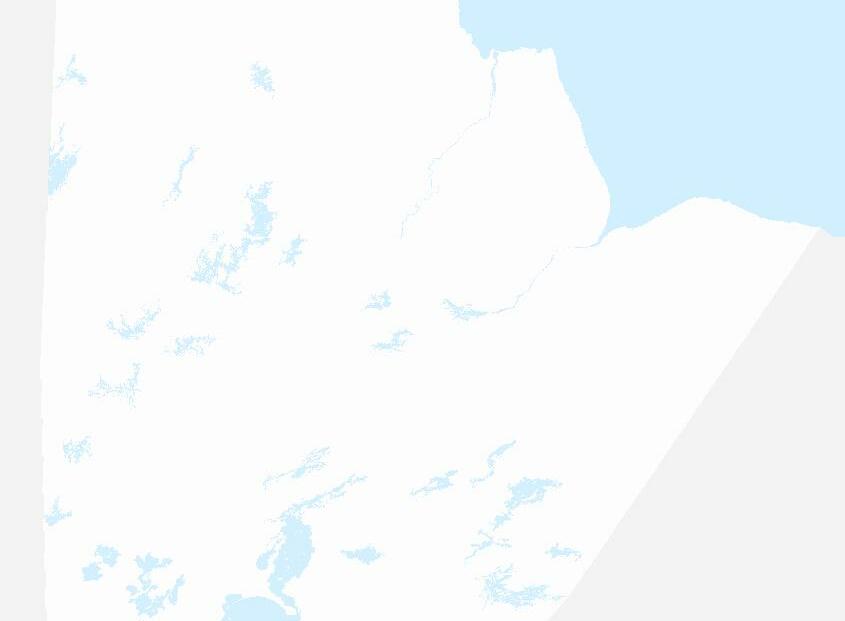
Aghaming NAC
Berens River NAC
Fisher Bay NAC
Loon Straits NAC
Manigotagan NAC
Matheson Island NAC
Pine Dock NAC
Princess Harbour NAC
Seymourville NAC
Norway House NAC
NELSON RIVER COMMUNITIES:
Fox Lake Cree Nation
Pimicikamak Okimawin (Cross Lake Band of Indians)
York Factory Cree Nation
Tataskweyak Cree Nation
OTHER ORGANIZATIONS:
Manitoba Metis Federation
Council of Chiefs of Anishinaabe Agowidiiwinan (First Nations in Treaty 2 Territory)
and fertilizers to producers. In 2021, farmers returned more than three quarters of the containers sold into the marketplace…more than 2.25 million kilograms, edging up the three-year rolling average recovery rate to 77%.
The recycling recovery rate has soared since 2011 when it was 69%. In 2019, it was 71% and in 2020, it was 76%, indicating that producers continue to look for ways they can manage onfarm waste materials in an environmentally appropriate manner.

Cleanfarms’ flagship packaging stewardship program that collects empty plastic pesticide and fertilizer containers for recycling continues to gain ground. Cleanfarms released recovery rates for 2021 showing that Canadian farmers returned 77% of the empty 23L and smaller jugs in 2021, edging up from 71% in 2019. Cleanfarms makes large plastic collection bags, shown here, available at ag retailers to make it easier for farmers to safely manage and return empty containers. – Cleanfarms photo
ETOBICOKE, ON (October 5, 2022) – Canadian farmers/producers continue to demonstrate their commitment to ensuring empty agproduct containers used for pesticides and fertilizers are returned for recycling.
Cleanfarms, the national stewardship organization that develops and operates programs to help producers manage on-farm agricultural waste materials just released the recovery rates for 2021 for ag packaging of various types that is collected for recycling or safe disposal.
The flagship program recovers empty plastic jugs 23L and smaller that deliver ag pesticides
The recovery rate measures the percentage of containers collected for recycling compared to the number of containers sold into the market in that year. The three-year rolling average recovery rate evens out the rate over three years taking into consideration factors that could cause variations such as differing needs due to weather.
“Empty plastic jugs aren’t the only ag containers producers are recycling,” said Cleanfarms Executive Director Barry Friesen. “They are bringing back several essential items used on farms for recycling – like empty non-deposit bulk drums and totes, too. This recycling program for bulk containers is newer, only a few years old. By returning them for recycling, farmers are ensuring the plastic in both smaller and larger containers is used to make new products in a circular economy. We are grateful that producers are responding to the programs in such a positive way.”
In 2021, farmers returned 54% of the bulk containers sold in the marketplace, or more than 71,000 drums and totes. That’s an increase from 50% in 2019 and 52% in 2020.
Cleanfarms also operates a grain bag recycling program in Saskatchewan established under the province’s The Agricultural Packaging Product
Waste Stewardship Regulations (2016). When it got underway in 2018, it was the only government-regulated extended producer responsibility program of its kind in Canada. Since then, Manitoba has established industry responsibility (called extended producer responsibility) on grain bags and twine and PEI has done so on a variety of ag plastics. In June 2022, the Québec government published a new regulation which targets all agricultural plastics. Cleanfarms is operating pilots in Alberta to collect information on grain bag recycling recovery patterns.

Collecting used grain bags in Saskatchewan is growing year over year. In 2018, Cleanfarms recovered 1,257 tonnes of grain bag plastic. In 2021, the rolling three-year average recycling recovery rate was 64%, representing more than 2,100 tonnes of used plastic grain bags.
In eastern Canada, farmers also return seed and pesticide bags for safe disposal, as recycling markets are not available yet. Producers in Quebec also return fertilizer bags. In 2017, when the recovery program got underway in earnest, the three-year recovery rate was 22%.
“Cleanfarms’ recycling programs are like the ‘blue box’ or ‘blue bag’ for growers. We are working every day to find better ways to deliver these programs conveniently and efficiently to producers so that more of these materials can be returned to be repurposed in the circular economy,” Friesen said.
Materials recovered through Cleanfarms’ programs are processed by small and large companies within North America to form recycled plastic pellets and flake that are recycled into new products such as farm drainage tile, dimensional lumber, lawn edging and agricultural film plastics.
Cleanfarms is a national agricultural industry stewardship organization that contributes to a healthier environment and a sustainable future by recovering and recycling agricultural and related industry plastics, packaging and products. It collects materials for recycling and safe disposal through a network of some 1,500 ag retail and municipal partners. It is funded by its members in the crop protection, fertilizer, seed, animal health medication, and ag plastics industries. It has staff located in Lethbridge, Alberta; Moose Jaw, Saskatchewan; Winnipeg, Manitoba; Etobicoke, Ontario; and St-
Name(s): Farm Name: Address:
Phone: Email: PLEASE ATTACH A WORD DOCUMENT WITH THE FOLLOWING INFORMATION:
1. Provide a description of your farm including the environment it operates in.
2. What have you done/what are you doing to improve environmental management on your farm?
3. What are your challenges and successes? Please include high-resolution images and data which help show measurable results.
4. What factors have enabled you to make management changes? (e.g. Working with conservation organizations, programs such as the Environmental Farm Plan, funding support, education, etc.)
5. What are your environmental goals for the future and how do you plan to carry them out?
6. Include two letters of reference that speak to your leadership in conservation.
Please limit your application to 10 pages (not including letters of reference and photos). Electronic applications are preferred and a single, complete PDF document is requested. A sample application from previous years can be found online at https://www.cattle.ca/sustainability/theenvironmental-stewardship-award/how-to-nominate/

Contact your provincial organization listed on the previous page to determine when your association requires you to submit your application for the provincial award.
A selection of no less than ten high-resolution images suitable for reproduction on social media, print etc.
Video presentation link if available, media stories/ broadcasts showcasing your stewardship efforts.
TESA sponsorship program is available to appropriate organizations that wish to affiliate themselves with the CCA’s TESA program. In addition to showing support for environmental stewardship and Canada’s beef cattle producers, the program also provides the opportunity to join industry leaders, government representatives and nearly 60,000 Canadian beef farms in the national discussion on environmental issues affecting the industry. For more information, visit www.cattle.ca/what-is-tesa

For more than 65 years, MNP has been helping beef producers get the most from their operations. Whether you are looking to pass the farm on to the next generation, improve your profitability, be more competitive or expand MNP’s beef industry specialists will help you get the results you’re looking for. To find out what MNP can do for you, contact Marvin Slingerland, Partner, MNP Lethbridge, at Director of Livestock Services at 1.800.661.8097 or Marvin.Slingerland@mnp.ca

